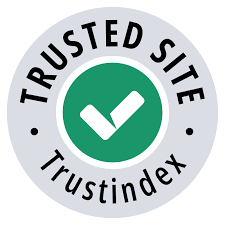Emotional Competence – Workshop 1 (24hr Emotions)

The Appleton Greene Corporate Training Program (CTP) for Emotional Competence is provided by Ms. Goj Certified Learning Provider (CLP). Program Specifications: Monthly cost USD$2,500.00; Monthly Workshops 6 hours; Monthly Support 4 hours; Program Duration 12 months; Program orders subject to ongoing availability.
If you would like to view the Client Information Hub (CIH) for this program, please Click Here
Learning Provider Profile

To be advised.
MOST Analysis
Mission Statement
Coaching session using the Positivity Ratio.Take two minutes to complete the Positivity Self Test now. Your score provides a snapshot of how your emotions of the past day combine to create your positivity ratio.
Objectives
01. Positivity Ratio: departmental SWOT analysis; strategy research & development. Time Allocated: 1 Month
02. Emotion Importance: departmental SWOT analysis; strategy research & development. Time Allocated: 1 Month
03. Workplace Emotions: departmental SWOT analysis; strategy research & development. Time Allocated: 1 Month
04. Positive Emotions: departmental SWOT analysis; strategy research & development. Time Allocated: 1 Month
05. Negative Emotions: departmental SWOT analysis; strategy research & development. Time Allocated: 1 Month
06. Emotional Triggers: departmental SWOT analysis; strategy research & development. Time Allocated: 1 Month
07. Emotional Control: departmental SWOT analysis; strategy research & development. 1 Month
08. Group Emotional Intelligence: departmental SWOT analysis; strategy research & development. Time Allocated: 1 Month
09. Emotional Culture: departmental SWOT analysis; strategy research & development. Time Allocated: 1 Month
10. Increasing Positivity: departmental SWOT analysis; strategy research & development. Time Allocated: 1 Month
11. Resilience: departmental SWOT analysis; strategy research & development. Time Allocated: 1 Month
12. Team Performance: departmental SWOT analysis; strategy research & development. Time Allocated: 1 Month
Strategies
01. Positivity Ratio: Each individual department head to undertake departmental SWOT analysis; strategy research & development.
02. Emotion Importance: Each individual department head to undertake departmental SWOT analysis; strategy research & development.
03. Workplace Emotions: Each individual department head to undertake departmental SWOT analysis; strategy research & development.
04. Positive Emotions: Each individual department head to undertake departmental SWOT analysis; strategy research & development.
05. Negative Emotions: Each individual department head to undertake departmental SWOT analysis; strategy research & development.
06. Emotional Triggers: Each individual department head to undertake departmental SWOT analysis; strategy research & development.
07. Emotional Control: Each individual department head to undertake departmental SWOT analysis; strategy research & development.
08. Group Emotional Intelligence: Each individual department head to undertake departmental SWOT analysis; strategy research & development.
09. Emotional Culture: Each individual department head to undertake departmental SWOT analysis; strategy research & development.
10. Increasing Positivity: Each individual department head to undertake departmental SWOT analysis; strategy research & development.
11. Resilience: Each individual department head to undertake departmental SWOT analysis; strategy research & development.
12. Team Performance: Each individual department head to undertake departmental SWOT analysis; strategy research & development.
Tasks
01. Create a task on your calendar, to be completed within the next month, to analyze Positivity Ratio.
02. Create a task on your calendar, to be completed within the next month, to analyze Emotion Importance.
03. Create a task on your calendar, to be completed within the next month, to analyze Workplace Emotions.
04. Create a task on your calendar, to be completed within the next month, to analyze Positive Emotions.
05. Create a task on your calendar, to be completed within the next month, to analyze Negative Emotions.
06. Create a task on your calendar, to be completed within the next month, to analyze Emotional Triggers.
07. Create a task on your calendar, to be completed within the next month, to analyze Emotional Control.
08. Create a task on your calendar, to be completed within the next month, to analyze Group Emotional Intelligence.
09. Create a task on your calendar, to be completed within the next month, to analyze Emotional Culture.
10. Create a task on your calendar, to be completed within the next month, to analyze Increasing Positivity.
11. Create a task on your calendar, to be completed within the next month, to analyze Resilience.
12. Create a task on your calendar, to be completed within the next month, to analyze Team Performance.
Introduction
Control your energy instead of your time.
Steve Wanner, a partner at Ernst & Small who is 37 years old, is well-liked and married with four young children. He was working 12- to 14-hour days when we first met him, always felt weary, and struggled to completely engage with his family in the evenings, which made him feel guilty and unsatisfied. He had trouble sleeping, didn’t find time to work out, and rarely ate healthy meals; instead, he would grab a snack while he was on the go or sitting at his desk.
Wanner’s situation is not unusual. The majority of us increase our work hours in response to increasing demands at work, but this will eventually have an adverse effect on our physical, mental, and emotional health. As a result, there is a decline in employee engagement, an increase in distraction, high rates of turnover, and skyrocketing medical expenses. Over the past five years, the Energy Project has provided consulting and coaching to numerous large enterprises, working with thousands of executives and managers. These CEOs tell us they’re working harder than ever to keep up with things and that they increasingly feel like they are reaching their breaking point with startling consistency.
The fact that time is a limited resource is the main issue with working longer hours. Another matter entirely is energy. Energy, which in physics is defined as the ability to operate, originates in humans from four basic sources: the body, emotions, mind, and spirit. By establishing specialised rituals—behaviors that are deliberately repeated and meticulously organised, with the objective of making them unconscious and automatic as rapidly as possible—energy can be methodically extended and routinely renewed in each.
The fact that time is a limited resource is the main issue with working longer hours. Another matter entirely is energy.
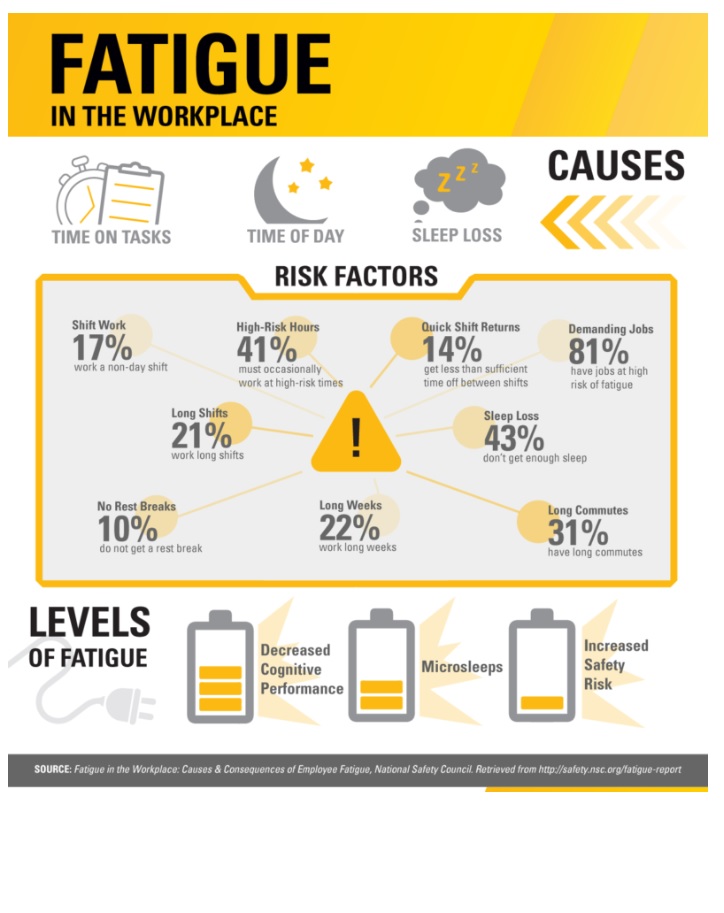
Organizations must change their focus from getting more out of people to investing more in them in order to motivate and enable them to bring more of themselves to work every day. This will effectively reenergize their workforces. Individuals need to take responsibility for changing their energy-draining activities regardless of the situation they find themselves in in order to recharge.
Wanner’s life was changed by the routines and habits he developed to better manage his energies. He gave up drinking because it was keeping him up at night and set an earlier bedtime. Because of this, he awoke feeling more refreshed and inspired to work out, which he now does virtually every morning. He shed 15 pounds in less than two months. He now has breakfast with his family after working out. Wanner continues to put in hard hours at work, but he often rejuvenates himself in the process. He normally goes outside for a morning and an afternoon walk, and he gets up from his desk for lunch. He is more at ease and able to connect with his wife and kids when he gets home in the evening.
Simple rituals like this can be established to produce impressive benefits throughout businesses. We put a group of workers through a trial energy management programme at Wachovia Bank and then compared their output to a control group’s. In terms of a number of financial criteria, including the amount of loans they produced, the participants beat the controls. Additionally, they reported significant improvements in their interactions with customers, their commitment to their jobs, and their level of pleasure.
Wachovia’s Linking Capacity and Performance
The majority of large firms make investments in the knowledge, competence, and skills of their workforce. Few contribute to the development and maintenance of their capacity—their energy—which is frequently taken for granted. In reality, increased capacity enables more to be accomplished in less time with better involvement and sustainability.
How Energy Renewal Programs at Wachovia Increased Productivity

Employees at Wachovia Bank who took part in an energy renewal initiative performed better than a control group,…
Participants were also questioned about how the programme affected them personally. It improved their relationships with clients and customers, according to 68% of respondents. Seventy-one percent of respondents claimed that it significantly or noticeably improved their performance and productivity. These results supported a wealth of anecdotal data we’d gathered about the success of this strategy among executives at other big businesses like Ernst & Young, Sony, Deutsche Bank, Nokia, ING Direct, Ford, and MasterCard.
The Emotions: Energy Level
Regardless of the stress they are under from the outside world, people can increase the quality of their energy when they are able to better manage their emotions. To do this, people must first become more conscious of their emotions and the effects those emotions have on their productivity during the course of the workday. Most people are aware that their performance tends to be at its highest when they are feeling upbeat. They find it shocking that when they are feeling any other way, they are unable to lead or perform successfully.
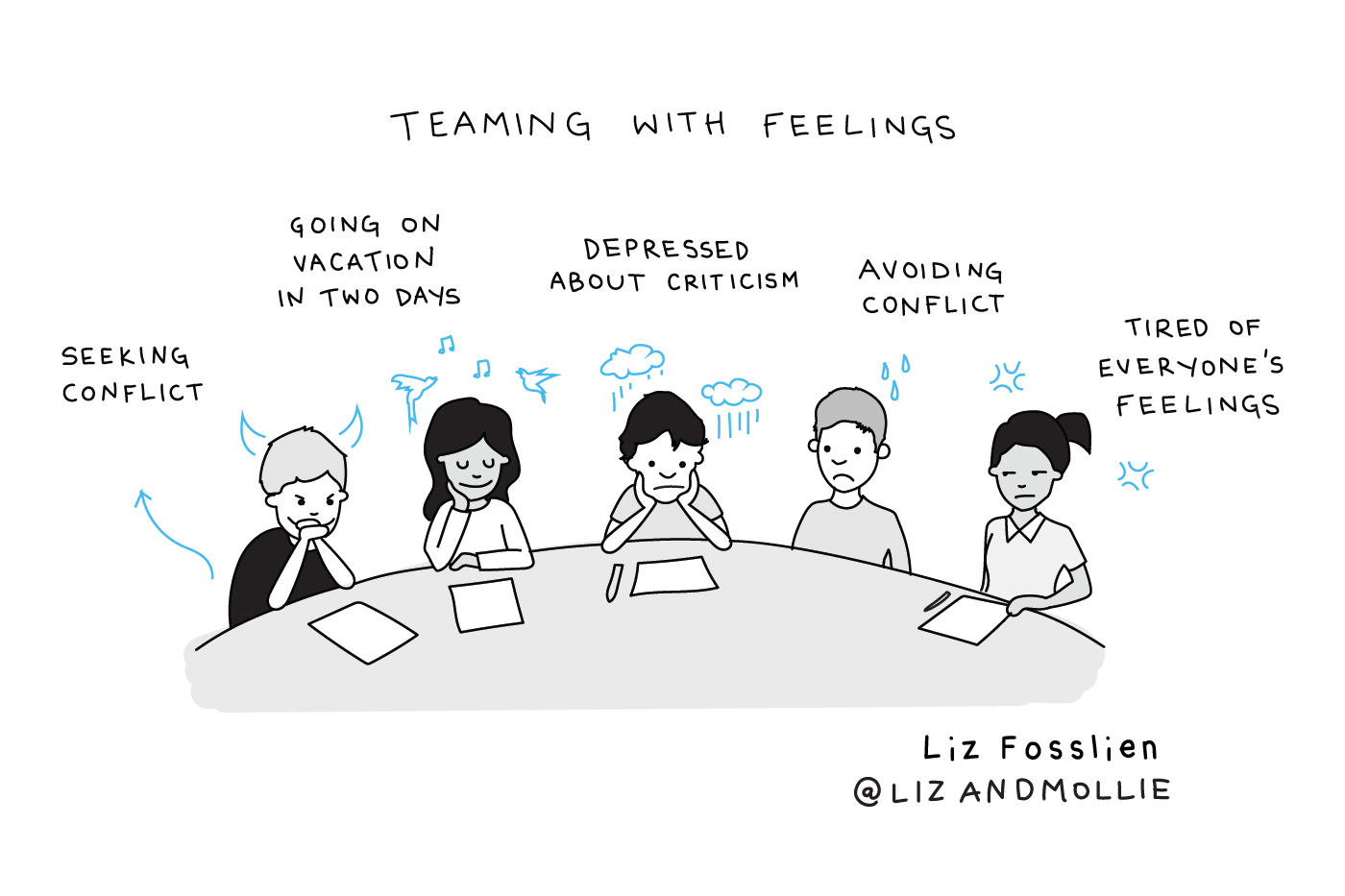
.
We are unfortunately not physiologically able to sustain intensely joyful feelings for extended periods of time without intermittent recovery. When faced with constant demands and unforeseen difficulties, people frequently experience negative emotions (the fight-or-flight response) several times during the day. They start to feel nervous and insecure, perhaps angry and impatient. Such mental states sap people’s energy and lead to conflict in their interpersonal connections. Clear, logical, and reflective thought are also all but impossible when experiencing fight-or-flight feelings. Executives have a higher ability to control their reactions when they learn to identify the circumstances that make them feel bad.
Expressing gratitude to others, a ritual that seems to be as helpful to the giver as it is to the receiver, is a strong one that fosters happy emotions. It can be delivered orally, in writing, via email, phone call, or in-person interaction, and the more exact and thorough, the more powerful the message. Like other rituals, the likelihood of success is greatly increased by designating a specific time to carry it out. Ben Jenkins, vice chairman and president of the General Bank at Wachovia in Charlotte, North Carolina, included his ritual of appreciation into the allotted period for mentoring. He started scheduled frequent lunches or dinners with his employees. Previously, he had only met with his direct reports to offer them annual performance reviews or to receive monthly updates on their financial success. He now prioritises praising their achievements and conversing with them about their lives and objectives during meals rather than their immediate job obligations.
Finally, by learning to alter the stories they tell themselves about the events in their lives, people can learn to nurture positive feelings. Conflicted individuals frequently play the victim, attributing their issues to other people or outside forces. Understanding how the facts of a situation differ from how we interpret those facts can be powerful in and of itself. Many of the individuals we work with have found it to be a revelation that they have a choice in how they interpret an event and that their story has a significant impact on the feelings they experience. Without downplaying or rejecting the realities, we instruct students to provide the most upbeat and personally empowered narrative they can in any given circumstance.
By learning to alter the narratives they tell themselves about the events in their lives, people can learn to cultivate positive energy. We instruct them to tell the most upbeat tales we can.
The best method to change a tale is to look at it from one of three new perspectives, all of which are different from the victim’s point of view. For instance, while using the reverse lens, individuals ask themselves, “What would the other person in this conflict say and in what ways might it be true?” They question, “How will I most likely evaluate this issue in six months?” using the long lens. They question themselves, “Regardless of how this issue turns out, how can I develop and learn from it?” using a broad lens. Each of these perspectives can assist individuals in consciously cultivating more joyful emotions.
When Sony experienced many battery recalls in 2006, Nicolas Babin, head of corporate communications for Sony Europe, served as the lead person for calls from reporters. Over time, he grew more and more worn out and discouraged by his duties. He started figuring out methods to tell himself a more empowering and positive story about his role after completing the lens exercises. He says, “I realised that this was an opportunity for me to build stronger relationships with journalists by being accessible to them and to increase Sony’s credibility by being straightforward and honest.”
The Mind: Energy Concentration
Given all the responsibilities that executives must juggle, multitasking is often seen as necessary, but it actually reduces productivity. Distractions cost money. Switching time is the phenomena whereby the amount of time required to complete the primary activity rises by as much as 25% when attention is briefly diverted from one work to another, such as pausing to answer an email or accept a call. It’s much more effective to give your complete attention for 90 to 120 minutes at a time, break truly, and then give your full attention to the following task. These work sessions are referred to as “ultradian sprints.”
People might develop rituals to lessen the many disruptions that technology has introduced into their life once they become aware of how difficult it is for them to focus. We begin with a practise that makes students confront the effects of daily distractions. People remark that when they try to finish a difficult work but are frequently interrupted, the experience feels a lot like ordinary life.
Focusing systematically on tasks that have the most long-term leverage is an additional strategy for mobilising mental energy. If more difficult work isn’t specifically scheduled into their calendar, individuals frequently put it off or rush through it. The CEOs with whom we work have probably found that choosing the biggest issue for the following day each evening and making it their top priority when they wake up is the most effective focus ritual. As many people do, Jean Luc Duquesne, a vice president for Sony Europe in Paris, used to respond to his e-mail as soon as he arrived at work. He now makes an effort to focus on the most crucial subject for the first hour of each day. At 10 in the morning, he discovers that he frequently feels as though his day has already been productive.
The Human Spirit: Meaning and Purposeful Energy
When people’s daily job and activities are in line with the things they value most and that give them a feeling of meaning and purpose, they are able to access the power of the human spirit. They usually feel more upbeat, have better concentration, and show more endurance when the work they’re doing matters to them. Unfortunately, corporate life’s high expectations and quick speed allow little time for thought on these matters, and many individuals aren’t even aware that meaning and purpose can be sources of energy. Indeed, it is likely to have little effect if we attempt to start our programme by emphasising the human spirit. Participants don’t fully understand how attending to their own deeper needs has a significant impact on their performance and job satisfaction at work until after they have experienced the usefulness of the rituals they build in the other dimensions.
Jonathan Anspacher, a partner at E&Y, found it exhilarating and instructive to simply have the chance to ask himself a series of questions about what truly meant to him. He advised us to ask ourselves, “What do you want to be remembered for?” and to be a little self-reflective. “You don’t want to be known as the crazy partner who put in such long hours and caused his team to suffer. Can you come to my band’s show when my kids phone and ask? I want to confirm that I’ll attend and that I’ll sit in the first row. I don’t want to be the dad who enters the room, sits in the back, checks his Blackberry, then gets up to answer the phone.
The three categories of doing what they do best and enjoy most at work, consciously allocating time and energy to the areas of their lives they deem most important—work, family, health, and service to others, and living their core values in their daily behaviors—are necessary for people to access the energy of the human spirit.
It’s crucial to understand that your best qualities and your favourite activities aren’t necessarily mutually exclusive while trying to figure out who you are and what you enjoy doing most. Even when you excel at something and receive tonnes of compliments on it, you might not actually enjoy it. On the other hand, you can love doing something but not have a talent for it, in which case putting up the effort necessary to succeed is not worthwhile.
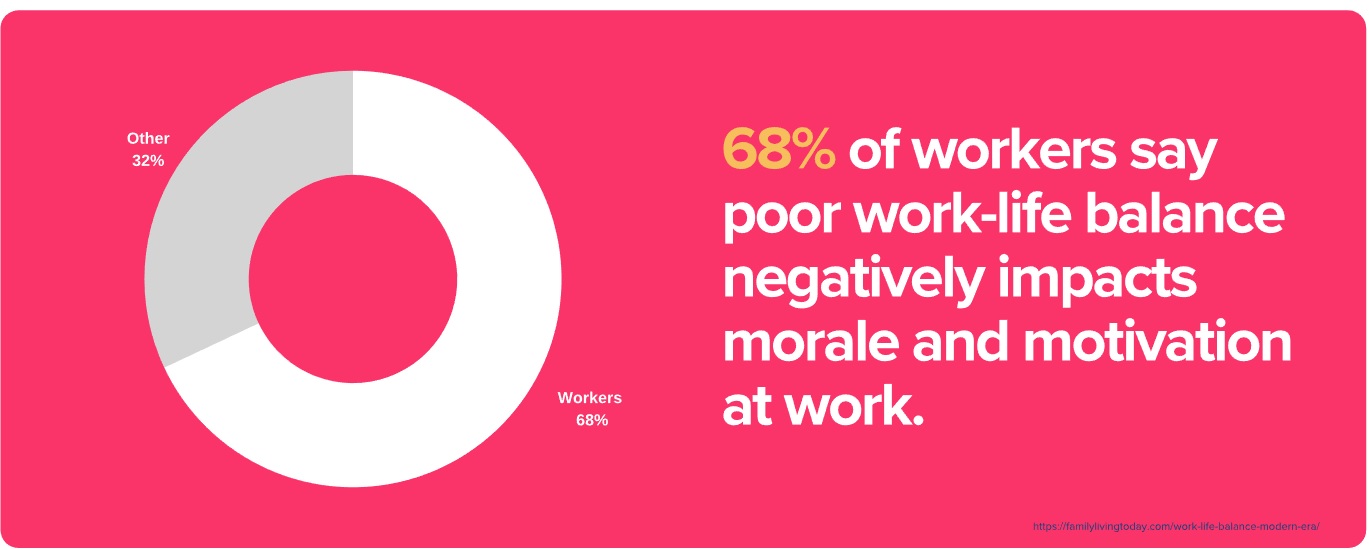
We invite programme participants to think back on at least two professional experiences from the previous several months during which they felt effective, effortlessly absorbed, inspired, and fulfilled. This will help them identify their areas of strength. Then, we ask students to analyse those events to determine precisely what motivated them in such a positive way and what particular skills they were using. Is being in command or engaging in creative work more energising, for example, if leading strategy seems like a sweet spot? Or is it practising a skill that naturally comes to you and makes you feel good? Finally, we ask participants to create a ritual that will motivate them to engage in more of precisely that kind of work activity.
There is frequently a comparable gap between what individuals say is important and what they actually do in the second category, investing time and attention to what is important to you. Rituals may be able to bridge this gap. Spending time with his family was the thing that meant most to Jean Luc Duquesne, the vice president of Sony Europe, yet it frequently got squeezed out of his day when he gave it any serious thought. So that he could concentrate on his family, he established a ritual in which he switches off for at least three hours every evening when he gets home. He admitted to, “I’m still not an expert on PlayStation,” he said, “but according to my youngest son, I’m learning and I’m a good student.” When Steve Wanner commuted home, he used to talk on his cell phone all the way to his front door. Now, he has a designated location 20 minutes from his home where he finishes calls and puts his phone away. In order to be less focused on work and more available to his wife and kids when he gets home, he relaxes for the remainder of his drive.
Many people find it difficult to live out their primary principles in their daily activity, which falls under the third category. Most people move through life at such a rapid speed that they rarely take time to reflect on their values and goals. As a result, they allowed outside pressures to direct their behaviour.
We don’t advise people to state their values openly because the outcomes are typically too predictable. As an alternative, we try to elicit them, in part by using unintentionally illuminating questions like, “What are the attributes that you find most repulsive when you see them in others?” People accidentally reveal what they stand for by expressing what they can’t tolerate. For instance, if you find stinginess to be particularly offensive, generosity is certainly one of your core values. Consideration is probably a high value for you if you are particularly offended by rudeness in others. Similar to the other categories, creating rituals can aid in bridging the gap between your current behaviour and the values you aspire to. The practise can be to terminate meetings you run five minutes earlier than usual and purposefully arrive five minutes early for the meeting that comes next if you find that thoughtfulness is a core value but you are consistently late for meetings.
People can make significant progress toward reaching a higher feeling of alignment, pleasure, and well-being in their life both on and off the job by addressing these three categories. These emotions themselves are a source of good energy, and they encourage participants to stick with rituals in other energy dimensions as well.
Only to the extent that firms encourage their employees to adopt new behaviours will this new method of working become widespread. We have discovered, sometimes painfully, that not all business leaders and organisations are willing to accept the idea that employee personal rejuvenation would result in higher and more long-lasting performance. Renewal initiatives require strong backing and dedication from senior management, starting with the primary decision maker.
Several hundred leaders at Sony Europe have adopted the concepts of energy management. More than 2,000 of their direct reports will go through the energy rejuvenation programme throughout the course of the following year. Since Fujio Nishida, it has been more socially acceptable at Sony to take short breaks, exercise during the day, check e-mail only at specific times, and even inquire about the stories that irritated or impatient coworkers are telling themselves.
Changes in behaviours, communications, and rules are all part of organisational support. Many of the businesses have constructed “renewal rooms,” where people may go frequently to unwind and refuel. Some provide discounted gym memberships. In some instances, managers will gather teams of workers for lunchtime exercises. To guarantee that people have at least one hour completely free of meetings, one organisation implemented a no-meeting zone between 8 and 9 am. Senior executives at various firms, including Sony, decided to cease checking email during meetings in order to make them more productive and focused.
Many businesses have created “renewal rooms” where individuals can frequently go to unwind and replenish.
Success can be hampered by a crisis attitude, for example. Organizations that experience just enough pain to be eager for new answers but not enough to be utterly overwhelmed make the best candidates for energy renewal programmes. The senior team at one company, where we had the active support of the CEO, couldn’t tear themselves away from their focus on immediate survival despite the fact that taking time off for renewal might have allowed them to be more productive at a more sustainable level. The company was under intense pressure to grow rapidly.
In contrast, the team at Ernst & Young completed the procedure effectively during the busiest time of the tax season. They practised controlling their emotions by breathing or telling themselves other stories, with the approval of their supervisors, and they alternated moments of intense concentration with restorative pauses. The majority of the group members said that they had never felt less stressed than they did throughout this busy season.
Today, corporations and their employees have an implicit agreement that each will make every effort to get as much from the other as possible, as quickly as possible, and then move on without looking back. That is, in our opinion, mutually destructive. Instead of becoming enriched, both the individuals and the organisations they work for become deprived. Employees are becoming more and more stressed out. Organizations are compelled to accept workers who aren’t totally engaged and to continuously hire and train new employees to take the place of those who opt to depart. We propose a new, clear contract that is advantageous to all parties: To help them create and maintain their value, organisations invest in their employees across all facets of their lives. People react by bringing their entire multidimensional energy to work every day. The worth of both rises as a result.
Executive Summary
Chapter 1: Positivity Ratio
The definition of positivity and how it can change people’s lives are presented by Fredrickson in her 2009 book Positivity. At the time, research indicated that the ideal level of positivity for high-functioning teams, partnerships, and marriages was about a 3:1 ratio (this is sometimes referred to as the Losada Ratio). According to Fredrickson, having a roughly equal amount of good and negative emotions helps people reach their highest levels of resilience and well-being. The talks on how a positive frame of mind might improve relationships, health, relieve depression, and widen the mind were sparked by this scientific discovery, which was revolutionary.
The three to one positive ratio
Because of the beautiful and hard-wired design of your neural system by nature, negativity lasts longer than positive. According to research, it takes three positive experiences to make up for one negative one. For every ripping negative emotional experience you go through, at least three sincere happy emotional experiences that lift you are required, according to Dr. Barbara Fredrickson, a happiness researcher at the University of North Carolina. By using what she refers to as the 3-to-1 ratio, you may create a cooperative relationship between your survival mind and your flourish mind. According to Fredrickson, being positive does not include adhering to the axioms of “grin and bear it” or “don’t worry, be joyful.” “Those are just surface-level wishes. Optimism goes further. It includes every pleasant emotion under the sun, from admiration to love, laughter to joy, and everything in between.

Chapter 2: Emotion Importance
In business, feelings have a terrible reputation. We’ve been trained to think they have less validity than thoughts. It’s not personal, it’s simply business, as we all know. This claim argues that objective facts trump personal feelings. However, as emotions are an integral component of the human experience, it would be foolish and impossible to exclude them from judgement, interaction, and decision-making.
Recent research (paywall) demonstrates that cognition and emotions work together to shape intention and behaviour. Humans evaluate a situation simultaneously on the cognitive and emotional levels. These evaluations lead to:
1. A feeling of well-being
2. A list of goals for the person’s behaviour in the future
In other words, the mind processes both thought and emotion, deciding if the circumstance is favourable or unfavourable, and then deciding how to respond. In terms of how it relates to business, there are two key conclusions from this neuroscience research:
1. The brain does not manage cognition and emotion separately.
2. Employee goal-setting and organisational outcomes are significantly impacted by the intentions that emerge (through the assessment process).
Consider the following scenarios: A coworker (and friend) is abruptly fired; you are given an impossible task; or the project you firmly believe in is shelved after months of work. The most frequent negative emotions felt at work are worry, unhappiness, frustration, and rage, therefore any of these circumstances could leave you feeling one of these ways.
Whether you realise it or not, these feelings may make you feel threatened, and that feeling may cause you to use less of your free time, be less kind to your coworkers, consider leaving the company, or second-guess your support for it or its leaders. Detrimental emotions can have negative effects that must not be ignored. They have an effect on a company’s bottom line in addition to your energy quality.
On the other hand, Barbara Fredrickson’s research on positive emotions demonstrates that positive affect not only predicts future happiness and success, but also reflects present safety, contentment, and achievement. Positive emotion cultivation over time (at least a 3:1 ratio) has a “broaden-and-build” effect on the person doing it. Positive emotion expression makes room for new opportunities, abilities, relationships, and knowledge.
It begs us all to pay more attention to it since work is rife with opportunities for emotion and because employees make decisions with both their perceiving hearts and their reasoning heads.

Chapter 3: Workplace Emotions
Although it can be simple for managers to dismiss feelings at work, doing so can have serious repercussions. It goes without saying that feelings are important in the job. Stress, anger, or other negative emotions can impair a person’s ability to function at work and interact with others. It’s critical for managers to understand these feelings and how to handle them. Managers can cultivate a healthy work environment for their team and support their success by comprehending and acknowledging the significance emotions play in the workplace.
Why Are Emotions Important at Work?
It may be possible to predict workplace outcomes by looking at the emotional climate there. Here are some basic ways that workplace emotions impact an organisation:
• Top talent is attracted to a happy workplace because it fosters higher retention rates and loyalty to the business in addition to attracting the best candidates.
• It’s possible to have too much of a good thing, which can impair critical thinking and decrease productivity.
• Stress has been demonstrated to have a negative impact on memory, attention, impulse control, and mental flexibility. Because of this, organisations that overly enforce rules or overlook the need of establishing a healthy emotional culture may find that their employees are less productive.
• Burnout is supposed to result from low morale at work over an extended length of time. Emotional depletion leads to burnout. This may be a result of a variety of professional problems, including a sense of being devalued at work, a lack of influence, or a lack of teamwork among teammates.
• Positive feelings promote innovation: People are more likely to come up with fresh ideas when they feel free to express themselves and are encouraged to take chances. And those ideas are more likely to be turned into successful goods or services when they are greeted with encouragement and enthusiasm.
What Does Emotional Intelligence Look Like at Work?
The capacity to recognise and control one’s own emotions as well as those of others is known as emotional intelligence (EI). Self-awareness, empathy, and self-control are all necessary. EI involves comprehending and controlling feelings, as opposed to conventional intelligence, which is centred on cognitive abilities.
Emotional intelligence can be a useful tool in the job for managing relationships, handling challenging talks, and resolving conflict. People with emotional intelligence are better equipped to foster a supportive and fruitful work environment.

Chapter 4: Positive Emotions
Negative emotions, such as worry, dread, and sadness, have a long history of being linked to physical and mental health problems. Recent research, however, emphasises the advantages of positive feelings including happiness, joy, awe, and gratitude that were previously underappreciated.
The relationships and effects of having pleasant emotions have been the subject of a wave of research during the last fifteen years. It is obvious that people who experience pleasant emotions frequently do better at home and at work, even if researchers are still trying to understand the precise mechanisms that connect positive emotions to these crucial outcomes.
As a result, corporate wellness initiatives that boost workplace happiness are becoming into potent instruments for achieving desired outcomes that raise general employee wellbeing and productivity.
A Better Relationship Between Positive Emotions and Better Stress Management
Recent studies have examined both happy feelings that arise naturally throughout daily living and positive emotions that are induced in a laboratory setting. In the latter, pleasant emotions can be successfully induced in a variety of ways, for instance by playing quick film segments that specifically target a desired feeling, like joy.
Overall, these research have shown that having pleasant emotions has positive effects, from better physical health to less turnover at work. Positive emotions are linked to better physical health and longer lifespans, which is one of the study’s most compelling conclusions.

Chapter 5: Negative Emotions/ Negativity Bias
What can you do, particularly when you’re feeling bad?
1. Make emotion normal.
Accept feelings as they are; don’t react or pass judgement on them. Both your own and other people’s emotions apply here. Try to embrace the emotion as neutral and natural, not good or bad. By doing this, the possibility that shame will enter the picture is reduced. All emotions should be accepted, I remind my clients, but some behaviours (violence, insults, outbursts, and tantrums) shouldn’t be.
2. Take a step back.
By not too connecting with them, unpleasant feelings might stop being unpleasant. Putting the feeling into perspective allows us to realise that it is information, not us. Writing is frequently a fantastic approach to observe and externalise feelings.
3. Conduct research on the feeling.
The first two steps should be completed before this. Study your emotion after that. Be enquiring. Even when everything makes sense, a situation may still not feel right. Look for the lessons the feeling can teach you.
Motivation, emotion, and cognition all work together to influence how people perceive and act. It undermines interpersonal efficacy, long-term performance, employee commitment, and job happiness to act as though sentiments don’t matter in the workplace. Whether you are a leader or a follower in the organisation, it is your obligation to 1) notice emotion, 2) moderate the highs and lows, and 3) integrate it into your actions so that you may act with a more positive intention, optional motivation, and awareness of the entire system.
Positive emotions can help the body by repairing the harm caused by negative emotions and stress. In other words, cheerful people seem to recover from stresses more quickly than sad people do, suggesting that positive emotions are linked to quicker recovery from stressful experiences.
Positive feelings can be a powerful weapon in the fight against stress’s cumulative effects. Additionally, studies suggest that feeling well may directly impact health through many channels.
For instance, several research have revealed a link between good emotions and stronger immune system functioning, which may affect our capacity to fend off illnesses and lower absenteeism and sick leave among workers. Regardless of the precise reasons or mechanisms involved, there is a clear and convincing link between happiness and good health.

Chapter 6: Emotional Triggers
You likely go through a range of feelings every day, including excitement, anxiety, irritation, joy, and disappointment. These frequently have to do with certain occasions, such meeting your employer, discussing the news with a friend, or running into your partner.
Depending on your state of mind and the situational factors, your reaction to these experiences may differ.
Whatever your current mood, an emotional trigger is anything that causes a strong emotional response, including memories, experiences, or events.
A crucial element of having excellent emotional health is understanding your emotional triggers (and how to deal with them).
It’s not always simple to remain composed and serene while working. Daily emotional events include unanticipated remarks that ruin your mood, tough supervisors, annoying coworkers, and making blunders. It can be challenging to maintain composure when these things occur in public situations, particularly if your internal resources are already low.
Despite this obstacle, maintaining composure in the face of tense circumstances is the essence of executive presence, or the capacity to encourage others to have faith in you. To communicate thoughtfully and achieve your desired results, you must control when and how you process your emotions. Here, it’s advised not to brush your emotions under the rug. In order to respond in ways that help you both in the present and after it has passed, you must learn to pause and obtain the clarity you need. It won’t be possible to temporarily vanish by turning off your camera as more teams return to the office.

Chapter 7: Emotional Control
Working with emotions can be challenging.
You can discover that while your emotions sometimes motivate you to take positive action, other times they push you to self-destruct.
The idea of “opposite action” is one strategy for managing strong emotions at work.
This psychological notion encourages us to embrace and manage our emotions as opposed to suppressing them.
The phrase “opposite action” means exactly what it says. By acting in opposition to what our emotions are telling us to do, we can reroute strong emotions toward healthy behaviour.
Let’s look at an instance of receiving unfavourable comments:
Determine the impulse that goes along with the feelings you’re feeling.
Let’s assume that you often experience disappointment when your supervisor offers suggestions for how to make your presentation better. What memories come to mind when you think back to past periods in your life when you frequently felt deeply disappointed? What behaviours or compulsions did you see yourself having? You probably had the need to hide or run. Perhaps you spent hours crying in your bedroom after receiving a poor mark on a report card. Maybe you still feel the impulse to run away and hide as an adult when you receive unfavourable criticism.
Analyze the urge to see if it is appropriate.
You can avoid speaking with your supervisor out of a desire to retreat after being disappointed. The next time you see her walking down the hall, you might consider hiding into a conference room, or you might consider taking a few days off work to recover from the setback. Ask yourself if carrying out either of those activities would be in your best interests.

Chapter 8: Group Emotional Intelligence
Like every social group, a team develops its own personality. Therefore, it takes more than a few people to behave in an emotionally intelligent manner for a group to experience an upward, self-reinforcing spiral of trust, group identity, and group efficacy. It requires a team environment where the norms foster emotional capacity (the capability to respond constructively in emotionally taxing situations) and positively shape emotions.
Because teams interact at more levels than individuals do, team emotional intelligence is more complex than individual emotional intelligence. Let’s first examine Daniel Goleman’s definition of the term “individual emotional intelligence” to better comprehend the distinctions. Goleman describes the key traits of someone with high emotional intelligence in his seminal book Emotional Intelligence: awareness of emotions and the capacity to control them, directed both within, toward oneself, and outward, toward others. According to Goleman, being conscious of and in control of one’s own emotions is the foundation of “personal competence.” Awareness and control of other people’s emotions are components of “social competence.”
However, a group must pay attention to still another degree of awareness and control. It must be aware of its own group moods and emotions as well as the moods of other groups and people living outside of its borders.
We’ll look at how dysfunction can result from emotional inadequacy at any of these levels in this course manual. We’ll also demonstrate how adopting particular group rules that foster emotional awareness and management at these three levels can produce better results. We’ll start by concentrating on the individual level—how emotionally intelligent groups manage the emotions of each of their individual members. We’ll then concentrate on the group level. We’ll examine the cross-boundary level lastly.

Chapter 9: Emotional Culture
In your role as a leader, managing your emotions as a result of stressful situations at work extends to your personal life as well. People are complicated, and they have many different needs. While promoting your employees’ emotional well-being may seem like a therapist’s job, doing so is essential for the success of your business. Assessing your emotional culture is the first step in developing a workplace that is emotionally safe.
“Shared affective values, norms, artefacts, and assumptions” are what is meant by “emotional cultures,” and they dictate which emotions people are allowed to experience and express at work and which ones they should stifle. While some businesses embrace emotions wholeheartedly, others prefer to avoid them at all costs. Finding your organization’s position on the spectrum and choosing your course of action are crucial.
To identify your potential for emotional development, ask your leadership team to consider these questions.
• If you primarily selected “Always” or “Usually,” congratulations! The strong emotional culture that your company is fostering for its employees is admirable.
• It’s acceptable if you largely checked “Unsure,” but it’s not acceptable to remain in the dark. If you want to start changing the emotional climate of your company, take a look at the actions listed below.
• These are emotional culture red flags if you marked “Rarely” or “Never” the majority of the time. Your organization’s leaders ought to take these issues into consideration.
If you’ve discovered yourself on the “struggle bus,” don’t worry! Here are 3 ideas for building an emotionally supportive organisational culture that is powerful.
1. To promote positive expression
Imagine that you are inflating a balloon. The balloon will ultimately run out of room to grow as you add more air, and it will pop. This is what it could look like to hold your feelings within. Consider the effects that pressure might have on your staff.
Studies have revealed that suppressing those feelings can result in a number of health hazards, such as:
o Heart Disease
o Mental Illness
o Intestinal Problems
o Headaches
o Insomnia
o Autoimmune disorders
Emotions and feelings from the past are now physical health problems. the kinds of problems that have an impact on the productivity of your business and ultimately your bottom line. People would probably feel uneasy and disengaged if they don’t know how to convey their emotions effectively.
Motivate staff to prioritise finding a work-life balance.
Strong emotional cultures recognise how difficult it is to separate one’s personal and professional lives. Encourage your staff to schedule activities that will enhance every facet of their personal wellbeing.
2. Ensure Communication
According to our research, there is room for improvement in major firms’ change communication. Employees feel excluded from their work and the organisation when leadership doesn’t include them in crucial decisions. Because of this, workers frequently experience a lack of human attention and frequently engage in gossip.
Make a commitment to engaging in frank and straightforward dialogue with everyone in your business. Give your staff a range of opportunities to learn about and react to changes taking place at work. Have regular talks with your direct reports and encourage staff to voice their issues at one-on-one sessions.
3. Improve Feedback
Asking for input is a terrific method to find out why your staff members are feeling certain ways. Managers that understand the value of routinely communicating with staff members and taking the time to listen are better equipped to solve issues before they worsen.
Ask for input from workers at all levels whenever something seems off or a tense scenario develops. Your staff will be able to voice their worries and handle their emotions more effectively if you do this. In your engagement and pulse surveys, take into account incorporating pertinent questions.

Chapter 10: Increasing Positivity
The value of having an optimistic outlook in work
The value of having a positive outlook might seem obvious, but it’s so simple to get sucked into our own problems and dramas. You have to make an effort to avoid being negative during those moments, whether you or a coworker is experiencing hardship.
Negativity has never helped anyone succeed, according to Deborah Sweeney, CEO of MyCorporation. When you are among positive people, you feel better. They exhort you to aim high, put in a lot of effort, and maintain your dedication to achieving your goals. It is contagious to be positive. Over time, you might discover that due to your positive attitude, even the most obstinate employee who refuses to appreciate something changes their mind and becomes more upbeat.
Saying yes is a simple way to demonstrate a positive attitude at work.
Positivity is simple to preach. It’s harder to put it into action and be sincere about it.
The words you use might convey your mood, according to Sweeney. “Try new things and learn to say “yes” to everything. If you have some free time, offer your time and ask coworkers how you can assist them. Offer to lead new projects on your own initiative. Be truthful and kind to everyone; avoid persistent gossip and rumor-mongering.
Positive individuals, according to keynote speaker Rachel Sheerin on burnout and happiness, exude a certain energy.
She claimed that positive people exhibit their positive attitude through their words, deeds, and feelings. “Positive people radiate differently; they affect the world and the people around them just by entering the room with their energy.”
Experts generally agree that having a happy attitude is all about how you carry yourself. According to motivational speaker and personal development coach Jessi Beyer, a grin may lift the spirits of the entire office as opposed to a glum expression. She added that how you respond to circumstances and interact with coworkers can have a significant impact.

Chapter 11: Resilience
The Centers for Disease Control and Prevention report that a quarter of all workers consider their jobs to be their biggest stressor. The “global health epidemic of the 21st century” is stress, according to the World Health Organization. Many of us today work in highly demanding, always-on, continuously linked work environments where stress and the risk of burnout are common. Building resilience skills is more crucial than ever to successfully navigate your worklife because the pace and intensity of today’s workplace culture are not likely to alter.
In previous roles as director of learning and organisation development at Google, eBay, and J.P. Morgan Chase, as well as in my current role as co-founder of the learning solutions company Wisdom Labs, I have repeatedly observed that the most resilient people and teams are those that fail, learn from it, and go on to succeed. Being tested, sometimes harshly, is one of the factors that makes resilience as a skill set active.
The building blocks of resilience include attitudes, behaviours, and social supports that anybody can acquire and cultivate, according to more than five decades of research. Optimism, the capacity to maintain equilibrium and control over strong or challenging emotions, a sense of safety, and a robust social support network are all factors that contribute to resilience. The good news is that you can learn to be more resilient since there is a specific set of behaviours and skills linked to resilience.
Being optimistic inside develops a coping strategy for emotional resilience. In other words, a resilient worker always recovers by feeling good.
Your cognitive and social flexibility are increased.
based on a study, “Positive emotions increase the range of possible actions and thoughts, which should “erase” the residual cardiovascular effects of negative emotions. Therefore, it seems to have a special capacity to biologically down-regulate persistent unpleasant feelings.”
Positive feelings so cultivate resilience, which can aid workers in broadening their perspective to one of deliberation. Employees become mentally fit as well as emotionally robust as a result.
Chapter 12: Team Performance
According to a study, high-performing teams often experience 16% less rage at work than low-performing teams, which typically experience a high of 30%. When compared to low-performing teams, high-performing teams frequently feel twice as many good emotions.
As a result, your team will be more productive if everyone is happy with the work you are doing together. Emotions play a significant role on both individual and team performance.
Employees who lack an emotional connection to their work or to the workplace will never be able to produce positive results. Additionally, it will negatively affect your performance and level of motivation.
Employee emotions must be valued in the workplace.
People work with their coworkers for about half of the day, sharing a portion of their lives.
Can you picture your office with people who have no common interests, are neither enjoyable nor interesting and spend the entire day working? Or can you picture working from 9 to 5 somewhere where nobody talks about anything but work?
No, is the response. The vast majority of people favour working in an environment that promotes health and fresh ideas.
Better communication is the only way to improve your working relationships. Make sure the workplace is free of harmful substances for your staff.
People that share interests and appreciate one another’s ideas make a solid team. Any company where a worker’s good emotion is acknowledged is always on the road to success.
Curriculum
Emotional Competence – Workshop 1 – 24hr Emotions
- Positivity Ratio
- Emotion Importance
- Workplace Emotions
- Positive Emotions
- Negative Emotions
- Emotional Triggers
- Emotional Control
- Group Emotional Intelligence
- Emotional Culture
- Increasing Positivity
- Resilience
- Team Performance
Distance Learning
Introduction
Welcome to Appleton Greene and thank you for enrolling on the Emotional Competence corporate training program. You will be learning through our unique facilitation via distance-learning method, which will enable you to practically implement everything that you learn academically. The methods and materials used in your program have been designed and developed to ensure that you derive the maximum benefits and enjoyment possible. We hope that you find the program challenging and fun to do. However, if you have never been a distance-learner before, you may be experiencing some trepidation at the task before you. So we will get you started by giving you some basic information and guidance on how you can make the best use of the modules, how you should manage the materials and what you should be doing as you work through them. This guide is designed to point you in the right direction and help you to become an effective distance-learner. Take a few hours or so to study this guide and your guide to tutorial support for students, while making notes, before you start to study in earnest.
Study environment
You will need to locate a quiet and private place to study, preferably a room where you can easily be isolated from external disturbances or distractions. Make sure the room is well-lit and incorporates a relaxed, pleasant feel. If you can spoil yourself within your study environment, you will have much more of a chance to ensure that you are always in the right frame of mind when you do devote time to study. For example, a nice fire, the ability to play soft soothing background music, soft but effective lighting, perhaps a nice view if possible and a good size desk with a comfortable chair. Make sure that your family know when you are studying and understand your study rules. Your study environment is very important. The ideal situation, if at all possible, is to have a separate study, which can be devoted to you. If this is not possible then you will need to pay a lot more attention to developing and managing your study schedule, because it will affect other people as well as yourself. The better your study environment, the more productive you will be.
Study tools & rules
Try and make sure that your study tools are sufficient and in good working order. You will need to have access to a computer, scanner and printer, with access to the internet. You will need a very comfortable chair, which supports your lower back, and you will need a good filing system. It can be very frustrating if you are spending valuable study time trying to fix study tools that are unreliable, or unsuitable for the task. Make sure that your study tools are up to date. You will also need to consider some study rules. Some of these rules will apply to you and will be intended to help you to be more disciplined about when and how you study. This distance-learning guide will help you and after you have read it you can put some thought into what your study rules should be. You will also need to negotiate some study rules for your family, friends or anyone who lives with you. They too will need to be disciplined in order to ensure that they can support you while you study. It is important to ensure that your family and friends are an integral part of your study team. Having their support and encouragement can prove to be a crucial contribution to your successful completion of the program. Involve them in as much as you can.
Successful distance-learning
Distance-learners are freed from the necessity of attending regular classes or workshops, since they can study in their own way, at their own pace and for their own purposes. But unlike traditional internal training courses, it is the student’s responsibility, with a distance-learning program, to ensure that they manage their own study contribution. This requires strong self-discipline and self-motivation skills and there must be a clear will to succeed. Those students who are used to managing themselves, are good at managing others and who enjoy working in isolation, are more likely to be good distance-learners. It is also important to be aware of the main reasons why you are studying and of the main objectives that you are hoping to achieve as a result. You will need to remind yourself of these objectives at times when you need to motivate yourself. Never lose sight of your long-term goals and your short-term objectives. There is nobody available here to pamper you, or to look after you, or to spoon-feed you with information, so you will need to find ways to encourage and appreciate yourself while you are studying. Make sure that you chart your study progress, so that you can be sure of your achievements and re-evaluate your goals and objectives regularly.
Self-assessment
Appleton Greene training programs are in all cases post-graduate programs. Consequently, you should already have obtained a business-related degree and be an experienced learner. You should therefore already be aware of your study strengths and weaknesses. For example, which time of the day are you at your most productive? Are you a lark or an owl? What study methods do you respond to the most? Are you a consistent learner? How do you discipline yourself? How do you ensure that you enjoy yourself while studying? It is important to understand yourself as a learner and so some self-assessment early on will be necessary if you are to apply yourself correctly. Perform a SWOT analysis on yourself as a student. List your internal strengths and weaknesses as a student and your external opportunities and threats. This will help you later on when you are creating a study plan. You can then incorporate features within your study plan that can ensure that you are playing to your strengths, while compensating for your weaknesses. You can also ensure that you make the most of your opportunities, while avoiding the potential threats to your success.
Accepting responsibility as a student
Training programs invariably require a significant investment, both in terms of what they cost and in the time that you need to contribute to study and the responsibility for successful completion of training programs rests entirely with the student. This is never more apparent than when a student is learning via distance-learning. Accepting responsibility as a student is an important step towards ensuring that you can successfully complete your training program. It is easy to instantly blame other people or factors when things go wrong. But the fact of the matter is that if a failure is your failure, then you have the power to do something about it, it is entirely in your own hands. If it is always someone else’s failure, then you are powerless to do anything about it. All students study in entirely different ways, this is because we are all individuals and what is right for one student, is not necessarily right for another. In order to succeed, you will have to accept personal responsibility for finding a way to plan, implement and manage a personal study plan that works for you. If you do not succeed, you only have yourself to blame.
Planning
By far the most critical contribution to stress, is the feeling of not being in control. In the absence of planning we tend to be reactive and can stumble from pillar to post in the hope that things will turn out fine in the end. Invariably they don’t! In order to be in control, we need to have firm ideas about how and when we want to do things. We also need to consider as many possible eventualities as we can, so that we are prepared for them when they happen. Prescriptive Change, is far easier to manage and control, than Emergent Change. The same is true with distance-learning. It is much easier and much more enjoyable, if you feel that you are in control and that things are going to plan. Even when things do go wrong, you are prepared for them and can act accordingly without any unnecessary stress. It is important therefore that you do take time to plan your studies properly.
Management
Once you have developed a clear study plan, it is of equal importance to ensure that you manage the implementation of it. Most of us usually enjoy planning, but it is usually during implementation when things go wrong. Targets are not met and we do not understand why. Sometimes we do not even know if targets are being met. It is not enough for us to conclude that the study plan just failed. If it is failing, you will need to understand what you can do about it. Similarly if your study plan is succeeding, it is still important to understand why, so that you can improve upon your success. You therefore need to have guidelines for self-assessment so that you can be consistent with performance improvement throughout the program. If you manage things correctly, then your performance should constantly improve throughout the program.
Study objectives & tasks
The first place to start is developing your program objectives. These should feature your reasons for undertaking the training program in order of priority. Keep them succinct and to the point in order to avoid confusion. Do not just write the first things that come into your head because they are likely to be too similar to each other. Make a list of possible departmental headings, such as: Customer Service; E-business; Finance; Globalization; Human Resources; Technology; Legal; Management; Marketing and Production. Then brainstorm for ideas by listing as many things that you want to achieve under each heading and later re-arrange these things in order of priority. Finally, select the top item from each department heading and choose these as your program objectives. Try and restrict yourself to five because it will enable you to focus clearly. It is likely that the other things that you listed will be achieved if each of the top objectives are achieved. If this does not prove to be the case, then simply work through the process again.
Study forecast
As a guide, the Appleton Greene Emotional Competence corporate training program should take 12-18 months to complete, depending upon your availability and current commitments. The reason why there is such a variance in time estimates is because every student is an individual, with differing productivity levels and different commitments. These differentiations are then exaggerated by the fact that this is a distance-learning program, which incorporates the practical integration of academic theory as an as a part of the training program. Consequently all of the project studies are real, which means that important decisions and compromises need to be made. You will want to get things right and will need to be patient with your expectations in order to ensure that they are. We would always recommend that you are prudent with your own task and time forecasts, but you still need to develop them and have a clear indication of what are realistic expectations in your case. With reference to your time planning: consider the time that you can realistically dedicate towards study with the program every week; calculate how long it should take you to complete the program, using the guidelines featured here; then break the program down into logical modules and allocate a suitable proportion of time to each of them, these will be your milestones; you can create a time plan by using a spreadsheet on your computer, or a personal organizer such as MS Outlook, you could also use a financial forecasting software; break your time forecasts down into manageable chunks of time, the more specific you can be, the more productive and accurate your time management will be; finally, use formulas where possible to do your time calculations for you, because this will help later on when your forecasts need to change in line with actual performance. With reference to your task planning: refer to your list of tasks that need to be undertaken in order to achieve your program objectives; with reference to your time plan, calculate when each task should be implemented; remember that you are not estimating when your objectives will be achieved, but when you will need to focus upon implementing the corresponding tasks; you also need to ensure that each task is implemented in conjunction with the associated training modules which are relevant; then break each single task down into a list of specific to do’s, say approximately ten to do’s for each task and enter these into your study plan; once again you could use MS Outlook to incorporate both your time and task planning and this could constitute your study plan; you could also use a project management software like MS Project. You should now have a clear and realistic forecast detailing when you can expect to be able to do something about undertaking the tasks to achieve your program objectives.
Performance management
It is one thing to develop your study forecast, it is quite another to monitor your progress. Ultimately it is less important whether you achieve your original study forecast and more important that you update it so that it constantly remains realistic in line with your performance. As you begin to work through the program, you will begin to have more of an idea about your own personal performance and productivity levels as a distance-learner. Once you have completed your first study module, you should re-evaluate your study forecast for both time and tasks, so that they reflect your actual performance level achieved. In order to achieve this you must first time yourself while training by using an alarm clock. Set the alarm for hourly intervals and make a note of how far you have come within that time. You can then make a note of your actual performance on your study plan and then compare your performance against your forecast. Then consider the reasons that have contributed towards your performance level, whether they are positive or negative and make a considered adjustment to your future forecasts as a result. Given time, you should start achieving your forecasts regularly.
With reference to time management: time yourself while you are studying and make a note of the actual time taken in your study plan; consider your successes with time-efficiency and the reasons for the success in each case and take this into consideration when reviewing future time planning; consider your failures with time-efficiency and the reasons for the failures in each case and take this into consideration when reviewing future time planning; re-evaluate your study forecast in relation to time planning for the remainder of your training program to ensure that you continue to be realistic about your time expectations. You need to be consistent with your time management, otherwise you will never complete your studies. This will either be because you are not contributing enough time to your studies, or you will become less efficient with the time that you do allocate to your studies. Remember, if you are not in control of your studies, they can just become yet another cause of stress for you.
With reference to your task management: time yourself while you are studying and make a note of the actual tasks that you have undertaken in your study plan; consider your successes with task-efficiency and the reasons for the success in each case; take this into consideration when reviewing future task planning; consider your failures with task-efficiency and the reasons for the failures in each case and take this into consideration when reviewing future task planning; re-evaluate your study forecast in relation to task planning for the remainder of your training program to ensure that you continue to be realistic about your task expectations. You need to be consistent with your task management, otherwise you will never know whether you are achieving your program objectives or not.
Keeping in touch
You will have access to qualified and experienced professors and tutors who are responsible for providing tutorial support for your particular training program. So don’t be shy about letting them know how you are getting on. We keep electronic records of all tutorial support emails so that professors and tutors can review previous correspondence before considering an individual response. It also means that there is a record of all communications between you and your professors and tutors and this helps to avoid any unnecessary duplication, misunderstanding, or misinterpretation. If you have a problem relating to the program, share it with them via email. It is likely that they have come across the same problem before and are usually able to make helpful suggestions and steer you in the right direction. To learn more about when and how to use tutorial support, please refer to the Tutorial Support section of this student information guide. This will help you to ensure that you are making the most of tutorial support that is available to you and will ultimately contribute towards your success and enjoyment with your training program.
Work colleagues and family
You should certainly discuss your program study progress with your colleagues, friends and your family. Appleton Greene training programs are very practical. They require you to seek information from other people, to plan, develop and implement processes with other people and to achieve feedback from other people in relation to viability and productivity. You will therefore have plenty of opportunities to test your ideas and enlist the views of others. People tend to be sympathetic towards distance-learners, so don’t bottle it all up in yourself. Get out there and share it! It is also likely that your family and colleagues are going to benefit from your labors with the program, so they are likely to be much more interested in being involved than you might think. Be bold about delegating work to those who might benefit themselves. This is a great way to achieve understanding and commitment from people who you may later rely upon for process implementation. Share your experiences with your friends and family.
Making it relevant
The key to successful learning is to make it relevant to your own individual circumstances. At all times you should be trying to make bridges between the content of the program and your own situation. Whether you achieve this through quiet reflection or through interactive discussion with your colleagues, client partners or your family, remember that it is the most important and rewarding aspect of translating your studies into real self-improvement. You should be clear about how you want the program to benefit you. This involves setting clear study objectives in relation to the content of the course in terms of understanding, concepts, completing research or reviewing activities and relating the content of the modules to your own situation. Your objectives may understandably change as you work through the program, in which case you should enter the revised objectives on your study plan so that you have a permanent reminder of what you are trying to achieve, when and why.
Distance-learning check-list
Prepare your study environment, your study tools and rules.
Undertake detailed self-assessment in terms of your ability as a learner.
Create a format for your study plan.
Consider your study objectives and tasks.
Create a study forecast.
Assess your study performance.
Re-evaluate your study forecast.
Be consistent when managing your study plan.
Use your Appleton Greene Certified Learning Provider (CLP) for tutorial support.
Make sure you keep in touch with those around you.

Tutorial Support
Programs
Appleton Greene uses standard and bespoke corporate training programs as vessels to transfer business process improvement knowledge into the heart of our clients’ organizations. Each individual program focuses upon the implementation of a specific business process, which enables clients to easily quantify their return on investment. There are hundreds of established Appleton Greene corporate training products now available to clients within customer services, e-business, finance, globalization, human resources, information technology, legal, management, marketing and production. It does not matter whether a client’s employees are located within one office, or an unlimited number of international offices, we can still bring them together to learn and implement specific business processes collectively. Our approach to global localization enables us to provide clients with a truly international service with that all important personal touch. Appleton Greene corporate training programs can be provided virtually or locally and they are all unique in that they individually focus upon a specific business function. They are implemented over a sustainable period of time and professional support is consistently provided by qualified learning providers and specialist consultants.
Support available
You will have a designated Certified Learning Provider (CLP) and an Accredited Consultant and we encourage you to communicate with them as much as possible. In all cases tutorial support is provided online because we can then keep a record of all communications to ensure that tutorial support remains consistent. You would also be forwarding your work to the tutorial support unit for evaluation and assessment. You will receive individual feedback on all of the work that you undertake on a one-to-one basis, together with specific recommendations for anything that may need to be changed in order to achieve a pass with merit or a pass with distinction and you then have as many opportunities as you may need to re-submit project studies until they meet with the required standard. Consequently the only reason that you should really fail (CLP) is if you do not do the work. It makes no difference to us whether a student takes 12 months or 18 months to complete the program, what matters is that in all cases the same quality standard will have been achieved.
Support Process
Please forward all of your future emails to the designated (CLP) Tutorial Support Unit email address that has been provided and please do not duplicate or copy your emails to other AGC email accounts as this will just cause unnecessary administration. Please note that emails are always answered as quickly as possible but you will need to allow a period of up to 20 business days for responses to general tutorial support emails during busy periods, because emails are answered strictly within the order in which they are received. You will also need to allow a period of up to 30 business days for the evaluation and assessment of project studies. This does not include weekends or public holidays. Please therefore kindly allow for this within your time planning. All communications are managed online via email because it enables tutorial service support managers to review other communications which have been received before responding and it ensures that there is a copy of all communications retained on file for future reference. All communications will be stored within your personal (CLP) study file here at Appleton Greene throughout your designated study period. If you need any assistance or clarification at any time, please do not hesitate to contact us by forwarding an email and remember that we are here to help. If you have any questions, please list and number your questions succinctly and you can then be sure of receiving specific answers to each and every query.
Time Management
It takes approximately 1 Year to complete the Emotional Competence corporate training program, incorporating 12 x 6-hour monthly workshops. Each student will also need to contribute approximately 4 hours per week over 1 Year of their personal time. Students can study from home or work at their own pace and are responsible for managing their own study plan. There are no formal examinations and students are evaluated and assessed based upon their project study submissions, together with the quality of their internal analysis and supporting documents. They can contribute more time towards study when they have the time to do so and can contribute less time when they are busy. All students tend to be in full time employment while studying and the Emotional Competence program is purposely designed to accommodate this, so there is plenty of flexibility in terms of time management. It makes no difference to us at Appleton Greene, whether individuals take 12-18 months to complete this program. What matters is that in all cases the same standard of quality will have been achieved with the standard and bespoke programs that have been developed.
Distance Learning Guide
The distance learning guide should be your first port of call when starting your training program. It will help you when you are planning how and when to study, how to create the right environment and how to establish the right frame of mind. If you can lay the foundations properly during the planning stage, then it will contribute to your enjoyment and productivity while training later. The guide helps to change your lifestyle in order to accommodate time for study and to cultivate good study habits. It helps you to chart your progress so that you can measure your performance and achieve your goals. It explains the tools that you will need for study and how to make them work. It also explains how to translate academic theory into practical reality. Spend some time now working through your distance learning guide and make sure that you have firm foundations in place so that you can make the most of your distance learning program. There is no requirement for you to attend training workshops or classes at Appleton Greene offices. The entire program is undertaken online, program course manuals and project studies are administered via the Appleton Greene web site and via email, so you are able to study at your own pace and in the comfort of your own home or office as long as you have a computer and access to the internet.
How To Study
The how to study guide provides students with a clear understanding of the Appleton Greene facilitation via distance learning training methods and enables students to obtain a clear overview of the training program content. It enables students to understand the step-by-step training methods used by Appleton Greene and how course manuals are integrated with project studies. It explains the research and development that is required and the need to provide evidence and references to support your statements. It also enables students to understand precisely what will be required of them in order to achieve a pass with merit and a pass with distinction for individual project studies and provides useful guidance on how to be innovative and creative when developing your Unique Program Proposition (UPP).
Tutorial Support
Tutorial support for the Appleton Greene Emotional Competence corporate training program is provided online either through the Appleton Greene Client Support Portal (CSP), or via email. All tutorial support requests are facilitated by a designated Program Administration Manager (PAM). They are responsible for deciding which professor or tutor is the most appropriate option relating to the support required and then the tutorial support request is forwarded onto them. Once the professor or tutor has completed the tutorial support request and answered any questions that have been asked, this communication is then returned to the student via email by the designated Program Administration Manager (PAM). This enables all tutorial support, between students, professors and tutors, to be facilitated by the designated Program Administration Manager (PAM) efficiently and securely through the email account. You will therefore need to allow a period of up to 20 business days for responses to general support queries and up to 30 business days for the evaluation and assessment of project studies, because all tutorial support requests are answered strictly within the order in which they are received. This does not include weekends or public holidays. Consequently you need to put some thought into the management of your tutorial support procedure in order to ensure that your study plan is feasible and to obtain the maximum possible benefit from tutorial support during your period of study. Please retain copies of your tutorial support emails for future reference. Please ensure that ALL of your tutorial support emails are set out using the format as suggested within your guide to tutorial support. Your tutorial support emails need to be referenced clearly to the specific part of the course manual or project study which you are working on at any given time. You also need to list and number any questions that you would like to ask, up to a maximum of five questions within each tutorial support email. Remember the more specific you can be with your questions the more specific your answers will be too and this will help you to avoid any unnecessary misunderstanding, misinterpretation, or duplication. The guide to tutorial support is intended to help you to understand how and when to use support in order to ensure that you get the most out of your training program. Appleton Greene training programs are designed to enable you to do things for yourself. They provide you with a structure or a framework and we use tutorial support to facilitate students while they practically implement what they learn. In other words, we are enabling students to do things for themselves. The benefits of distance learning via facilitation are considerable and are much more sustainable in the long-term than traditional short-term knowledge sharing programs. Consequently you should learn how and when to use tutorial support so that you can maximize the benefits from your learning experience with Appleton Greene. This guide describes the purpose of each training function and how to use them and how to use tutorial support in relation to each aspect of the training program. It also provides useful tips and guidance with regard to best practice.
Tutorial Support Tips
Students are often unsure about how and when to use tutorial support with Appleton Greene. This Tip List will help you to understand more about how to achieve the most from using tutorial support. Refer to it regularly to ensure that you are continuing to use the service properly. Tutorial support is critical to the success of your training experience, but it is important to understand when and how to use it in order to maximize the benefit that you receive. It is no coincidence that those students who succeed are those that learn how to be positive, proactive and productive when using tutorial support.
Be positive and friendly with your tutorial support emails
Remember that if you forward an email to the tutorial support unit, you are dealing with real people. “Do unto others as you would expect others to do unto you”. If you are positive, complimentary and generally friendly in your emails, you will generate a similar response in return. This will be more enjoyable, productive and rewarding for you in the long-term.
Think about the impression that you want to create
Every time that you communicate, you create an impression, which can be either positive or negative, so put some thought into the impression that you want to create. Remember that copies of all tutorial support emails are stored electronically and tutors will always refer to prior correspondence before responding to any current emails. Over a period of time, a general opinion will be arrived at in relation to your character, attitude and ability. Try to manage your own frustrations, mood swings and temperament professionally, without involving the tutorial support team. Demonstrating frustration or a lack of patience is a weakness and will be interpreted as such. The good thing about communicating in writing, is that you will have the time to consider your content carefully, you can review it and proof-read it before sending your email to Appleton Greene and this should help you to communicate more professionally, consistently and to avoid any unnecessary knee-jerk reactions to individual situations as and when they may arise. Please also remember that the CLP Tutorial Support Unit will not just be responsible for evaluating and assessing the quality of your work, they will also be responsible for providing recommendations to other learning providers and to client contacts within the Appleton Greene global client network, so do be in control of your own emotions and try to create a good impression.
Remember that quality is preferred to quantity
Please remember that when you send an email to the tutorial support team, you are not using Twitter or Text Messaging. Try not to forward an email every time that you have a thought. This will not prove to be productive either for you or for the tutorial support team. Take time to prepare your communications properly, as if you were writing a professional letter to a business colleague and make a list of queries that you are likely to have and then incorporate them within one email, say once every month, so that the tutorial support team can understand more about context, application and your methodology for study. Get yourself into a consistent routine with your tutorial support requests and use the tutorial support template provided with ALL of your emails. The (CLP) Tutorial Support Unit will not spoon-feed you with information. They need to be able to evaluate and assess your tutorial support requests carefully and professionally.
Be specific about your questions in order to receive specific answers
Try not to write essays by thinking as you are writing tutorial support emails. The tutorial support unit can be unclear about what in fact you are asking, or what you are looking to achieve. Be specific about asking questions that you want answers to. Number your questions. You will then receive specific answers to each and every question. This is the main purpose of tutorial support via email.
Keep a record of your tutorial support emails
It is important that you keep a record of all tutorial support emails that are forwarded to you. You can then refer to them when necessary and it avoids any unnecessary duplication, misunderstanding, or misinterpretation.
Individual training workshops or telephone support
Please be advised that Appleton Greene does not provide separate or individual tutorial support meetings, workshops, or provide telephone support for individual students. Appleton Greene is an equal opportunities learning and service provider and we are therefore understandably bound to treat all students equally. We cannot therefore broker special financial or study arrangements with individual students regardless of the circumstances. All tutorial support is provided online and this enables Appleton Greene to keep a record of all communications between students, professors and tutors on file for future reference, in accordance with our quality management procedure and your terms and conditions of enrolment. All tutorial support is provided online via email because it enables us to have time to consider support content carefully, it ensures that you receive a considered and detailed response to your queries. You can number questions that you would like to ask, which relate to things that you do not understand or where clarification may be required. You can then be sure of receiving specific answers to each individual query. You will also then have a record of these communications and of all tutorial support, which has been provided to you. This makes tutorial support administration more productive by avoiding any unnecessary duplication, misunderstanding, or misinterpretation.
Tutorial Support Email Format
You should use this tutorial support format if you need to request clarification or assistance while studying with your training program. Please note that ALL of your tutorial support request emails should use the same format. You should therefore set up a standard email template, which you can then use as and when you need to. Emails that are forwarded to Appleton Greene, which do not use the following format, may be rejected and returned to you by the (CLP) Program Administration Manager. A detailed response will then be forwarded to you via email usually within 20 business days of receipt for general support queries and 30 business days for the evaluation and assessment of project studies. This does not include weekends or public holidays. Your tutorial support request, together with the corresponding TSU reply, will then be saved and stored within your electronic TSU file at Appleton Greene for future reference.
Subject line of your email
Please insert: Appleton Greene (CLP) Tutorial Support Request: (Your Full Name) (Date), within the subject line of your email.
Main body of your email
Please insert:
1. Appleton Greene Certified Learning Provider (CLP) Tutorial Support Request
2. Your Full Name
3. Date of TS request
4. Preferred email address
5. Backup email address
6. Course manual page name or number (reference)
7. Project study page name or number (reference)
Subject of enquiry
Please insert a maximum of 50 words (please be succinct)
Briefly outline the subject matter of your inquiry, or what your questions relate to.
Question 1
Maximum of 50 words (please be succinct)
Maximum of 50 words (please be succinct)
Question 3
Maximum of 50 words (please be succinct)
Question 4
Maximum of 50 words (please be succinct)
Question 5
Maximum of 50 words (please be succinct)
Please note that a maximum of 5 questions is permitted with each individual tutorial support request email.
Procedure
* List the questions that you want to ask first, then re-arrange them in order of priority. Make sure that you reference them, where necessary, to the course manuals or project studies.
* Make sure that you are specific about your questions and number them. Try to plan the content within your emails to make sure that it is relevant.
* Make sure that your tutorial support emails are set out correctly, using the Tutorial Support Email Format provided here.
* Save a copy of your email and incorporate the date sent after the subject title. Keep your tutorial support emails within the same file and in date order for easy reference.
* Allow up to 20 business days for a response to general tutorial support emails and up to 30 business days for the evaluation and assessment of project studies, because detailed individual responses will be made in all cases and tutorial support emails are answered strictly within the order in which they are received.
* Emails can and do get lost. So if you have not received a reply within the appropriate time, forward another copy or a reminder to the tutorial support unit to be sure that it has been received but do not forward reminders unless the appropriate time has elapsed.
* When you receive a reply, save it immediately featuring the date of receipt after the subject heading for easy reference. In most cases the tutorial support unit replies to your questions individually, so you will have a record of the questions that you asked as well as the answers offered. With project studies however, separate emails are usually forwarded by the tutorial support unit, so do keep a record of your own original emails as well.
* Remember to be positive and friendly in your emails. You are dealing with real people who will respond to the same things that you respond to.
* Try not to repeat questions that have already been asked in previous emails. If this happens the tutorial support unit will probably just refer you to the appropriate answers that have already been provided within previous emails.
* If you lose your tutorial support email records you can write to Appleton Greene to receive a copy of your tutorial support file, but a separate administration charge may be levied for this service.

How To Study
Your Certified Learning Provider (CLP) and Accredited Consultant can help you to plan a task list for getting started so that you can be clear about your direction and your priorities in relation to your training program. It is also a good way to introduce yourself to the tutorial support team.
Planning your study environment
Your study conditions are of great importance and will have a direct effect on how much you enjoy your training program. Consider how much space you will have, whether it is comfortable and private and whether you are likely to be disturbed. The study tools and facilities at your disposal are also important to the success of your distance-learning experience. Your tutorial support unit can help with useful tips and guidance, regardless of your starting position. It is important to get this right before you start working on your training program.
Planning your program objectives
It is important that you have a clear list of study objectives, in order of priority, before you start working on your training program. Your tutorial support unit can offer assistance here to ensure that your study objectives have been afforded due consideration and priority.
Planning how and when to study
Distance-learners are freed from the necessity of attending regular classes, since they can study in their own way, at their own pace and for their own purposes. This approach is designed to let you study efficiently away from the traditional classroom environment. It is important however, that you plan how and when to study, so that you are making the most of your natural attributes, strengths and opportunities. Your tutorial support unit can offer assistance and useful tips to ensure that you are playing to your strengths.
Planning your study tasks
You should have a clear understanding of the study tasks that you should be undertaking and the priority associated with each task. These tasks should also be integrated with your program objectives. The distance learning guide and the guide to tutorial support for students should help you here, but if you need any clarification or assistance, please contact your tutorial support unit.
Planning your time
You will need to allocate specific times during your calendar when you intend to study if you are to have a realistic chance of completing your program on time. You are responsible for planning and managing your own study time, so it is important that you are successful with this. Your tutorial support unit can help you with this if your time plan is not working.
Keeping in touch
Consistency is the key here. If you communicate too frequently in short bursts, or too infrequently with no pattern, then your management ability with your studies will be questioned, both by you and by your tutorial support unit. It is obvious when a student is in control and when one is not and this will depend how able you are at sticking with your study plan. Inconsistency invariably leads to in-completion.
Charting your progress
Your tutorial support team can help you to chart your own study progress. Refer to your distance learning guide for further details.
Making it work
To succeed, all that you will need to do is apply yourself to undertaking your training program and interpreting it correctly. Success or failure lies in your hands and your hands alone, so be sure that you have a strategy for making it work. Your Certified Learning Provider (CLP) and Accredited Consultant can guide you through the process of program planning, development and implementation.
Reading methods
Interpretation is often unique to the individual but it can be improved and even quantified by implementing consistent interpretation methods. Interpretation can be affected by outside interference such as family members, TV, or the Internet, or simply by other thoughts which are demanding priority in our minds. One thing that can improve our productivity is using recognized reading methods. This helps us to focus and to be more structured when reading information for reasons of importance, rather than relaxation.
Speed reading
When reading through course manuals for the first time, subconsciously set your reading speed to be just fast enough that you cannot dwell on individual words or tables. With practice, you should be able to read an A4 sheet of paper in one minute. You will not achieve much in the way of a detailed understanding, but your brain will retain a useful overview. This overview will be important later on and will enable you to keep individual issues in perspective with a more generic picture because speed reading appeals to the memory part of the brain. Do not worry about what you do or do not remember at this stage.
Content reading
Once you have speed read everything, you can then start work in earnest. You now need to read a particular section of your course manual thoroughly, by making detailed notes while you read. This process is called Content Reading and it will help to consolidate your understanding and interpretation of the information that has been provided.
Making structured notes on the course manuals
When you are content reading, you should be making detailed notes, which are both structured and informative. Make these notes in a MS Word document on your computer, because you can then amend and update these as and when you deem it to be necessary. List your notes under three headings: 1. Interpretation – 2. Questions – 3. Tasks. The purpose of the 1st section is to clarify your interpretation by writing it down. The purpose of the 2nd section is to list any questions that the issue raises for you. The purpose of the 3rd section is to list any tasks that you should undertake as a result. Anyone who has graduated with a business-related degree should already be familiar with this process.
Organizing structured notes separately
You should then transfer your notes to a separate study notebook, preferably one that enables easy referencing, such as a MS Word Document, a MS Excel Spreadsheet, a MS Access Database, or a personal organizer on your cell phone. Transferring your notes allows you to have the opportunity of cross-checking and verifying them, which assists considerably with understanding and interpretation. You will also find that the better you are at doing this, the more chance you will have of ensuring that you achieve your study objectives.
Question your understanding
Do challenge your understanding. Explain things to yourself in your own words by writing things down.
Clarifying your understanding
If you are at all unsure, forward an email to your tutorial support unit and they will help to clarify your understanding.
Question your interpretation
Do challenge your interpretation. Qualify your interpretation by writing it down.
Clarifying your interpretation
If you are at all unsure, forward an email to your tutorial support unit and they will help to clarify your interpretation.
Qualification Requirements
The student will need to successfully complete the project study and all of the exercises relating to the Emotional Competence corporate training program, achieving a pass with merit or distinction in each case, in order to qualify as an Accredited Emotional Competence Specialist (APTS). All monthly workshops need to be tried and tested within your company. These project studies can be completed in your own time and at your own pace and in the comfort of your own home or office. There are no formal examinations, assessment is based upon the successful completion of the project studies. They are called project studies because, unlike case studies, these projects are not theoretical, they incorporate real program processes that need to be properly researched and developed. The project studies assist us in measuring your understanding and interpretation of the training program and enable us to assess qualification merits. All of the project studies are based entirely upon the content within the training program and they enable you to integrate what you have learnt into your corporate training practice.
Emotional Competence – Grading Contribution
Project Study – Grading Contribution
Customer Service – 10%
E-business – 05%
Finance – 10%
Globalization – 10%
Human Resources – 10%
Information Technology – 10%
Legal – 05%
Management – 10%
Marketing – 10%
Production – 10%
Education – 05%
Logistics – 05%
TOTAL GRADING – 100%
Qualification grades
A mark of 90% = Pass with Distinction.
A mark of 75% = Pass with Merit.
A mark of less than 75% = Fail.
If you fail to achieve a mark of 75% with a project study, you will receive detailed feedback from the Certified Learning Provider (CLP) and/or Accredited Consultant, together with a list of tasks which you will need to complete, in order to ensure that your project study meets with the minimum quality standard that is required by Appleton Greene. You can then re-submit your project study for further evaluation and assessment. Indeed you can re-submit as many drafts of your project studies as you need to, until such a time as they eventually meet with the required standard by Appleton Greene, so you need not worry about this, it is all part of the learning process.
When marking project studies, Appleton Greene is looking for sufficient evidence of the following:
Pass with merit
A satisfactory level of program understanding
A satisfactory level of program interpretation
A satisfactory level of project study content presentation
A satisfactory level of Unique Program Proposition (UPP) quality
A satisfactory level of the practical integration of academic theory
Pass with distinction
An exceptional level of program understanding
An exceptional level of program interpretation
An exceptional level of project study content presentation
An exceptional level of Unique Program Proposition (UPP) quality
An exceptional level of the practical integration of academic theory
Preliminary Analysis
Online Article
By Katherine I. Miller, Jennifer Considine, and Johny Garner,
Sage Journals,
February 2007.
““Let Me Tell You About My Job” – Exploring the Terrain of Emotion in the Workplace
Abstract
Because of the rapid growth in literature on emotion and communication in organizations and the many disciplinary homes of this work, scholars use many conceptualizations of emotion in the workplace. In this article, the authors map the terrain of emotion and communication in the workplace. They first review extant literature and argue for five types of organizational emotion: emotional labor (inauthentic emotion in interaction with customers and clients), emotional work (authentic emotion in interaction customers and clients), emotion with work (emotion stemming from interaction with coworkers), emotion at work (emotion from nonwork sources experienced in the work-place), and emotion toward work (emotions in which work is the target of the feeling). They then explore these types of emotion through an analysis of workplace narratives from the books Working (Terkel, 1972) and Gig (Bowe, Bowe, & Streeter, 2000). Themes that characterize workplace emotion are considered, and directions for future research are proposed.
For many decades (some might say centuries) a rational view of the organization dominated studies of the workplace. However, in the past 15 years, scholars have begun to question the value of an overly rational model of organization, and investigations of emotion in the workplace have begun to flourish (see, e.g., Ashkanasy, Härtel, & Zerbe, 2002; Fineman, 2000; Lord, Klimoski, & Kanfer, 2002; Payne & Cooper 2001; for recent edited volumes). This growth has taken on a variety of specific topics. Perhaps the first (and most prominent) is the study of emotional labor, beginning with Arlie Hochschild’s (1983) influential work. But other scholars have advocated the primacy of work feelings—or emotional work—that occur as a natural part of the job (Mumby & Putnam, 1992) or the importance of relationships as central source of emotion in the workplace (e.g., Waldron, 2000).
Given the rapid growth in the literature on emotion and communication in the workplace and the varying disciplinary homes of scholars doing this work, we now find that many conceptualizations guide contemporary research efforts. However, as this literature matures, we need to take stock of the varied ways that scholars have approached the concepts of emotion and communication in the workplace and the extent to which those conceptualizations accurately reflect the experiences of organizational actors. In this article, we begin to map the present terrain of emotion and communication in the workplace. We first articulate five conceptually distinct ways in which current researchers consider workplace emotion and present an analysis of worker narratives that further develops our typology of workplace emotion. We first note, however, that we are avoiding a restrictive definition of emotion that distinguishes among mood and other emotion-like experiences (see Planalp, 1999). Rather, we will examine conceptions of emotion as they have emerged as a counterforce to rational views of the workplace. To borrow Planalp’s (1999) metaphor of social life as a fabric woven through communicative processes, we can see emotion as the “bursts of color” (p. 11) that are woven together with rationality in ongoing organizational life.”
If you would like to know more, Click Here

Online Article
By Sonja Lyubomirsky, Laura King & Ed Diener,
American Psychological Association
2005.
” The Benefits of Frequent Positive Affect: Does Happiness Lead to Success?
Numerous studies show that happy individuals are successful across multiple life domains, including marriage, friendship, income, work performance, and health. The authors suggest a conceptual model to account for these findings, arguing that the happiness–success link exists not only because success makes people happy, but also because positive affect engenders success. Three classes of evidence— crosssectional, longitudinal, and experimental—are documented to test their model. Relevant studies are described and their effect sizes combined meta-analytically. The results reveal that happiness is associated with and precedes numerous successful outcomes, as well as behaviors paralleling success. Furthermore, the evidence suggests that positive affect—the hallmark of well-being—may be the cause of many of the desirable characteristics, resources, and successes correlated with happiness. Limitations, empirical issues, and important future research questions are discussed.
Research on well-being consistently reveals that the characteristics and resources valued by society correlate with happiness. For example, marriage (Mastekaasa, 1994), a comfortable income (Diener & Biswas-Diener, 2002), superior mental health (Koivumaa-Honkanen et al., 2004), and a long life (Danner, Snowdon, & Friesen, 2001) all covary with reports of high happiness levels. Such associations between desirable life outcomes and happiness have led most investigators to assume that success makes people happy. This assumption can be found throughout the literature in this area. For example, Diener, Suh, Lucas, and Smith (1999) reviewed the correlations between happiness and a variety of resources, desirable characteristics, and favorable life circumstances. Although the authors recognized that the causality can be bidirectional, they frequently used wording implying that cause flows from the resource to happiness. For example, they suggested that marriage might have “greater benefits for men than for women” (p. 290), apparently overlooking the possibility that sex differences in marital patterns could be due to differential selection into marriage based on well-being. Similarly, after reviewing links between money and well-being, Diener and his colleagues pointed out that “even when extremely wealthy individuals are examined, the effects [italics added] of income are small” (p. 287), again assuming a causal direction from income to happiness. We use quotes from one of us to avoid pointing fingers at others, but such examples could be garnered from the majority of scientific publications in this area. The quotes underscore the pervasiveness of the assumption among well-being investigators that successful outcomes foster happiness. The purpose of our review is not to disconfirm that resources and success lead to well-being—a notion that is likely valid to some degree. Our aim is to show that the alternative causal pathway—that happy people are likely to acquire favorable life circumstances—is at least partly responsible for the associations found in the literature.”
If you would like to know more, Click Here

Online Article
By B. Zhang et al,
Front. Psychol,
21 February 2022.
” The Influence of Employee Emotion Fluctuation on Service Performance: An Experience Sampling Data Analysis
Research on the relationship between emotions and job performance is ubiquitous, yet few scholars have examined the combined effects of different emotions. Drawing on the broaden-and-build theory and conservation of resources (COR) theory, we propose that employees’ daily emotion fluctuations (positive emotions vs. negative emotions) will affect their service performance in opposite directions. Furthermore, we propose these effects will be moderated by psychological [i.e., regulatory emotional self-efficacy (RESE)] and physiological (i.e., sleep quality) characteristics of the employees. Based on the experience sampling method (ESM), data (N = 810) obtained from 187 frontline employees of 35 bank branches over 18 consecutive days supports our hypotheses.
Introduction
The emotions shown by service workers can be directly connected with the profit of the service company (Han et al., 2018). The past decade therefore has observed significant advances in research of emotional experiences in workplace (e.g., Pugh, 2001; Totterdell and Niven, 2014; Ibrahim et al., 2016) and has established the powerful impacts of employee emotion on job performance (George, 1995; Williams and Shiaw, 1999; Furnham and Milner, 2013; Chu, 2016; Liu, 2016). In the service sector, frontline staff not only bridge the organization and the customers together but also play an essential role in firm differentiation and competitive advantages (Hui and Zhen, 2013). As a result, there has been a growing number of research studies conducted to understand factors that may lead to performance fluctuations in service delivery during the past decades (Parasuraman et al., 1985; Pugh, 2001; Lechner et al., 2020).
From the role expectation perspective, Rafaeli and Sutton (1987) theorized how emotion expression affects employees’ outputs and found that a warm emotional front promotes sales, particularly when customers expect that it should be a central part of a firm’s service. Along their footsteps, scholars have increasingly begun to associate employees’ emotions with their service performance and have identified various individual and contextual antecedents, such as emotional intelligence (EI) (Prentice and King, 2011; Chi and Chen, 2013; Hur et al., 2020; Vashdi et al., 2021) and leadership (Wu et al., 2020). For instance, humorous leadership can induce employees’ positive emotions and thus, enhance employees’ passion and service performance (Wu et al., 2020); supervisor incivility, however, leads to emotional exhaustion and reduces job performance (Cho et al., 2016). In addition, EI has found positively associated with employee service performance (Prentice and King, 2011).
Work is an emotional experience, and the expression of emotions as well as creation of feelings are expected parts of many service employees’ work roles (Hochschild, 1983; Pugh, 2001). As a consequence, when a job helps employees attain terminal values, or engage in activities doing good for others, positive emotions will be experienced (Totterdell et al., 2011; Disabato et al., 2017; Park et al., 2020). Following “primitive emotional contagion” (Hatfield et al., 1993), employees’ positive emotions can go beyond the individual level to influence one’s group interactions, such as group cooperation (Barsade, 2002; Barsade et al., 2018) and team creativity (Tang and Shu, 2011). Negative emotions that are inevitable in workplace, however, are detrimental to performance improvement, by inhibiting learning of complex structures (Shang et al., 2013), or shifting employees’ focus from factors that benefit performance improvement to those with a negative effect (Beal et al., 2005).”
If you would like to know more, Click Here

Online Article
By R. Humphrey, G. Burch & L. Adams,
Front Psychol,
July 6, 2016.
“The Benefits of Merging Leadership Research and Emotions Research
Abstract
A closer merging of the literature on emotions with the research on leadership may prove advantageous to both fields. Leadership researchers will benefit by incorporating the research on emotional labor, emotional regulation, and happiness. Emotions researchers will be able to more fully consider how leadership demands influence emotional processes. In particular, researchers can better understand how the workplace context and leadership demands influence affective events. The leadership literature on charisma, transformational leadership, leader-member exchange, and other theories have the potential to shed light on how rhetorical techniques and other leadership techniques influence emotional labor, emotional contagion, moods, and overall morale. Conversely, the literature on emotional labor and emotional contagion stands to provide insights into what makes leaders charismatic, transformational, or capable of developing high quality leader–follower relationships. This review examines emotions and leadership at five levels: within person, between persons, interpersonal, groups and teams, and organizational wide and integrates research on emotions, emotional contagion, and leadership to identify opportunities for future research for both emotions researchers and leadership researchers.
Introduction
Key researchers across a variety of theoretical approaches have recognized that leadership is inherently an emotional process. In particular, charismatic leadership attributes an important role to the leader’s ability to inspire followers and create a sense of a common identity (Conger and Kanungo, 1987; Conger et al., 2000; Conger, 2011). Inspirational, charismatic leadership may be especially critical during times of crisis (Halverson et al., 2004) or during times of great opportunities (Conger, 2011) when emotions are likely to be highly engaged. Transformational leadership researchers acknowledge that leaders need to be charismatic and inspirational if they want followers to buy into their visions (Bass and Riggio, 2006). Likewise, leader-member exchange theorists state that affect is important to leader–follower relationships (Schriesheim et al., 1999), and scholars developed leader-member exchange subscales to measure affect in terms of the amount of liking and friendship between leaders and followers (Liden and Maslyn, 1998). Hence, a wide variety of leadership theories and approaches attribute an important role to emotional components, suggesting the usefulness of establishing a greater linkage between research on emotion and leadership.
Researchers, who primarily study emotions tend to focus on internal affective experiences. As such, they have a great understanding of how emotions are regulated (Gross, 1998, 2006; Grandey, 2000). However, emotions tend to be stimulated by external events, and people are likely to encounter a large number of highly important and emotionally charged events at work. Affective Event Theorists (AET) have considered how workplace events influence employees’ emotions (Weiss and Cropanzano, 1996; Weiss et al., 1999). Researchers have applied AET to leadership, and this research shows great potential in expanding our understanding of the interrelationships between emotions and leadership. Research on AET and on emotions and leadership was stimulated by a special issue of The Leadership Quarterly edited by Humphrey (2002), and this interest has continued, as witnessed by the number of newly published articles on the topic (e.g., Griffith et al., 2015; Koning and Van Kleef, 2015). However, many questions about the relationships between emotions and leadership remain.”
If you would like to know more, Click Here
Course Manuals 1-12
Course Manual 1: Positivity Ratio
What Is The Positivity Ratio? And Also, why is it significant
We have long understood that living a happy life requires positive thinking and a high positivity ratio. You can concentrate on the positive aspects of your life with the aid of this mentality. If you continue to think in that way, you will see the bad things that happen in your life as less dire. However, a lot of study has been done to attempt and explain how positive thinking can be problematic if you try to force yourself to suppress the emotions you will be experiencing. There has been more investigation into the effects of acting in a way that feels false. According to this study, it would be preferable to emphasise the good while also emphasising honesty. When attempting to manage stress, maintain a high positivity ratio, and balance a profession, this is useful. Let’s examine the significance of the positivity ratio.
How to Calculate the Positivity Ratio
There are numerous additional, less obvious applications for optimistic thinking. These strategies, though, are highly effective. The broad impacts of positivity have been the subject of extensive research. This study shown that you can reach a point where you are more creative, motivated, and stress-resistant thanks to your good mood and mental health.
If you succeed in getting to this turning point, your perspective will be more expansive and you’ll be able to notice all the chances you might have missed. You may also see how you can take use of these chances to your advantage. Additionally, it will help you see more beauty in the surroundings, increasing your appreciation of them. A high positive ratio also aids in better stress management and guards against reactivity’s downward spiral.
In essence, your positivity will just end up having a snowball effect if you get to a place where you can feel more good than bad. In the end, it will be much simpler for you to cultivate and maintain positivity and resilience in your life.
How Much Positive Thinking Are You Needing?
Your positivity ratio will be three to one if your mood is three times more positive than it is negative. When you get to that stage, your optimism will start to “upward spiral.” Your mood and performance will therefore improve as things start to fall into place.
This means that you need to concentrate on developing a 3 to 1 positivity ratio for yourself. This is a good method to bring more good things into your life. Positive experiences can provide you a lot more than they can on their own, and they are highly satisfying in and of themselves. Focus on creating happy memories that will increase your optimism, sense of worth, and sense of gratitude. You will be motivated by this to generally enjoy life and look for more and more happy experiences.


Case Study
At the Hay Group, for instance, a team leader’s deliberate action enabled one group to recognize the significance of emotions to the group’s overall effectiveness. The leader of this specific group understood he couldn’t presume all the participants had a high level of interpersonal understanding because it was made up of managers from many various countries. He instituted novelties like meeting without a table, working in smaller groups, and taking an inventory of the various learning styles of the team members in order to set that standard.
Only an official team leader can probably make such interventions. The methods used by unofficial team leaders or other team members to improve emotional intelligence are usually more subtle, but frequently just as effective. Anyone can help the cause, for instance, by speaking up if it seems like the group is disregarding an essential viewpoint or emotion—or just by doing their share to foster a positive environment.
Why Is Your Positive Ratio Higher?
There are really just two ways to increase your positivity ratio, as you have presumably realised by now if you are conversant with mathematical ideas. Minimizing bad experiences in your life is one strategy. In actuality, that is the same as lowering the numerator. Increase the number of pleasant experiences in your life as the second and more evident method. Additionally, you need to concentrate on the actions that result in the development of happy experiences in your life.
Because good experiences comprise the numerator, your positivity ratio will increase as you have more of them. Depending on how they make you feel, you can begin dividing your experiences into good and negative categories. This implies that if you can figure out how, you can find methods to view previously unfavourable experiences as positive ones.

Concerning Positive Thinking
You can gain from seeing your experiences as positive in a variety of ways. You can use this in a variety of ways. The best strategy for doing this is to make an effort to see the good in every bad circumstance. This can be accomplished by giving personal significance and recasting dangers as opportunities. That means you can see them as chances for growth and development rather than something that holds you back.
However, you must also be aware that forcing yourself to repress bad emotions has unfavourable consequences. It’s important to avoid deluding oneself into thinking that genuine unpleasant emotions are constructive. It may just be that something is actually negative if you aren’t feeling well about it.
This can backfire because you might start to believe that there is a problem with you if you find it difficult to see some situations as positive when they are actually unfavorable. You will be seen as having failed at this. Because of this, you shouldn’t try to persuade yourself to see certain unpleasant things as beneficial. When you have a strong unfavourable feeling about anything, just know that you are being genuine and that your emotions serve a purpose. In order to try and change the odds in your favor, you must never ignore your intuition. Additionally, doing that will lead to psychological dissonance. Sometimes all that is required is to deal with the problems that are the root of the negativity.
Focusing just on the elements of a scenario that you actually believe to be positively significant will help you feel more upbeat. By doing this, you will be prevented from trying to persuade yourself that certain things are good when they are not. If something is making you feel this upset, it needs to be dealt with. Always be mindful of the narrow line between wanting to be optimistic and having an impact on oneself.
How to Apply This Knowledge to Your Life
Many people who practise positivity say that it really aids them in managing their stress. This is because having a high positive ratio can greatly increase your sense of empowerment. This is because you’ll feel like you have more control over events. As a result, you’ll experience far less tension.
While it is true that situations are sometimes beyond your control, you may shift your attention to determining how you will respond in a certain setting. When you’re in a good mood, you’ll think about your options and your available resources, which will assist you in finding inner strength and calm. Consider the time when you will have more power to enrich your encounters with enjoyable ones. It will be simple for you to increase your positive ratio at that point.
Making a plan to increase your positive attitude
It might be challenging to start the day with a sense of control when you’re under stress. When that happens, you need to come up with a strategy for how to feel better about the situation. Making decisions that result in more negativity is all you will accomplish if you maintain your attention on the negative. You must therefore discover ways to tap into an upward spiral of positive if you want to escape the negativity. The majority of individuals are unaware that a straightforward plan can help turn things around.
Making a plan can give you authority and the impression that you are in charge of the situation. You’ll feel more at ease and begin to have more optimistic expectations as a result. Focus on reducing stressors while you create the strategy. This will successfully reduce your denominator and successfully increase your positivity ratio. Try to spend more time reflecting and making constructive plans as soon as things start to improve. This will assist you in getting rid of daily activities that could add to your stress. You can also search for more good things that would not have otherwise occurred during your day.
Keep a gratitude journal while you work to improve your critical positivity ratio. This will enable you to make the most of your favourable encounters, particularly those that are already underway. You might also broaden your search and seek out additional positive encounters. Find ways to reference those things again and engage in uplifting emotions when you write in your notebook about the thing you are grateful for.
When you begin each day by listing the things you are grateful for, you will soon begin to concentrate more on the positive aspects of your day. Additionally, doing this will help appreciation become a habit in your life. You can take a positivity ratio test to find out where you stand in terms of positivity.

Exercise 1.1: Exercise to Increase Your Self-Awareness
a.Do you find it simple to express your emotions?
b. What prevents you from discussing your feelings?
c. Can you intentionally change from one emotion to another?
a. Do you believe you came up with a lot of emotions?
b. Was it simple?
c. Do you find it surprising that there are so many emotions?
d. Did it take much effort to change from one emotion to another?

Course Manual 2: Emotion Importance
Moods are important. Companies with emotionally intelligent executive teams have an advantage over their competitors because emotional intelligence is a crucial 21st-century ability. Managers and executives now need to develop techniques to support emotions at work in addition to mastering their own emotions. In the end, doing so results in a work environment that is more fruitful, encouraging, and motivating for everyone.
What Led Us Here
For the majority of the 20th century, businesses favoured workers who acted robotically. Emotions at work became a disadvantage when improving the efficiency of assembly line workers was the only way to increase productivity. The production line would be slowed down if a worker needed to take a break from their work at the factory to analyse their feelings. In fact, it’s said that our current educational system was created to prepare students to become replaceable assembly line workers. However, people are not heartless automatons or machines.

But times have changed. Assembly line manufacturing is being completed by actual machines, and the competencies required to succeed in the workforce of today have changed.
What Matters to Emotions
It might be difficult to suppress emotions when going to work; this is why people cry in the restroom when they are supposed to be smiling at their workstations. Emotions, especially unfavourable ones, have the potential to be both distracting and crippling. Positive and bad emotions can spread to others. In a group, emotions can unintentionally spread, so if you encounter someone who is sad, you might accidentally start to feel the same way.
Despite our best efforts, emotions always manage to escape from us. Your consumers, as well as potential customers, are exposed to your employees’ emotions. Additionally, a prospective consumer who detects unpleasant feelings is less likely to convert to a real paying customer. A potential customer, on the other hand, may feel more energised if they perceive excitement and delight from a company’s personnel, which will enable you to advance them further down your sales funnel.
In order to connect with and name your emotions, it is crucial to be conscious of your sentiments and inner emotions. It is challenging to control or alter those feelings in the absence of this awareness. Not yet persuaded? According to research, employees who work in joyful and compassionate environments are more dedicated and experience less burnout.

Case Study: General Mills Presenteeism and Burnout
In addition to burnout, the whiplash effect that results from organizations focusing solely on data can also result in presenteeism, a recently identified phenomenon. Presenteeism happens when a person shows up for work but isn’t truly there mentally, emotionally, or physically.
When General Mills through a challenging buyout of Pillsbury a number of years ago, presenteeism and burnout were evident as a result. Thousands of jobs were on the line if the deal fell through, therefore the process was taking three times as long as anticipated.
Twelve hours a day, seven days a week, Vice President Janice Marturano and her staff were at work. She lost both her parents during this period while also caring for her own family, which consisted of her husband and two young children.
Marturano recognized she was only going through the motions in life after the buyout was officially completed. She was battling grief over the death of her parents as well as fatigue from her career. She was experiencing health problems, was mentally worn out, and was unable to create at her usual level. She was advised to attend a retreat for mindfulness by her doctor.
Marturano went on the retreat despite her strong skepticism. After the second day, she was on the verge of leaving but ultimately stayed. She knew everything had altered after the retreat. She could now concentrate better and maintain composure under pressure at work. She claimed that the retreat changed her.
Marturano’s experience with the mindfulness training was so profound that she made the decision to make it available to General Mills employees in Minneapolis. The outcomes were startling. 82% of participants reported that they were able to reduce duties that weren’t productive, and employee productivity increased by 83%. 80% of senior leaders reported improved decision-making, and 89% acknowledged enhanced listening skills.
The example of General Mills demonstrates how lowering or eliminating problems like presenteeism and burnout can make employees more resilient and engaged at every level of a business. This is just another illustration of how enhancing employee wellbeing and changing the workplace culture yields significant benefits.
The influence of emotions at work
Just consider two call centres. In the first, you see happy faces and people who are focused, and you hear people trying their hardest to help. There is a noticeable buzz from the hard labour, along with a sense of vigour and dedication. You notice scowls, hurt looks, and eye rolls in the second call centre. Reps faithfully follow their scripts, yet their voices lack warmth and emotion. Even with numerous breaks and long gaps between calls, staff members appear to be worn out by midday.
Many would attribute these discrepancies to culture, the ambiguous and difficult-to-manage aspect that plays a role in company performance. Over the past three decades, culture has been the focus of our work. In order to connect cultures with strategies and capitalise on the momentum that a culture can bring to any business endeavour, we have devised successful approaches. The constant entryway to this cultural force, which we are now disclosing for the first time, has often struck us: It’s all about how people feel. Yes, feelings, those unfiltered emotional reactions we occasionally suppress or even disregard, are essential to business success, especially in a professional setting.
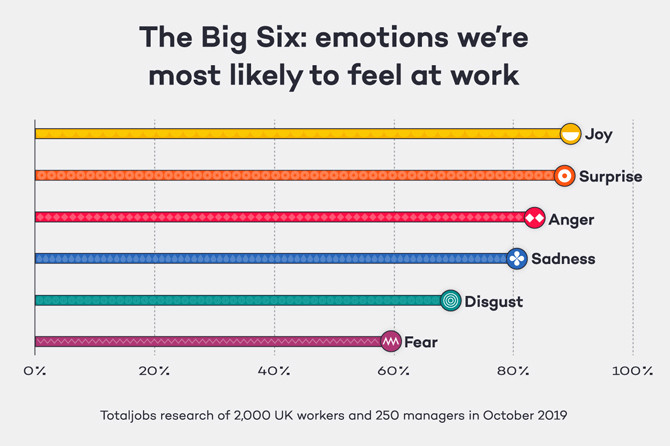
The communicators of wants are feelings. Neglecting needs has the opposite effect to meeting needs, which releases pleasant sensations and energy. Companies may ensure that the powerful wind of a positive emotional force is at their back by merging commercial aims with addressing people’s needs.
The influence of emotions
Emotions and feelings are strong, despite the fact that there is rising support for the idea that they are important in the workplace. Antonio Damasio, a neuroscientist, defined emotions as the collection of lower-level chemical and neural responses to a stimulus that direct an organism toward life-maintaining behaviour. Emotions contribute to our survival by causing quick responses to threats, rewards, and everything in between (for example, “There’s a lion! Run!”). Feelings are the mental expression of emotions and a mechanism for people to interpret their physical experiences. They enable processing and preparation for action.
Human needs for survival are brought to our notice and strongly compelled toward fulfilment by emotions and sentiments. Think about the three things we require to survive: food, water, and oxygen. When we fall short on any of them, our emotions will let us know. Undoubtedly, being hungry or thirsty makes us irritated; this is why the term “hangry” was coined. In addition to having basic needs, humans also have social needs. We all yearn for play, liberty, significance, connection, safety, and comfort.
Our needs are supported by our sentiments. In a problematic marriage, anger and resentment bubble up and beg for connection; in a job where mistakes are not tolerated, worry and fear beg for safety. On the other hand, when teachers are connected to the significance and greater purpose of their work, pride motivates them to work harder. Feelings motivate us to move forward when we are in sync with fulfilling a need: We are motivated and energised by good feelings. Feelings slam on the brakes when a need isn’t met: Negative emotions like rage and frustration prevent participation and action.
linking requirements and feelings
It is commonly known that there is a connection between feelings and wants, and this connection has been used in many different contexts to enhance relationships and communication. What about the workplace, though? Employee motivation and contribution are significantly influenced by the feelings that exist in the workplace, whether or not they are expressed verbally. The most crucial factor in determining whether a business will succeed (or fail) is how people feel about their employment. Feelings indicate needs, which are then affected by meeting or neglecting those needs. Organizations can consciously generate positive feelings and energy and create workplaces that are not only more enjoyable but also significantly more productive and successful by recognising feelings, following them to needs, and acting to address the needs (engaging with what we call the feelings-needs link; see below).
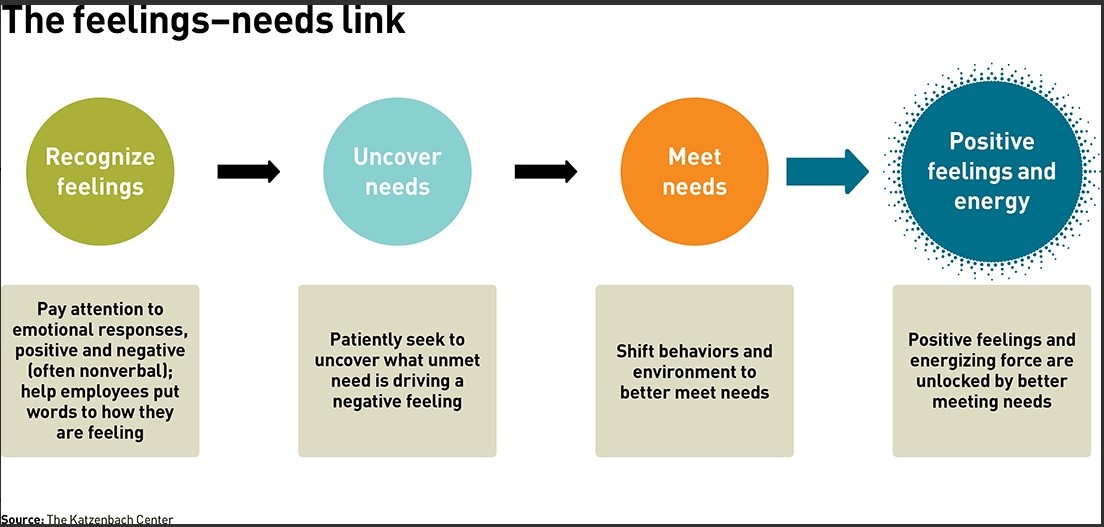

Exercise 1.2: If You Knew…
• When were you the happiest in your life?
•What was the worst experience you’ve ever had?
• What inspires you to wake up each morning?
• What do you do with your money?
• Who holds a special place in your life?
• Tell us about your best friend.
• Did this exercise improve your relationship with the other team members?
• Did it assist in explaining certain coworkers’ behaviour and actions?
• Would disclosing certain private information to people we collaborate with be useful?
• Were some of the team members’ misunderstandings resolved as a result of this session?

Course Manual 3:Workplace Emotions
Do Emotions Have a Place at Work?
Knowledge workers are interested in their line of work. They are powerless to stop. An employee must invest a significant amount of time, years of education, and natural talents to succeed in the information economy. Not merely button-pushing is involved. Modern knowledge workers are expected to contribute their entire selves to work, and they are seeking work that involves their entire self, including their emotions.
Problem is, in today’s corporate culture, talking about emotions is still taboo. Does employee engagement and cultural alignment require an emotional component? is a difficult topic for managers to answer. Do businesses need to consider complex, irrational human emotions like joy, love, and despair? Do emotions even have a place at work?

Historically, the response has been “no.” Employees should try to keep their emotions as far away from work as they can, according to conventional thought. Positive motivators like pride, ambition, and enthusiasm have never been prohibited, but more depressing emotions that can confound one’s reasoning are not.
And perhaps emotions weren’t so important in the long-gone era of telephone operators and factory workers. It’s possible that workers back then could clock in, work routine tasks, and clock out without engaging their inner selves. Or perhaps there has never been a neat approach to address emotions at work. In any case, work satisfaction was not normally a managerial duty.
It is in the modern workforce. The information economy of today requires special human abilities including creativity, problem-solving, and in-depth analysis. Additionally, the people performing this service have a lot of baggage. In any situation, mixing egos and ideas will result in feelings emerging as a byproduct. Although these emotions have historically been avoided in the workplace, they can no longer be suppressed. They must now be controlled. Unfortunately, many managers lack the ability to adapt.
People perform better job when they are content, have favourable opinions of their employer and its employees, and are primarily driven by the work itself.
Teresa Amabile and Steven Kramer, psychologists, want to change that. The researchers started a large study looking at the impact of emotions and team dynamics on work production because they wanted to know the best way to engage people and drive innovation. The Progress Principle, a book published in 2011, was the result of their combined efforts and presented their research findings within the framework of their employee engagement philosophy. The researchers came to the straightforward yet ground-breaking conclusion that employees are persons and should be treated as such over the course of around five months and thousands of thorough questionnaires.
They developed the “progress principle,” which states that “of all the good occurrences that influence inner work life, making progress in meaningful work is the single most powerful.”
Amabile and Kramer refer to the thoughts that each individual feels about their job as their “inner work life,” which includes their career, their coworkers, their workplace environment, and the entire experience. The researchers present evidence in the book that these emotions have a direct bearing on the calibre of the job an employee does. A poor inner work life can result in subpar performance, checked-out workers, and even animosity between coworkers. Everyone should feel respected, in control, and inspired to work together for a healthy inner work environment. The researchers assert that encouraging a healthy inner work life “does not only help people feel better; it also causes people to accomplish better job.”
The Progress Principle demonstrates that job passion is the secret to excellent performance and that emotions play an irreducible role in employee engagement. According to the authors, “people perform better job when they are content, have favourable opinions of their organisation and its members, and are driven primarily by the task itself.” Positive feelings have been shown to produce 50% more original thinking, better judgement, and stronger intrinsic motivation. Amabile and Kramer advise organisations to support this work-love culture in a variety of ways, such as by providing effective learning opportunities and training managers to attend to employees’ needs. They write: “Getting the right sort of help, from the right people, at the right time, can give a significant boost to inner work life.”
Although many managers may not yet be accustomed to handling their employees’ most private feelings, it’s time they did. Humanity will be more important to the bottom line than ever as technology rapidly automates away the emotionless grind of monotonous tasks and menial labour. The finest way to describe it was by Amabile and Kramer: “People often say, ‘It’s business, it’s not personal.’ But work is personal.”
Emotions are here to stay in the workplace, whether they should be there or not. Smart managers are responsible for motivating them and achieving results.

Case Study: Southwest Airlines
Southwest Airlines defies stereotypes about the airline industry’s cranky staff and subpar customer service. Customers who stick with Southwest frequently mention the joyful, polite, and helpful staff.
Southwest is a seasoned player. It has been running for 43 years. Nevertheless, in all that time, the business has been able to effectively convey its objectives and vision to staff members, forming a cohesive team. In order to fulfill that ambition, Southwest also provides staff members “permission” to go above and beyond to satisfy consumers.
Conclusion: Workers that are enthusiastic to contribute to a greater cause are those who are convinced of a wider common objective.
Being Emotional vs. Expressing Emotions
Some people believe that behaviours like eye-rolling, yelling, slamming doors, and raising voices are signs of intensely negative feelings. People mistakenly believe that intensely negative feelings lead to venting, which is known to be counterproductive. However, these are just careless outbursts of repressed bad emotions that have the potential to hurt other people.
In contrast, expressing emotions starts with becoming aware of our feelings. It’s critical to accept responsibility for our emotional reactions and the effects they have on others around us.

Practice Pointers
Let’s go over some advice for improving your emotional quotient and motivating your team to express their feelings at work. More than just increasing productivity will result from doing this; you’ll also build a supportive workplace environment that will make hiring new staff more difficult for your competitors.
1. Recognize the emotional language
You can expand your emotional vocabulary by using tools like mood wheels, RULER’s Mood Meter, or the Atlas of Emotions. You’ll soon be able to name the diverse range of feelings that are normal and part of the human experience, like being invigorated, lonely, worried, serene, motivated, angry, and anxious. You can diffuse your emotions and remove their force by naming them. Start changing how you respond to your emotions after that.
2. Perform Check-Ins
You can start using strategies to encourage and enable employees to bring their emotions to work after you and your team are at ease speaking the language of emotions and have started building emotional intelligence. Conduct one-on-one or group check-ins with staff members to promote emotional transparency, attentive awareness, and the processing and management of emotions.
Some teams employ a green-yellow-red check-in system, where green denotes being in the flow, yellow denotes feeling off, and red denotes having feelings that are preventing you from moving forward (feelings that you are encouraged to tend to before you get back to work). Others favour the RULER Mood Meter because it allows for more expressive responses and uses yellow/green check-ins rather than red/blue ones. Whatever format you use for these check-ins, it should encourage your staff to express and control their feelings in order to boost morale and productivity.
3. Promote Feel-Good Emotions
Employees can connect with and share happy emotions by setting up a praise board, either physically or online, where they can make complimentary remarks about their coworkers. Additionally, you can set reminders for folks to breathe or unwind on a regular basis. Positive emotions are advantageous at work, therefore promote them.
4. Integrity in Leadership
It’s advised that leaders should be conscious of their emotions and purposefully energise and uplift themselves before speaking with their teams. Leaders must be open and honest about their emotions with both themselves and their team. Positive emotion manipulation only fools people temporarily; ultimately, your genuine feelings will come out. Your team will be able to “catch” your bad emotions from your posture, facial expressions, and speech tones. Additionally, pretending to feel something can make your team doubt your statements, which can have terrible results.
Today’s managers and leaders need to be emotionally intelligent in order to not only control how they express their emotions but also to promote the sharing of feelings that will boost individual and team performance, productivity, and job satisfaction. The success or failure of you and your company may depend on how well you pay attention to the emotions at work.
Making a Safe Space for Emotions in the Workplace
The phrase “safe space” could come out as nebulous. Some people might believe that being in a safe space entails being coddled, not pushed, or spared from having to face certain realities.
But the definition of “safe” varies from person to person. Some people may not consider it to constitute discrimination. Others define it as having the chance to express their viewpoint or the freedom to spend time with friends after a long day at the office.
No matter how they appear, all safe spaces have one thing in common: the way they make us feel. Being vulnerable is acceptable when one feels safe. Psychological safety is the conviction that you won’t suffer the consequences of your errors, while emotional safety is the conviction that you may relax and be totally honest.
The happiest and most engaged companies understand how crucial emotions are to productivity. They don’t simply put up with emotions; they actually encourage them! Leaders and managers seek to provide the most hospitable work environment by acknowledging that employees are people. All levels of employees are secure in their ability to handle their emotions and voice their concerns.
Does this describe your place of employment? If not, staff engagement is probably deteriorating.

Exercise 1.3: Making Eye Contact
a. Instruct your participants to move about the room without making eye contact with anyone else, as if they were in a public area. They ought to improvise and play the part. Expect this section taking a minute.
b. Stop everyone and instruct the participants to record their emotions on their cards.
a. In this round, instruct your participants to make eye contact with people as they move across the room. But once they’ve locked eyes, they ought to break it and turn their gaze elsewhere. Spend two minutes on this section.
b. Stop everyone and instruct them to write their emotions on their cards.
a. In this round, instruct your participants to make eye contact with whomever they come into touch with, and as soon as they do, pair them up. They should face each other when standing side by side and avoid making eye contact with others. Set aside two minutes for this section.
b. Stop everyone and instruct them to write their emotions on their cards.
c. Call everyone back together and have a talk after that.
• How did you feel as you progressed through the exercise?
• How did it feel to have to break eye contact while you were in the middle of it?
• How did you feel when you could approach the other person to pair up after making eye contact?
• How did it feel to search for someone you could make eye contact with if you were slow to pair up with someone?
• How simple was it to look someone in the eye?
• How close do you feel to those with whom you made eye contact?
• What pre-conditioning governs our conduct when we make eye contact or keep it?
• How do these differences amongst societies compare?

Course Manual 4: Positive Emotions
According to Barbara Fredrickson, positive emotions have more benefits than merely making us feel good. They alter our bodies, thoughts, and capacity to recover from adversity. Discover Dr. Fredrickson’s tried-and-true recipe for success in life.
I’m aware that this may come out as trivial, especially in light of the current state of the economy, the constant deployment of troops, and the ongoing environmental disaster.
But after studying positive emotions for two decades, We’ve come to understand that understanding them can help us solve these issues and more.
We’re not only referring to ecstatic feelings of delight. Positive emotions come in many forms, such as sentiments of appreciation, calmness, and serenity, as well as feelings of affection and intimacy for the people we cherish.
Positive emotions, which alter the very nature of who we are, right down to our cells, have taught our coworkers and how to modify how our minds and bodies function as well as how capable we are of facing problems. In fact, the study of positive emotions is essential for assisting individuals in overcoming challenges and leading fulfilling lives.
Good emotions are far from insignificant; instead, we’ve discovered that they expand our awareness in ways that change who we are and that they strengthen our positive attributes in ways that bring out the best in us, assisting us in becoming the finest versions of ourselves.
Optimistic feelings free our minds.
Research shows that there are two fundamental truths concerning all of the various pleasant feelings.
The first is that they literally broaden our minds and hearts as well as our perspectives on the world around us.
Let us now indulge in some beautiful prose. Think of yourself as a water lily. Your petals are tightly gathered around your face at the break of morning. The only thing you can see is a tiny patch of sunlight, if anything at all.
But as the light rises, the situation starts to alter. Your world literally expands when the blinders around your face start to loosen. There is more to see. Your environment is bigger.
The warmth of positivity opens our thoughts and emotions in the same way that sunlight opens flowers. On a very fundamental level, it alters our visual viewpoint and our capacity to recognise others’ humanity.
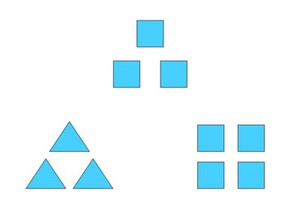
We are aware of this since studies have shown that some individuals can be made to feel happy by giving them something, having them have a good experience, or showing them pictures of adorable pups or lovely sunsets, but not all of them. In one of these experiments, participants were asked to choose the comparative figure that most closely resembled a given figure (see image on the left). As you can see, the top figure is most like one of the figures (the three triangles), while the bottom figure (the four squares) is most like it in the local details.
What we discovered was that when we made individuals feel good, they were more likely to take a step back and declare the top figure of the three triangles was the most like it. They had a broad perspective.
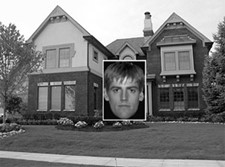
In this regard, one of our favourite research was produced by Adam Anderson’s team at the University of Toronto. When patients were shown images of a face with a house in the backdrop, the researchers watched what happened in their brains. People were instructed to only consider whether the face was male or female and to disregard the rest of the image.
When we view a human face, one area of the brain lights up, and when we think about real places, like a house, another area of the brain similarly lights up. Which area would be illuminated here?
The “location” area lit up when a favourable emotion was induced, the researchers discovered, and even when participants were instructed to disregard the context of the image, they couldn’t help but notice it. People didn’t even notice the house when they were in neutral or bad moods.
This shows that when people are feeling good, they are unavoidably aware of context. They have a broader awareness, which could account for why people remember tangential details more vividly while recalling enjoyable experiences.
Positive emotions help us see more options because they broaden our peripheral vision and boost our awareness. And this has a wide range of positive effects.
• Positive emotions encourage creativity, and when people are addressing problems, they have more ideas for potential future steps. A greater awareness has been directly connected to this improved inventiveness.
• Resilience is more prevalent in people. We have a large body of research that demonstrates that when people are feeling good about themselves, they are able to recover from hardship more quickly.
• Academic achievement in children improves. According to research, if children are simply instructed to sit and reflect on a pleasant experience before to taking a math or other test, they will perform better on those tests.
• There are health advantages. A fairly little means of evoking happy emotions, study has shown that doctors make better medical choices when they are given a bag of chocolates. The next time you see your doctor, keep that in mind!
• Even across groups, we are more socially linked to people when we are feeling well. Positive emotions enable us to see past ethnic and cultural distinctions and the unique individual underlying those qualities, as Kareem Johnson discovered. They aid in our ability to focus on our similarities rather than our differences with others. Additionally, studies demonstrate that inducing happy emotions makes people more trustworthy and helps them reach better win-win outcomes in negotiations.
So while it’s true that happy emotions might help us see the bright side of things, that isn’t the complete picture. They assist us in recognising more extensive forms of connection. They aid in broadening our perspective.
Positive feelings change us.
Positive emotions change us for the better and bring out the best in us, which is the second fundamental truth about them.
One noteworthy truth about all living things is that, according to scientists’ estimates, we replace 1% of our cells on average every day. That’s another 1% tomorrow, roughly 30% by next month, and 100% of our cells from today by next season, to put it another way. Therefore, it could not be a coincidence that developing new habits or changing one’s lifestyle takes about three months. Perhaps we need to be educating our new cells since we are unable to teach an old cell to learn new skills.
The most recent research, however, indicates that the rate and kind of cell renewal may not simply follow a predetermined DNA script, which is even more interesting. Our feelings have an impact on the cellular level of change.
This implies that if we consume more good emotions each day, we will gradually become more conscious of the world and develop into different people.
In light of this, researchers became interested in how people may utilise meditation to increase their baseline levels of happy emotion—the quantity of positive emotions they experience on a daily basis. They were motivated by some of the most recent research on meditation.
Researchers focused on a type of meditation called loving-kindness meditation, also known as metta, which encourages practitioners to learn how to cultivate the same warm, tender emotion they already have for a loved one toward others, starting with themselves and progressing to all sentient beings on Earth.
In their experiments, participants studied loving-kindness meditation over the course of eight weeks, and as a result, their everyday levels of good feelings gradually increased. And this increase in happy feelings assisted them in developing some crucial resources.
Mindfulness, or the capacity to stay in the present and keep awareness of one’s thoughts, feelings, and surroundings, was one of those resources.
Additionally, from the time they began learning meditation until a few weeks after the course was over, their intimate and trustworthy connections with others increased.
Researchers also observed reductions in aches, pains, and other physical symptoms of sickness, as well as enhancements in people’s resilience—their capacity to recover quickly from setbacks and successfully manage the difficulties they faced.
These findings imply that if we consume more pleasant emotions each day, we will become more robust and socially attached three months later.

Case Study
Leadership: It goes without saying that top-down support is necessary for the implementation of good practices. A leader must uphold and demonstrate the principles he advocates. The founder and CEO of Chicago-based packaging company Creative Werks, Steve Schroeder, credits his organization’s success in large part to its supportive culture. Creative Werks has consistently been included among the “50 Fastest Growing Companies” by Crain Chicago. Along with the customary benefits (bonuses and chances for professional advancement), Steve also takes care of his staff members’ happiness. Steve frequently invokes the Dalai Lama, who has been a longtime student, when he says that “everyone wants to be happy.” He makes sure that there is a helpful and pleasant corporate culture. He seeks for “caring” in prospective employees when conducting interviews. According to Schroeder, considerate people never let their clients or coworkers down. The fundamental principles of Creative Werks go beyond customer and product focus. They also mention “balance,” which refers to employee wellbeing and emphasizes the significance of an encouraging and happy work environment.

Exercise 1.4: Name Game
J – Joyful
A – Assertive
If your name is Jane Doe, for instance, you may write:
E – Energetic
D – Delightful
O – Optimistic
E – Energetic

Course Manual 5:Negative Emotions
How to Manage Negative Emotions for the Benefit of Your Team
It’s common to feel frustrated, angry, afraid, or excited at work. But how managers respond to these emotions has a big impact on whether the workplace is a positive place to work and whether people are motivated or discouraged. It’s crucial for leaders to learn how to control their emotions, but maybe not in the way you may imagine.

Case Study
Consider this example: In a crucial match, a soccer team is trailing by one goal. A player is fouled in the penalty area just before halftime, giving the side a chance to tie the game with a penalty kick. The team’s star performer moves forward to take the shot. It appears to be flawless at first as it flies to the far corner of the goal, but instead, it bounces off the post and returns to the player, who is left speechless. He leaves the field with his head in his hands to meet his team for the halftime meeting.
The group is angry. The trainer is also. The coach’s objective is to help the players get over this obstacle so they can come back to the field fired up and inspired. Should he suppress his annoyance, put on a false grin, and keep the incident to himself? Or should he be truthful and open about how he feels? Which of these will enable him to accomplish his objective?
It turns out that neither.
Leaders who effectively regulate succeed
According to research on emotional regulation, a coach’s capacity to control his emotions will affect the morale and motivation of his squad. Emotion regulation may be the “master skill” of all the components of emotional intelligence, according to Marc Brackett, director of the Yale Center for Emotional Intelligence and author of the book Permission to Feel.
But whether a team’s outcome will be beneficial or negative depends heavily on how a leader regulates their emotions. According to research, people often control their emotions by either suppression or reappraisal.
The majority of people suppress their emotions by hiding them and acting as though they aren’t disturbed. Despite being a common tactic, it really has a number of detrimental effects on the individual, including a decrease in intimate relationships, an increase in negative emotions, a lack of social support, a decrease in life satisfaction, impaired memory, and increased blood pressure. Additionally, studies have shown that repressing one’s emotions increases the stress reaction in others. For instance, if the coach suppresses his rage, his team members’ blood pressure is likely to increase. They may not be aware of his anger since it doesn’t look that he is, but they are physiologically detecting it and reacting with alarm.
You could believe that expressing our feelings fully would be a better course of action given the detrimental effects of suppression. However, doing so might potentially have negative effects. The players’ trust would have likely been damaged by the coach’s complete expression of his current dissatisfaction. He probably wouldn’t make the players feel connected and motivated; rather, he might make them feel scared and defeated.
Reappraisal, or reevaluating an emotional situation, might be the best course of action here. For instance, the coach can tell himself that this is just one game in the season and that “the game is only over when it’s over.” His squad will have further chances to excel. Reevaluation aids in his calming down. Because of this, he would think that the players already felt defeated and that what they needed was encouragement rather than further discouragement. He can begin the discussion by expressing his understanding of everyone’s disappointment while highlighting the fact that the players’ ability to overcome this setback and win the following 45 minutes will depend on their resolve.
For both the coach and his team, the outcomes are better.

Researchers recently studied 15 varsity coaches and the athletes they coached. Compared to coaches who tended to repress their feelings, coaches who inclined to reappraise more frequently reported experiencing fewer negative emotions overall. Additionally, the reappraising coaches’ teams had more hospitable environments that were marked by motivation, trust, and communication.
These conclusions are supported by leadership research, which demonstrates that great leaders—not just athletic coaches—demonstrate emotion regulation as a critical competency. This is related to the fact that the capacity to control and affect the emotional states of those they work with is one of the criteria for a great leader. To keep their followers motivated and able to handle challenges, leaders must be able to inspire and build confidence in them. They need to be able to successfully control their own emotions in order to be successful at this challenging undertaking.
Research on the interactions between leaders and followers lends credence to the possible advantages of reassessment.
According to one study, leaders who convey bad news by using reappraisal rather than suppression are better able to assist their followers in controlling their outbursts of fury. In this paradigm, the followers of leaders who used suppression showed higher rage and reported having bad sentiments of their leaders.
Develop Your Muscle of Reevaluation
In times of crisis, it may seem tough to reevaluate. Here’s a short method with research behind it that can assist you in doing that: Instead than viewing the issue as a danger, consider it a challenge. A growing body of research shows that viewing issues as challenges rather than threats encourages people to focus on the task at hand and think through the actions necessary to succeed. In the face of stress, a challenge frame helps people become resilient.
On the other hand, viewing a problem as a danger has been associated with lower productivity and motivation as well as higher levels of stress.
Deep breathing is a quick approach to regain composure when you’re under a lot of stress, according to Johann Berlin, CEO of TLEX Institute. You can have a huge impact on bosses’ teams by showing them how to regulate themselves through something as simple as breathing. According to research, you can quickly control your emotions by controlling your breathing. Your heart rate and blood pressure rise when you inhale, whereas they fall when you exhale. Breathing out for twice as long as you inhale is a simple exercise you can perform even in the middle of a meeting. Try this exercise, which guides you through a particular breathing technique that can help you de-stress right away, if you have a little more time.
How can you then be best equipped to deal with high-stakes circumstances when you’ll need to regulate? Practice these drills in low-pressure circumstances. Use them every day. You’ll be prepared for tough situations.
Is Emotional Diversity Preferable to Pure Positive Attitude?
Your overall health may benefit if you allow yourself to experience a range of emotions.
We wholeheartedly support making an effort to spread optimism throughout our lives. Having said that, occasionally we see people who seek to be happy and who blame themselves for any unhappy thoughts or feelings. But being content doesn’t need us to constantly be filled with joy or pleasure or to wear a smile on our faces. It’s not feasible. Sad things do occur. It’s normal to be sad about our losses.
Emotional diversity is healthier and more realistic. Research reveals that a varied range of emotions (emodiversity) is vital for both the physical and mental health ecosystem of individuals, much as biodiversity is important for a healthy environmental ecosystem.

What Do Studies on Emodiversity Say?
A ten-year study discovered a significant association between often experiencing conflicted emotions and good physical health. Additionally, more conflicted emotions over a long period of time prevented the regular health impairments associated with aging. However, there were fewer than 200 participants in this subjective investigation.
More variety in ordinary good feelings was linked to reduced levels of inflammation in the body, according to another modest but factual study. However, neither the range of negative emotions nor the proportion of positive to negative emotions to inflammation were found to be correlated by the study.
More than 37,000 participants were enrolled in two larger trials that demonstrated an association between overall emodiversity—a mix of good and negative emotions—and better mental and physical health.
Practical Lessons
There are many various varieties of happiness, and Dr. Anthony Ong, one of the researchers on the inflammation study, remarked in a Psychology Today article that “…experiencing an abundance of varied types of pleasant emotions in daily life may be good to health.”
He continued, “To recognise when you are experiencing a pleasant emotion and tag or name it is a simple method to put this into regular practice. Positive emotion recognition and labelling may enable you to feel a wider range of positive feelings throughout the remainder of the day.
Professor of psychology at the University of North Carolina in Chapel Hill and the author of Positivity: Groundbreaking Research Reveals How to Embrace the Hidden Strength of Positive Emotions, Overcome Negativity, and Thrive, Dr. Barbara Frederickson is another researcher. She feels that the secret to creating a happier, more vibrant existence is to have a 3:1 ratio of three positive feelings to every negative emotion.
Not that we have to keep track of the good and bad feelings we experience. However, if we use Frederickson’s ratio as a generalisation or tipping point, we can see that we don’t need to strive for a 100% positive outlook in order to thrive.
Additional Reflections on Joy and Emotions
Negative emotions or feelings can reappear at an inconvenient time if we ignore them or pretend they don’t exist. The traditional illustration is erupting in rage over a trivial incident.
We naturally experience a wide spectrum of emotions since we are human. The idea is to recognise our emotions, appreciate their significance, and make decisions that respect our sentiments while also resulting in happier emotions.
This procedure can be described as emotional agility. Dr. Susan David, a psychologist and authority on emotions, outlines four essential ideas in her book Emotional Agility:
1. Showing Up: Be willing to confront your feelings, thoughts, and actions. Be enquiring and considerate.
2. Stepping Out: Recognize that your ideas and feelings are simply that—thoughts and emotions. You are not them.
3. Walking Your Why: Be aware of your guiding principles and utilise them as a guide to keep moving in the right direction.
4. Moving On: Change your thinking, motivation, and habits in tiny, deliberate ways that are consistent with your ideals.
In an interview with Psychology Today, Shawn Achor, author of The Happiness Advantage and Before Happiness, said, “What I want people to realize is happiness can be a choice, and it’s something you can practise. But if you’re feeling unhappy, that’s not failure. What we want to steer people away from is apathy, which is that loss of movement.” In other words, accept the multiplicity of feelings and allow yourself to experience them. But avoid being caught in them. Go on moving.

Exercise 1.5: Emotional Intelligence Assessment for Leaders
2. Setting poor examples and adhering to the adage “Do as I say, not as I do”;
3. concentrating on multiple things at once;
4. Focusing too much on the task at hand while overlooking the people;
5. Not providing clear instructions;
6. Not providing consistent instructions;
7. Not accepting responsibility for mistakes;
8. Concentrating on the details while overlooking the “whys” or the big picture;
9. Exhibiting little to no personal dedication to the goal;
10. Permitting employees who aren’t doing their jobs to stay.
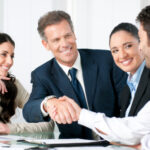
Course Manual 6: Emotional Triggers
How to handle conflicting emotions at work
What happens if we notice a coworker sobbing? Have you ever experienced fear at work? How frequently do we scream and laugh at work? To find out how everyone truly feels about emotions at work, researchers polled more than 2,000 people.
According to research, there are six basic emotions that all people experience. The psychologist Paul Ekman proposed that these Big Six were universally present in all civilizations in the late 1960s. What one of them, though, are we most likely to experience in our workplace culture?
Workplace emotional triggers
It can appear that happiness rules the office. But as always, things are more complicated when there are feelings involved.
Because in the workplace, our perceptions of professionalism, capability, and position are closely tied to our feelings and their “suitability” for sharing with our coworkers.
Why then are we feeling so emotional at work? According to our survey, the work isn’t the main factor in any workplace emotion. It’s the people we work with.
According to UK workers, just 2 out of 10 emotional events are brought on by a task, while 1 out of 3 are brought on by a colleague. It’s people, not projects, in essence.
And those coworkers aren’t always making our jobs enjoyable. Victims of occupational toxicity experience a wide range of emotions.
Unexpectedly, the poll found that men may be significantly more emotionally sensitive at work than women.
Because their “ideas weren’t heard” or because they “were criticised,” men were more prone than women to become emotional.

Men also appeared to have a greater emotional commitment to their tasks than women did. When a project went over budget, missed a deadline, or had to be cancelled, they were almost three times more likely to become emotional than women.
But on the other hand? Women report much higher levels of workplace stress than do men.
What sets off our emotions, whether we’re men or women?
• Men were 1.6 times more sensitive to criticism than women.
• Because their “ideas weren’t heard,” men were 2.4 times more emotional than women.
• Men were 2.5 times more emotionally affected by “having a fall out” than women.
• Women expressed “stress/frustration” with 25% greater emotion than males did.
This indicates some issues that will be covered in more detail later: men and women are socialised to express emotions in different ways, particularly at work. Covering our feelings has an emotional cost as well.
maintaining appearances
How many of us openly express our emotions at work? How much pressure is there in the working culture to keep a straight face while we cry and are afraid?
It turns out that 6 out of 10 people had encountered a workplace feeling they didn’t feel comfortable expressing.

(You may have noticed that 2% of UK employees say they have never felt any of the Big Six emotions. We’re unsure of how we feel about that as well.)
There is a significant disconnect between what we are feeling and what we are willing to express when it comes to the less positive emotions, such as grief and rage. We are most likely to conceal our anger and displeasure from our coworkers.
Social expectations are present in workplace situations. People often repress their feelings at work because they worry about being criticised.
Gender appears to be very important in this situation once more.
Stereotypically, anger is viewed as a more male characteristic. Men do really express their rage at work more frequently than women do. but what lies beneath? Men and women both feel outraged right now.
Men and women both appear to be feeling the same level of unhappiness at work. However, women are acting bravely. Our survey reveals that although they aren’t expressing it, women are actually sadder than males.
There is little doubt that men and women react to job situations differently emotionally. However, our brains are not hardwired with these distinctions.
The ideas that men are more “aggressive” and women are more “nurturing” have nothing to do with physiology. According to research, these concepts are derived from (and support) social norms.
Power and emotions go hand in hand
“Display guidelines” specify what, how much, and when it is appropriate to display emotions in public.
For instance, women are more likely than males to report feeling feelings like dread, sadness, shame, and guilt when they lack power.
However, men are more likely to admit to feeling powerful emotions like wrath and pride.
Power and emotions are actually closely intertwined. Lack of status is consistent with not being heard. In social contexts like the workplace, sorrow is connected to a loss of authority.
Evolution of emotions across time
With age, everyone’s emotions change. How then do our emotions at work change as we get older?
Happily, during the course of our lifetimes, happiness and surprise at work have consistently been at a high level. And as we get older, we feel like we have more freedom to express them.
The key to preventing burnout, tension, and disengagement at work is joy. In other words, it’s simply a smart business move.
Does your business make you happy? People enjoy their jobs more when they connect with them personally and feel their contributions are significant to the organisation.
More good news: as we age, we also experience decreased levels of sadness, rage, disgust, and dread.
Fascinatingly, though, fear is the feeling that decreases the most quickly. It drops from 77% of people in the 23–38 age group to just 45% in the 55–73 age group.
We experience less dread as our careers progress.
This is logical. Young individuals are developing their own professional identities early in their careers.
And this frequently accompanies a concern of acting improperly, both in terms of their employment and in reference to being perceived as acting outside of the social and cultural norms already in place at work.
However, when people spend more time in their job function, the worry of fitting in may fade. Our concerns of failure may also lessen as we gain experience, increasing our levels of capability, power, and position.
But alarmingly, 60% of the time we still don’t speak from the heart.
Therefore, how do we manage our emotions? An important 1 in 3 persons only “put on a happy front.” And 25% of us manage these emotions outside of the workplace.
We could be led to feel that we must “put on a brave front” by social conditioning. However, maintaining the façade of not being depressed can be exhausting and create stress.
Which could be the reason that 7% of people admit to utilising “coping mechanisms like drinking.”
Neglect your sorrow at your peril. The purpose of emotions is to convey information to us.
While accepting the Medal of Freedom from Barack Obama, Joe Biden exhibits a few strong emotions and is moved to tears. Talk about getting a raise from your employer.
Emotional management requires acknowledging the message rather than stifling it.
How to handle your emotions at work
1. Feel it: Permit the emotion to linger for a while. Let your feelings out. If you need to, cry. Understand what your sadness is trying to tell you. Put it in writing.
2. Get moving: If you can, step outside. Exercise has been found to boost mood, and working through the messages that melancholy is sending you while on the treadmill might be helpful.
3. Speak with a trusted friend or relative about it: Talking things out frequently helps to organise thoughts and helps to order reactions to feeling sad.
Release: What our responses reveal
Men and women show their emotions differently than they feel them, as we’ve already observed. But how precisely do they let it out? Simply put, males yell and women cry (or just quit).
It’s not actually that easy, of course. These variations in our “emotional” reactions have psychological underpinnings that go much deeper.
In social contexts like the workplace, anger is linked to influence, while sorrow is linked to a lack of authority or confidence.

And what about laughing tears? It turns out that 3 out of 4 of us are laughing heartily at work.
In fact, humour can hold teams together at work, especially during stressful times.
According to research, laughter among coworkers can strengthen bonds, foster cooperation, and help individuals escape the monotony of the workplace.
Oh, and something else. Men and women prefer distinct strategies for physically establishing emotional connections with one another.
Getting help or handling our emotions on our own:
Most of the time, we handle our job emotions alone. especially sadness, which we cope with 60% of the time by ourselves.
The feeling we’re most likely to express to others is fear: One in three employees will seek assistance from friends, family, or coworkers when they feel afraid at work.
How do people respond when a coworker starts crying?
We’re less prone to express our feelings when it comes to other emotions. And what is the least likely thing for us to do? Contact HR. There seems to be little trust there.
Fortunately, most people are decent.
The majority of comments are supportive. We converse. We hug. We help one another. But things aren’t always this way.
Can businesses improve our moods?
Our managers must be accountable for both our workload and emotional health in order to maintain an emotionally healthy workplace.
Yet fewer than half of line managers believe they are capable of managing the emotions of their staff. Many people don’t even believe they ought to.
These disclosures imply that the language of “bringing your complete self to work” is not supported by cultural norms or support systems that offer a secure, dependable, or welcoming setting for the expression of particular emotions.
Nobody should feel guilty about being unhappy.
The idea that you should “check your emotions at the door” when working ought to be obsolete by now. The ability to manage one’s emotions is crucial, especially for managers and leaders.
So how should we handle our feelings?
Human beings are made up of their emotions. They enable us to collaborate, innovate, be creative, and connect with others. However, even our negative emotions contribute significantly to feeling happy.
Therefore, rather than employing coping mechanisms, we want to strive for higher degrees of emotional awareness. Everyone’s mental health, general wellbeing, and professional achievement will improve if you can adapt your approach.
Since sharing feelings is so personal, it can be challenging to do so in the job. But the next time it does, here’s how you may help a coworker who is experiencing emotional distress:
• Whatever the emotion, acknowledge it.
• Don’t offer counsel.
• Not solving the issue is your responsibility.
• Never minimise the intensity of their reaction.
• Never tell them to “cheer up” or “all will be fine.”
• Keep your identity private.

Case Study
There is ample proof of the benefits of workplace mindfulness training at Aetna Insurance. It was really unhealthy to work at Aetna. Employees were underpaid, overworked, and reportedly stressed to the point of suicidal ideation. The workplace environment was negative.
CEO Mark Bertolini experienced a potentially fatal skiing accident in 2004. Recovery took a lengthy, arduous, and was mostly unsuccessful. Bertolini considered committing suicide because the suffering was so unbearable. Then, while looking for other methods of pain management, he discovered mindfulness techniques.
The change in Bertolini was a game-changer. He introduced mindfulness to the workplace because he thought it could alter the corporate culture at Aetna as well. When Bertolini urged that Aetna adopt mindfulness practices, HR and top officials initially opposed the idea, and some even left the business. However, the concepts were put into practice, and the outcomes spoke for themselves.
Participants in Aetna’s mindfulness sessions totaled over 25,000. ROI at Aetna skyrocketed. The company’s culture saw an astonishing transformation as the practices took hold. Participants noted 28% less stress, a 20% better night’s sleep, and a 19% decrease in discomfort. Their enhanced output was worth $3000 per employee per year, or an additional 62 minutes each week on average.
According to Aetna’s findings, putting an emphasis on employee well-being through lowering stress and anxiety results in employees who are more cognitively and emotionally healthy. With the use of mindfulness techniques, businesses can gain incredible advantages and improve their financial performance.
Regarding neurodiversity
Not everyone’reads’ or expresses emotions in the way that is generally accepted.
Although some emotions are believed to be universal, we are learning more about how neurodiversity can offer a unique viewpoint on the understanding and expression of emotions.
People who are neurodivergent may interpret and apply social norms differently. We may need to reconsider our assumptions that everyone will understand and respond to socially acceptable or anticipated expressions of emotion in the same way if we adopt an inclusive perspective of the world around us.
We are becoming more conscious of the abilities and worth of people from various backgrounds, and we are also understanding that different people will think and feel in different ways.

Exercise 1.6: Self-Management Activity
•joy
•excitement
•happiness
•peace
•calmness
•cheerfulness
•flexibility
•harmony
• Anger Disappointment
•Exhaustion
• Frustration
• Stressed
• Concerned
• Worried
• Anxious
• Defensive
• Confusion
1. Consider a situation in which you were furious and how you handled it.
2. In the spaces below, describe your response and actions.
3. Complete the sentences with “The last time I was upset I…”
1. Consider how you want to deal with anger in the future.
2. Describe good management practices and put them in the spaces provided. You might include techniques for managing stress such as: a. deep breathing; b. taking a break; c. taking a shower; d. distracting yourself; e. lying down; g. thinking before speaking; and h. Put it in writing.
The next time you become furious, remember to use these prepared future coping mechanisms.

Course Manual 7: Emotional Control
Does professional behaviour require restraint of your emotions?
a reader wrote in to an advice forum:
I was just let go from a job I had for four years. They informed me that I may continue working until the end of the fiscal year, which is a few months after my termination, and that one of my coworkers would take my job. I intend to stay with it as long as I can despite the uncomfortable because the salary and perks might be the greatest I’ve ever had.
Over a decade into this business, and it’s never felt right. I’m therefore willing to shift careers, and I’m currently volunteering and seeking for jobs.
But before that, I need to clean up my behaviour. I’m clever, compassionate, and skillful, but I can’t control my emotions, so I’ve left most of my jobs on negative terms. I lose my anger, weep, or just become disinterested when I’m anxious, annoyed, or bored. Despite the fact that I’ve always worked in settings that were rather relaxed, I recognise this doesn’t justify my actions. I’ve ruined a lot of business connections.
How would you describe “professional behaviour,” is the question I have. I want to make the most of the remaining months in this (uncomfortable) scenario since I feel like I don’t even know where the lines are anymore.
It’s excellent that they have this question.
Controlling your emotions seems to be the aspect of professionalism that’s important to you. Professionalism can refer to a wide range of things, including how you present yourself in meetings and how you dress and groom yourself. So let’s discuss that portion of it.
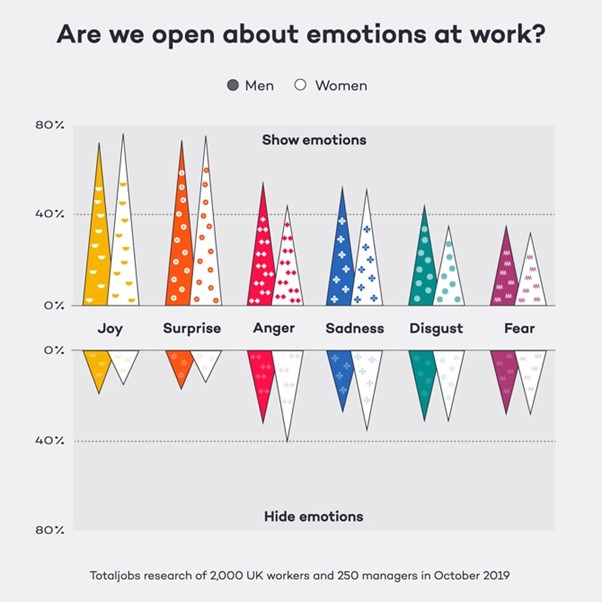
Maintaining a generally even emotional keel at work is part of being professional. That’s not to imply that you can’t feel anything at all, but your feelings should be ones that don’t bother or annoy other people. In actuality, it means:
• not taking things personally, such as realising that receiving constructive criticism for a project is just a part of the job and not a personal attack, and handling it in a cool, non-defensive manner.
• acknowledging that you may be getting paid to do a job that you don’t particularly enjoy or want to do, but that you still have to do it pretty cheerfully since that’s what you’re being paid to do.
• being kind and courteous to everyone, regardless of whether you like them
• preventing a bad day or a bad mood from having a substantial impact on how you communicate with coworkers and clients
• knowing that the best course of action if you’re feeling really irritated at work is to discuss the issue with someone who can help fix it rather than complaining to others, letting it fester, or allowing it to impair your work or how you interact with people
The essential premise is that you are being compensated not only to perform your duties but also to contribute to a generally pleasant environment, or at the very least, not to make it less pleasant. Because toxic coworkers have an adverse effect on other individuals, good employers don’t want to expose other employees to negative, disagreeable, erratic, or other problematic coworkers.
Consider this: People have the option to stop interacting with you outside of the workplace if they find your behaviour offensive. However, your coworkers must put up with you at work. They can’t just hang up on you, walk away, or say you won’t talk to them again. They might frequently be physically unable to get away from you, such as in shared offices. In other circumstances, the expected level of behaviour could be different. Because you’re all confined together, it’s expected that you’ll try to avoid making people feel bad.
You are still allowed to experience feelings despite this. However, it’s crucial to realise that you don’t have to act on every emotion you experience. You can be disappointed that, for example, a project you put a lot of effort into was returned with a lot of red ink, but still act professionally at a meeting later that day. This includes not withdrawing or pouting, appearing to be reasonably engaged, and contributing about the topics that relate to your line of work. You don’t have to shout at your coworkers if you’re annoyed that your employer unexpectedly asked you to remain late.

All of this does not preclude you from having valid complaints about events that occur at work. You can, of course. How those disputes are handled is important. Professional solutions include bringing up the matter and outlining your concerns, recommending a different course of action, concluding that something isn’t perfect but you can live with it, or deciding you can’t leave with it and will instead look for another position.
In fact, I wonder if the reason you’re automatically losing your cool, sobbing, or disengaging is because you don’t know exactly what these alternatives look like — in other words, that you’re unsure of how to calmly say “hey, X is a problem for me because of Y — could we try Z instead?” or that you don’t think it would work. It’s definitely possible that it won’t work in your specific workplace or circumstance. However, the fact that you’re noticing this pattern in different jobs and that you make no mention of having tried these other strategies leads me to believe that this is something that is deeply ingrained in you, perhaps learned from a family who didn’t teach you how to effectively advocate for yourself (either by not modelling those behaviours themselves or by demonstrating that it wouldn’t matter if you tried).
If that’s the case, you can find out now, though! You only need to be willing to put in the effort to learn it and have the belief that it matters. It’s important that you’ve recognised the problem and desire to address it.

Case Study
Numerous research conducted over the years have shown that men and women are subjected to various applications of feeling rules. The resounding finding is that when a woman expresses negative emotions like anger, grief, or irritation, people tend to judge her more harshly than a man would. Researchers have discovered that while people presume men’s tears are the result of external circumstances, women who cry at work may be perceived as weak or unprofessional. Similar to how women are perceived as incompetent or even strident, males who display rage can frequently use it as an effective managerial tool to appear capable.
In one 2014 research, 170 undergraduate students viewed a video of attorneys in a court case giving their closing arguments. The participants were asked to reach a decision and assess the attorneys’ abilities. Male angry litigators obtained the highest ratings, while female angry litigators received the lowest. Additionally, the students explained the men’s fury as being caused by the actual circumstance while attributing the women’s anger to their emotional state.
The exact source of the gender gap is difficult to pinpoint, but entrenched prejudices and a lack of exposure to women in leadership, as opposed to supporting roles, are frequently to blame.
Apply the 24-Hour Rule Strategy to Present a Reasonable Reaction.
Self-management requires being aware of our emotions and the signs they provide. To respond logically, we must take the time to prepare a plan.
How frequently have you encountered a circumstance that made you feel something?
Maybe you received an upsetting email or were asked a question you didn’t feel comfortable responding. We react naturally as a result of the innate signals our emotions tell us. But to avoid being emotionally misdirected, we must devise a logical plan.
Our decisions are heavily influenced by our emotions, which play a big part in our lives.
Making better decisions requires increasing your emotional intelligence, which may be achieved through learning to identify, comprehend, and control your emotions.
A method for overcoming challenging emotions!
The 24-hour rule, sometimes known as “sleeping on it,” is an excellent tactic that encourages sensible thought. This tactic gives you time to reflect on an issue or circumstance and enables you to react calmly and logically without unnecessary emotion.
Remember that emotions flow from the back of the neck to the spinal column, where they reach the limbic system, to the centre of the brain, where they are felt. From there, your feelings travel to the frontal lobe of the brain, also referred to as the “logical brain,” where we analyse and justify our sensations. Sleeping on a situation gives you plenty of time to think things through and come up with an emotionless response that you won’t later regret.
Why it’s best to have a plan in place to manage your emotions
Although it’s usually best to react to a situation logically and sensibly, the idea can still be used if you can’t give it any thought. Use a logical approach when you sense that you are going to have an emotional reaction that you could regret. Try to calm yourself down, take several long breaths, tell them you’ll get right back to them, and then get away from the email or the person.
While you wait to react, circumstances may change, giving you the opportunity to think clearly and come up with a fresh plan of action to avoid overreacting out of emotion and reducing the likelihood of a bad outcome.

Exercise 1.7: Be the Fog (Regulate Your Emotions)
• “You’re a slacker.”
• “You are never on time.”
•You don’t feel accountable.
• “Yes, I can be sluggish at times.”
•Yes, I was running late.
•Yes, I simply don’t accept responsibility.

Course Manual 8: Group Emotional Intelligence
Scales fell from the eyes of managers when they first learned about the idea of emotional intelligence in the 1990s. The fundamental message—that EQ matters at least as much as IQ for organisational effectiveness—resonated strongly with the audience because it was something they intuitively understood but had never been so clearly stated. Most importantly, the concept had the potential to result in improvement. People could take action to improve their emotional intelligence and make themselves more successful in their personal and professional life rather than being forced to play the hand they were dealt.
The idea of emotional intelligence did, in fact, have a significant impact. The only issue is that, up until now, emotional intelligence has only been seen as an individual competence, despite the fact that teams really perform the majority of the work in organisations. And if there is one urgent task facing managers today, it is to figure out how to improve team performance.
Consequently, it is with great excitement that we report the results of a study, which show that collective emotional intelligence is equally as important to a group’s effectiveness as individual emotional intelligence. Teams can improve their overall performance by increasing their emotional intelligence.
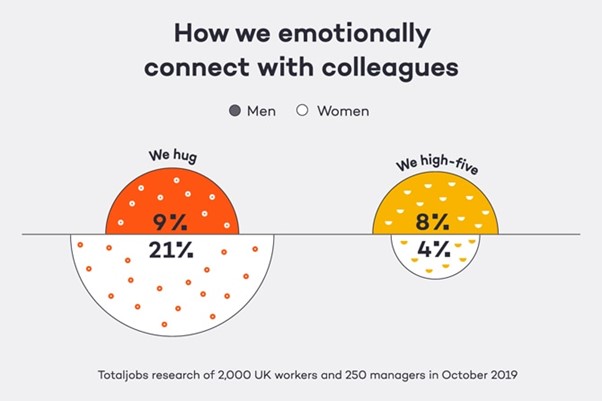
What Justifies Developing Emotional Intelligence in Teams?
No one would contest the significance of improving team performance. However, the majority of studies on how to do so has been on pinpointing the task processes that set apart the most successful teams—that is, specifying the requirement for cooperation, involvement, dedication to goals, and so forth. It appears that once these procedures are known, other teams can easily copy them and achieve the same results. It is untrue. You can teach a piano student to play the Minuet in G, but without understanding music theory and being able to play from the heart, he won’t become a modern-day Bach. Similar to how good task processes evolve and cause team members to engage in them totally, these fundamental circumstances are the true root of a great team’s success.
According to our research, a group’s efficiency depends on three factors: member trust, a sense of group identity, and a perception of collective efficacy. It is still feasible to cooperate and participate if these circumstances are not present. However, the team won’t be as effective as it could be since certain members will decide to be less involved. The team must establish emotionally intelligent norms—attitudes and actions that eventually become habits—that support actions for fostering trust, group identity, and group efficacy in order to be most effective. Complete work involvement is the result. (For further information on how these circumstances are influenced by emotional intelligence, see the sidebar “A Model of Team Effectiveness.”)

Case Study
Managing Group Emotions
Chris couldn’t believe he was asking for a transfer. His team was producing quality work, remaining under its allocated budget, and meeting all deadlines, but not necessarily in a graceful manner. Stan Evans, its leader, just received a promotion. What made being a member of the team such a bummer? They ought to have been serving champagne at the most recent important status meeting because so much had been accomplished. Instead, everyone was quite discouraged by a setback that they hadn’t anticipated but subsequently realised wasn’t a big concern. Whatever occurred, the group seemed to be complaining. Stan’s promotion was even viewed negatively by the team, who said things like, “Oh, so I guess management wants to keep a tighter eye on us” and “I hear Stan’s new boss doesn’t support our project.” Chris had a teammate who would be pleased to speak highly of him. Even though the work itself was less intriguing, at least they were having fun.
Because they are unaware of collective feelings, some teams struggle. For instance, Chris’ team is unaware of all it has accomplished and denies that it has developed a malaise. We have discovered in our research on effective teams that establishing norms for group self-awareness—of emotional states, strengths and limitations, styles of interaction, and work processes—is an essential component of group emotional intelligence that supports group efficacy. Teams achieve it both by evaluating themselves and by asking for feedback from others.
Self-evaluation might be a formal activity or a regular practise. A group of managers at Sherwin Williams were launching a new project that would demand greater levels of collaboration. Prior to the consultant’s arrival, the group members convened to discuss their team’s strengths and weaknesses before hiring the consultant. They discovered that simply stating the problems was a crucial step in developing their skills.
The kind of engagement we observed at the Veterans Health Administration’s Center for Leadership and Development is a far less formal way to increase group emotional awareness. There is a culture among the managers where speaking out when they believe the group is not working productively is encouraged. Someone on the team might say, “Don’t we seem like a bunch of sad sacks,” for instance, if there is a post-lunch slump and everyone is feeling drained. The group tries to refocus after being brought to attention.
Teams that are emotionally capable do not operate in the dark; they are able to analyse and deal with potentially upsetting information. They also actively seek outside feedback on their work procedures, development, and performance. Customer input may be provided directly to select teams. Others look to suppliers, company coworkers, or peers in their field. The work-in-progress of one of the design teams we investigated is often displayed on walls throughout the facility, along with requests for feedback and comments. Similar to how many advertising firms view annual industry contests as a useful way to get feedback on the work of their creative teams
Controlling Group Feelings
Many teams actively work to foster a sense of unity. Whether they are just social or involve physical challenges a la Outward Bound, team-building activities are a well-liked strategy for fostering this sense of group passion. Teams and their leaders are managing group-level emotion because they understand that they can improve a team’s overall mood. The benefits of a team-building activity are also quite relevant: teams leave with a stronger emotional capacity and, thus, a greater ability to respond to emotional issues, even though the focus is frequently not directly tied to a group’s actual work.
The most successful teams we have researched do much more than just play “ropes and rocks” every now and then off-site. Their ability to respond skillfully to the kinds of emotional challenges a group faces on a daily basis has been strengthened by the norms they have established. The standards they prefer achieve three key goals: they promote an affirming environment, promote proactive problem solving, and provide resources for coping with emotions.

Case Study
To handle group emotions, teams need resources that all members may access. A shared vocabulary is a useful tool. For instance, at the Veterans Health Administration, one group member noticed another’s gloom and informed him that he was simply “cranky” today. The term “cranky” remained and developed into the group’s tactful means of alerting someone whose negativity was negatively affecting the group. Other resources could offer practical strategies to let off steam. One executive team leader who we spoke to spoke about his team’s custom of scheduling time for a “wailing wall”—a few minutes of moaning and complaining about some setback—in his team’s performance. The group may redirect its attention to the aspects of the issue it can control and direct its energy in a positive direction by releasing and acknowledging those negative emotions, the leader claims. However, sometimes speaking your frustrations out loud requires more. We’ve witnessed more than one stressful workplace that had toys like soft projectile shooters that are utilised for cube warfare games.
The simplest strategy to develop emotional capacity through controlling team-level emotion may be to simply foster a positive environment. Everyone admires a team that approaches a challenge with a can-do mentality. Once more, it comes down to establishing the appropriate social norms—in this case, promoting optimism and favourable interpretations over unfavourable ones. As one CEO we spoke with at the Hay Group is aware, a team doesn’t always do this naturally. He steps in to alter the mood of the group when outside factors start a cycle of negativity among the participants. He carefully fights the need to add his voice to the whining and pointing fingers and instead strives to break the cycle with something nice and productive.
An emphasis on proactive problem solving is one of the most effective norms we have seen for developing a group’s capacity to respond to emotionally trying situations. This was prevalent among the manufacturing team at AMP Corporation that we saw. This team had limited control over a large portion of the resources it required to reach its goals. However, the team worked hard to obtain what it needed from others, and in some circumstances, took matters into its own hands, rather than simply standing by and blaming others. In one case, a crucial machine’s alignment issue was producing subpar goods. After researching the issue, the team presented the engineering team with its own proposed design for a part that could potentially address the issue. The technology was effective, and the quantity of flawed goods drastically dropped.
There are many benefits to using this method of issue resolution. It certainly benefits the business by eliminating another roadblock to revenue. But more importantly for our work, it demonstrates a team that can manage its own emotions. It was eager to take responsibility and would not allow itself to feel helpless.
Learning to Understand Emotions
The research discussed in this article was inspired by one clear directive: in the age of teamwork, it’s critical to understand what makes teams effective. Our study demonstrates that emotionally intelligent teams are the most successful ones, and that any team can develop emotional intelligence.
In this post, we’ve made an effort to present a framework for positive change that includes the most significant categories of norms an organisation may establish to improve its emotional intelligence. Teams, like all groups, function based on these norms. Teams can lay the strong foundation of trust, group identity, and group efficacy required for genuine cooperation and collaboration—as well as good performance in general—by working to develop standards for emotional awareness and regulation at all levels of interaction.

Exercise 1.8: Social Awareness Activity
• Stressed
• Peaceful
• Disappointed
• Relaxed
• Upset
• Frustrated
• Tired
• Happy

Course Manual 9: Emotional Culture
Developing a Culture of Emotion
You must encourage people to experience the feelings that the team or organisation values, or at the very least, to act in a way that suggests they do, in order to foster a certain emotional culture. Here are three efficient strategies:
Utilize the emotions people already have.
Some employees will automatically feel the desired sentiments. This may take place, for instance, in isolated acts of kindness or thankfulness. Such emotions are an indication you’re creating the culture you want when they frequently surface. You can try incorporating some gentle prods during the workday if folks experience them sometimes and require assistance maintaining them. You may allocate some time for meditation, offer mindfulness apps on employees’ work gadgets to remind them to take a moment to breathe, unwind, or laugh, or set up a kudos board like the one in the ICU we investigated where people can leave positive feedback for one another.
But what can be done about feelings that are destructive to the culture you want to create? When they already exist, how can you prevent them from growing? Expecting someone to “put a lid” on those feelings is harmful and futile because the feelings will eventually surface in inappropriate ways. When staff members voice their concerns, it’s critical to pay attention so they feel heard. That’s not to mean you should encourage complaining or just let your feelings out without making an effort to address the underlying issues. In fact, studies have shown that prolonged venting might have negative effects. You’re better off encouraging staff to approach circumstances in a more positive manner. For instance, cognitive reappraisal—getting people to reconsider their perceptions of other people’s actions—is the most effective method for treating loneliness, which can harm employee attitudes and performance. They will be less prone to become fixated on unfavourable reasons that can push them into a downward cycle if they take into account probable positive causes for their colleagues’ behaviour.
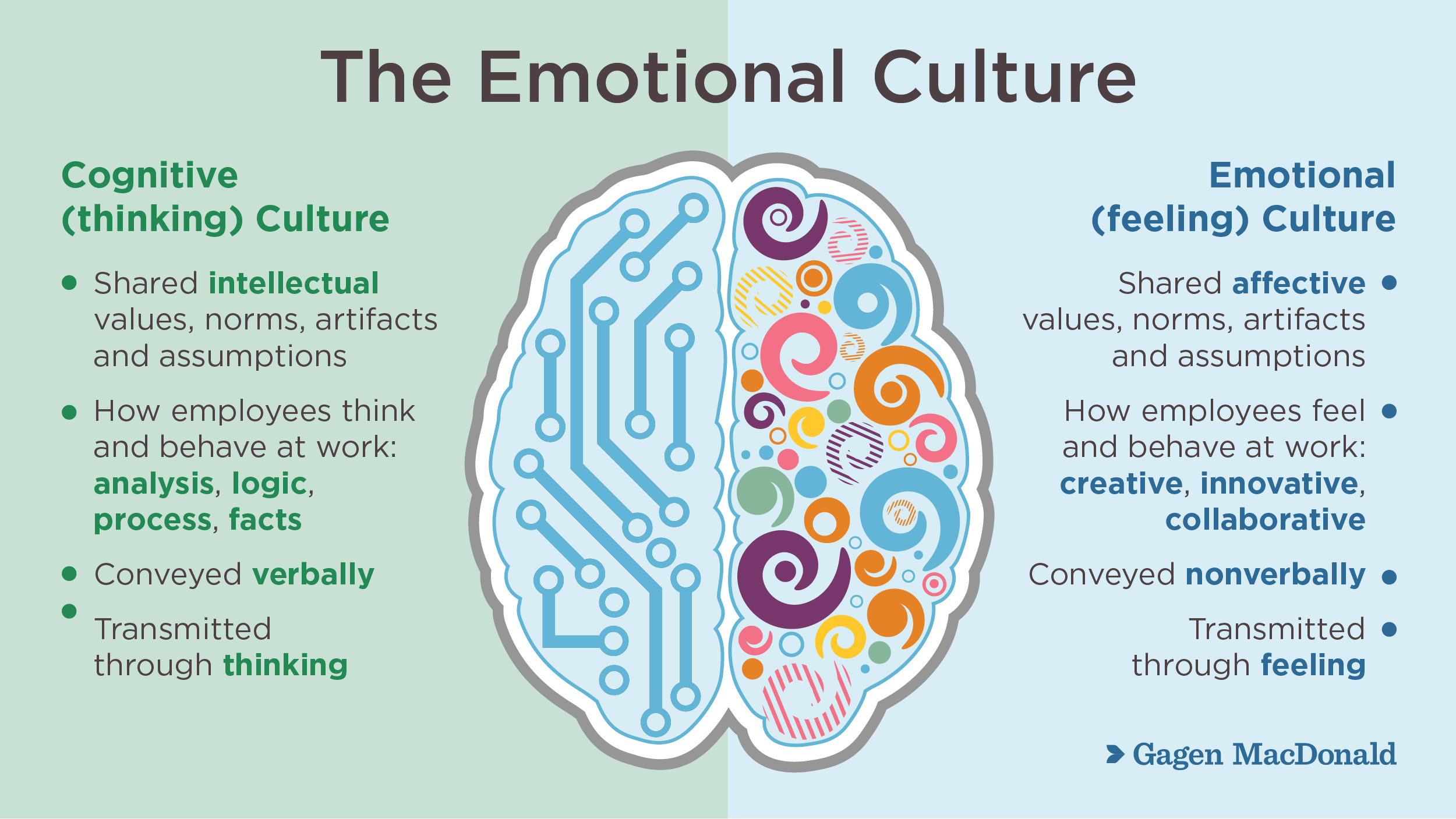
Exhibit the feelings you desire to develop
Numerous studies on the topic of emotional contagion demonstrate that members of a group can “catch” the emotions of others by modelling their behaviour, which leads to alterations in brain chemistry. You’re considerably more likely to foster an environment of joy if you often enter a room grinning and animated than if you maintain a neutral countenance. Your staff will reciprocate with a smile and begin to mean it.
However, unfavourable emotions also spread like wildfire. If you constantly display frustration, your team members, their team members, and so forth will all become infected with that emotion. You’ll have established a culture of frustration before you know it.
Group members “catch” one other’s emotions
In order to foster the feelings you want in your workplace, deliberately model them. Some businesses go a step further and specifically request that employees convey particular feelings. Embrace contagious enthusiasm to spread happiness, advises Ubiquity Retirement + Savings. Own your happiness and share it. Enjoy your work and share the contagious spirit, advises Vail Resorts.
Encourage people to “fake it until they make it”
Employees can still contribute to preserving the emotional climate of their workplace even if they don’t feel the ideal feeling at a given time. This is due to the fact that emotions are expressed both naturally and purposefully at work. Research in social psychology has long demonstrated that people often imitate others’ emotional expression in an effort to fit in and be liked. So, even if their initial motive is to be compliant rather than to internalise the culture, employees in a strong emotional culture who would not normally feel and express the valued emotion will start to show it.
This helps the entire organisation, not just the people who are trying to succeed there. Strategic emotional expression was discovered to promote group cohesion in early anthropological investigations of group rituals by displacing individual feelings and coordinating interpersonal interaction.
Cultural Artifacts
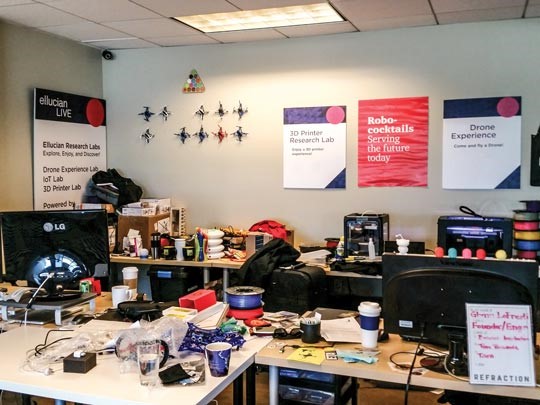
The physical environment of a company can give employees subtle or overt clues about their feelings.
Therefore, upholding the right culture often requires putting aside how you are really feeling. Employees might show the desired feeling by “surface acting” without even wishing to feel it. But surface behaviour won’t work in the long run. According to research, it may eventually result in burnout, especially if there is no place to express one’s real emotions.
“Deep acting” is a more effective method of fostering a desired emotion. With this method, people concentrate on feeling a specific way, and then all of a sudden, they do. Consider a scenario where a worker at an accounting firm requests a week off due to a family emergency during the busiest time for tax audits. Even if his boss’s first reaction is to say “No, not now,” she might use deep acting to transform her justified stress into genuine care for her employee. She made a concerted effort to sympathise, adding, “Of course you should go be with your family!” and exhibiting the same facial expressions, body language, and vocal tones she would exhibit when truly experiencing such emotions. Additionally, she would be setting an example of desired behaviour for the employee and the rest of the team.
Thankfully, all of these strategies for fostering an emotional culture—whether they entail genuinely experiencing the emotion or simply acting in that manner—can reinforce one another and solidify the cultural norms. No one has to act for the rest of their lives. Emotional contagion causes those who initially exhibit an emotion out of a desire to fit in to eventually feel it. Additionally, they will be rewarded for adhering to the rules, increasing their propensity to exhibit the emotion once more.
Of course, if people genuinely hold the beliefs and presumptions that underlie the culture, it will be considerably stronger and more likely to remain. A person who feels uncomfortable with an organization’s emotional culture and must maintain a façade in order to succeed would probably be better off finding a new job. Since organisations frequently have many emotional cultures, a different unit or division might be a better fit. However, if the company’s culture is uniform, an individual could choose to quit completely.
Implementation Is Important at Every Level
Emotional culture should be supported at all organisational levels, just like other facets of organisational culture. Top management’s job is to steer it.

Case Study
Leaders frequently lack sufficient awareness of their role in fostering an emotional culture. The creator and CEO of WorldBlu, a consultancy business that deals with fear at work, is Traci Fenton. She offers this illustration: Unbeknownst to the CEO of one Fortune 500 business, top staff frequently utilise text message codes to explain his angry nonverbal cues during meetings. “RED” denotes that his face is becoming redder. “VEIN” indicates that his veins are protruding. Assume the crash position, or “ACP,” signifies that he is about to begin throwing items. Although it’s definitely not the culture he wants, this leader is exceptionally skilled at fostering an emotional environment.
Therefore, don’t undervalue the significance of daily modelling. The effectiveness of large, symbolic emotional gestures depends on how well they mesh with routine behaviour. Through organisational practises, senior executives can also influence the emotional climate of a company. Consider “compassionate firing,” which is typical at businesses that cultivate a strong companionate love culture.

Case Study
Lattice Semiconductor’s vice president of R&D systems, Carlos Gutierrez, was extremely worried about how layoffs might affect his staff. He understood that ordering fired workers to quickly clear their desks and leave the building would be particularly upsetting to those who had worked beside one another for ten to twenty years. He established a routine with his colleagues in HR and R&D so that workers had extra time to say goodbye to one another and reflect on their experience working together at the company. Sherif Sweha, the corporate vice president of R&D, also felt that it was crucial for the affected team members in each location to hear the news directly from a top leader, despite the fact that two-thirds of the R&D staff are located outside of the United States. He and his colleagues then travelled to the company’s locations in Asia to meet with all the employees who would be let go as well as those who would stay on.
Although top management defines the formal standards and sets the precedent, frontline supervisors and intermediate managers make sure that the emotional values are regularly upheld by everyone else. The advice for senior executives also applies to those managers because their immediate superior is one of the main influences on employees: They ought to make sure that their emotional expressions at work match the selected culture, and they ought to be clear about the standards they hold for workers.
It’s crucial to connect operations and procedures, like as performance management systems, with the emotional culture. The culture of pleasure has been incorporated into Vail Resorts’ yearly assessment, which assesses each employee on how well they bring fun into the workplace and on supporting behaviours like being inclusive, friendly, approachable, and positive. A person who goes above and beyond is said to participate in the fun as well as provide “recommendations to improve the work environment to integrate enjoyment.”
Although decades of research have shown the value of organisational culture, the majority of it has concentrated on the cognitive aspect. As we’ve demonstrated, organisations too have an emotional pulse, which managers must regularly monitor in order to inspire their staff and accomplish their objectives.
How all employees behave on a daily basis, from the top levels to the front lines, shapes the emotional culture of the organisation. However, it’s up to top executives to decide which feelings will promote the success of the company, to act in accordance with those emotions, and to reward others for doing the same. Businesses who do this stand to win greatly.

Exercise 1.9: Accepting Your Emotions
• Split your group into pairs, and have them sit apart from one another so they feel private.
• Let each duo choose one of them to go first.
• Explain to the group that each person will have the opportunity to relate a time when they felt like a victim. After one spouse has described the experience, the other partner should describe how they felt as a result of the encounter in as much detail as they can, taking into consideration both their immediate sensations and how it affected them later.
• After the first partner has shared and the duo has had a chance to debate for around 15 minutes, have them trade places.
•Bring everyone back together if you are doing this activity in a group and lead a discussion using inquiries like these:
o How did you share it, exactly? How did it make you feel to tell someone else?
o How did you feel when you accepted and acknowledged your feelings?
o Does this exercise aid in accepting how various events make us feel and that it’s acceptable to have certain feelings in response to unpleasant situations?
o Did embracing the feelings brought on by your experience make you feel more at peace?
Would you think about assessing and acknowledging your emotions following unpleasant situations using this exercise?

Course Manual 10:Increasing Positivity
How to Boost Your Positive Ratio
We’ve known for a long time that “positive thinking” can help us focus on what is going well, keep a less bleak perspective on the challenges we are facing, and put things in perspective, among other things. Positive thinking can backfire if we are trying to force ourselves to suppress thoughts that we experience, overlook potential hazards in a situation we encounter, or act in a way that feels phoney, according to researchers and psychologists. This has brought forth a focus on optimistic thinking with an emphasis on genuineness, which is effective for reducing stress.
How to Calculate the Positivity Ratio
There are other, maybe more potent ways that positive thinking operates that are less evident. When it comes to the overall benefits of positivity, researcher Barbara Fredrickson has found that there is a threshold beyond which our good feelings and mental health can make us more imaginative, motivated, and stress-resistant. When we cross this threshold, our outlook becomes more expansive in general; we notice opportunities we may have overlooked and think we can turn them to our advantage. Additionally, we are more aware of and appreciative of the beauty in the world. We become more adept at handling stress in general, making it less likely that we will descend into a reactive downward cycle.
Do We Need a Lot of Positive Thinking?
More specifically, we reach a tipping point where we experience a “upward spiral” of positivity and everything seems to fall into place for our emotions and performance when our moods are positive three times more than they are negative, or if our positive-to-negative ratio is three-to-one.
You can incorporate pleasant events into your life by concentrating on developing a 3:1 ratio for yourself.
Even if they are rewarding in and of themselves, these can provide you so much more.
You may improve your capacity to enjoy life generally and look for even more of these wonderful experiences by developing moments that make you feel hopeful, appreciative, valued, inspired, awestruck, and just plain joyful.
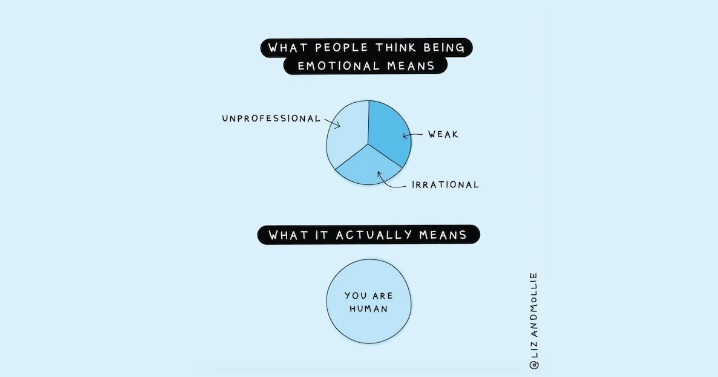
What Increases Ratio
If you are familiar with arithmetic, you probably already know that there are two major ways to boost your positivity ratio: by reducing the number of negative experiences you have (decreasing the denominator) and by increasing the number of positive ones (increase your numerator). When we discuss great and negative experiences, we mean those that make you feel this way. Numerous experiences might be interpreted as either beneficial or unpleasant depending on a host of individual characteristics. This indicates that, if you know how, it is occasionally possible to turn a “bad” experience into a “good.”
Concerning Positive Thinking
Positivity may be increased in a variety of ways, and one effective strategy is to change your perspective to think more positively. Finding the good in a situation, giving it a personal significance, and recasting a danger as a challenge are all proven techniques. As was already noted, it’s crucial to understand that trying to suppress genuine unpleasant emotions or pretending that something is positive when you’re not feeling it might backfire and, ironically, make you feel more anxious rather than less.
One reason why this happens is that you can believe that you “should” be having more pleasant experiences and that the fact that you aren’t demonstrates your failure to do so. Another reason it may feel unauthentic to try to force yourself to feel positive when you are strongly feeling negative is that our emotions frequently serve important functions. Ignoring your intuition or emotions when these functions are significant and your feelings are trying to communicate something to you may result in psychological dissonance. Sometimes the best course of action is to deal with the stressor directly.
Instead of trying to persuade yourself that you feel differently about something that is making you understandably unhappy, it is crucial to concentrate on components of a scenario that you actually feel are beneficial when working on feeling optimistic. Walking this line is tricky.

Case Study
Experiences in a Detroit Chemical Plant – The Advantages of Training in Mindfulness
R. W. Montgomery, the owner of a chemical business in Detroit, realized in 1983 that his workers weren’t performing their jobs effectively or productively. Stress was a problem, but the workers were also having physical problems. High levels of absenteeism, reduced productivity, and soaring health care expenses were the consequences of this.
52 of the company’s 100 employees, including managers and line workers, will receive training in meditation thanks to Montgomery’s decision to pay for it. Before starting work and again in the afternoon for 20 minutes, each of the 52 participants meditated.
Employees claimed they had more energy, were more resilient, and their physical ailments had improved in just three months. The outcomes got significantly better during the following three years. Profits soared by 520%, absenteeism dropped by 85%, productivity climbed by 120%, injuries decreased by 70%.
According to Montgomery, “People enjoyed their work, they were more creative, and they were more productive” as a result of the meditation instruction. “If you do this,” I advise businesses, “you’ll see a return on your investment in a year.”
Montgomery’s experience provides more proof that mindfulness techniques improve workers’ capacity for concentration. Resilience, well-being, and creativity are all enhanced by mindfulness. Businesses can innovate and boost bottom line profitability by eschewing the traditional methods of operation and adopting the cutting-edge practices of mindfulness and meditation.
How to Apply This Knowledge to Your Life
The “positivity ratio” method of stress management has been discovered by many people to feel incredibly empowering. This is because it gives us a sense of control, and we feel less anxious when we feel like we have control over our circumstances. Although we often have no influence over our environment, we do have control over how we react to it. We can react from a position of power and inner serenity when we believe that we have options and resources. Adding enjoyable experiences to our life is far more within our power than, frequently, averting stressful ones. Here are some easy techniques to improve your positivity ratios in light of that.
Plan beforehand.
You might not wake up enthused about the day ahead when you’re worried or just a little unhappy as you would if you were feeling better about things. In fact, you might be taking a more pessimistic view of events and making choices that result in more of the same, which is referred to as a downward cycle of negativity. With a straightforward strategy, things may frequently be made better.
Making a plan might help you feel more in control of your situation and ease into your day with more optimistic expectations. The actual approach may involve reducing stressors (dropping your numerator) or extending the period of time you spend experiencing pleasant emotions. By making plans in advance, you can either add enjoyable events to your day or think about cancelling things that can contribute to your stress level.
Keep an appreciation notebook.
Maximizing the pleasant experiences you already have in your life is one method to improve your ratios.
By appreciating your good feelings, you can make them last longer. By writing in your notebook about the things you are thankful for, you may strengthen your attention on the things that bring you joy.
You form a habit of focusing on things that make you happy and uplift your mood when you start or end each day by listing three things you are grateful for that day. Additionally, you increase the automatic nature of thankfulness. Keeping a thankfulness diary has the extra benefit of leaving you with a written record of all the things you have to be grateful for in life. According to studies, keeping a thankfulness notebook might improve your resilience and mood over the long term.
Observe your mood.
You might not notice a change in your mood until you start to feel the impacts of a ratio that is less than three to one when you become stressed regularly and your ratios start to change.
Even though it can seem obvious, being aware of your mood is crucial for your resilience and long-term enjoyment. You can start making things better for yourself right away if you realise that you’ve been feeling pressured for a few days and are beginning to detect the telltale indicators of a reduced ratio. This can stop things from going wrong before increasing your ratio gets challenging.
Embrace yourself.
Pleasures are behaviours or events that are physically or emotionally pleasurable, according to positive psychology researchers.
They are simple activities that instantly improve your mood, such as eating a cookie, taking a bath, or appreciating a nice music. Pleasures are simple to incorporate into your life and can help you feel happier. It’s crucial to understand that using pleasures frequently typically results in a somewhat decreased level of good experience, so switching them up is ideal. Only utilise the same pleasures every day if they actually still provide you the same amount of delight. The ideal strategy is to rotate your joys, which is still a straightforward and efficient method to make the most of your day.
Have some habits: While it can be challenging to think positively every day, developing routines that uplift your mood is easier. This is because altering our behaviour is frequently simpler than altering our ideas. You can add positive experiences to your day and higher levels of optimism to your habitual way of thinking by incorporating some regular routines that will raise your mood, such as a morning workout, a daily nature walk, or a phone call to a close friend. From then, the practise of thinking positively can develop.

Discover a few surprises.
Even the best experiences might become routine to the point where we take them for granted without even recognising it.
It is advantageous to have some variation in your day for this reason. Try to include something fresh that you’ll appreciate and isn’t a part of your routine when you arrange your day in the morning. Your enjoyment of an experience will be increased if it is brand new.
Use time-tested methods.
It also helps to incorporate the things that actually make you happy and comfortable into your daily routine. Make sure to include your passions into your daily life as much as you can, whether it’s via exercising on the same route, watching the same comedy at night, or eating your go-to meals. The 3-to-1 ratio might become a regular part of your life.

Exercise 1.10: Self-Awareness Activity
• Creative
• Confident
• Positive
• Funny
• Curious
• Imaginative
• Hard-working
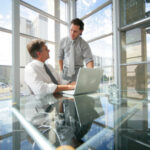
Course Manual 11:Resilience
Have you ever wondered what makes a successful person at work?
You probably think that the secret to success at work is intelligence or going above and beyond the requirements of the position, such working extra long hours or taking on extra duties, like many other people do.
Success in today’s workplaces, which are marked by staff reductions, deadlines, competition, and organisational change, depends on a person’s ability to handle stress and even flourish under it.
Resilience can be defined broadly as the capacity to “bounce back” from difficulties that are an unavoidable part of life. Employees are exposed to a variety of pressures at work. What does workplace resilience entail? Why does it even matter? Can people actually become more resilient?
The intriguing aspect of resilience is that it can be learned. Resilience may be taught through practise, just like any other skill. This article discusses workplace resilience and offers practical advice on how individuals might be more resilient at work. It will explain what is meant by “resilience in the workplace,” give some examples of how individuals might create their own resilience at work, and then look at techniques to strengthen resilience.

What Does Workplace Resilience Mean?
Think of a location of work that is undergoing significant change. It is reasonable to assume that the impact of this continual stress would be harmful to the personnel. After all, it might be their future. Two management consultants conducted a study to investigate this exact occurrence.

Case Study
Research Completed
S. Maddi and D. Khoshaba conducted a twelve-year study on workers at a significant US telecommunications corporation at a time of deregulation of the sector. Jobs were on the line, and the corporation was undergoing rapid change. What the research revealed was most unexpected, though.
Nearly 50% of the employees lost their jobs throughout the twelve-year research period, and a further two-thirds faced substantial stressful life events (including divorce, mental health issues like depression and anxiety, and heart attacks). Despite this, one-third of the employees not only made it through the immense challenge they encountered, but thrived!
In their book, “Resilience at Work: How to Succeed Despite Life’s Challenges,” According to Maddi and Khoshaba’s (2006) study, those who kept their jobs advanced to the top, while those who were unfortunate enough to lose them either launched their own businesses or obtained “strategically significant” jobs in other organizations.
Dynamic Resilience
What does this study’s analysis of workplace resilience reveal? What can we infer from this study, to put it another way? Resilience is a dynamic, ongoing process. The Centre for Confidence and Wellbeing (2006) states that:
‘the good news is that although some people seem to be born with more resilience than others, those whose resilience is lower can learn how to boost their ability to cope, thrive and flourish when the going gets tough’. Resilience can therefore be improved!
It has been discovered that the personality attribute of hardiness can buffer or decrease the negative impacts of stressful situations or adversity (Jackson, Frito, & Edenborough, 2007). It is feasible to pick up habits and techniques that will make you more resilient. Furthermore, it is feasible to enhance and develop personal resilience by creating efficient tactics for lowering sensitivity to stress and the effects of adversity.
Consider what resilient individuals do when faced with professional difficulty to have a better understanding of what resilience in the workplace entails. This will help you stand out from the competition. What specifically do these workers do differently?
Resilient Workers
Strong connections and partnerships are forged between resilient workers and others (Davis Laak, 2014). There are several characteristics that can be used to describe these high-quality connections. Effective communication, in which a person actively listens to their colleague and is receptive to their feelings, is what makes connections (Davis Laak, 2014).
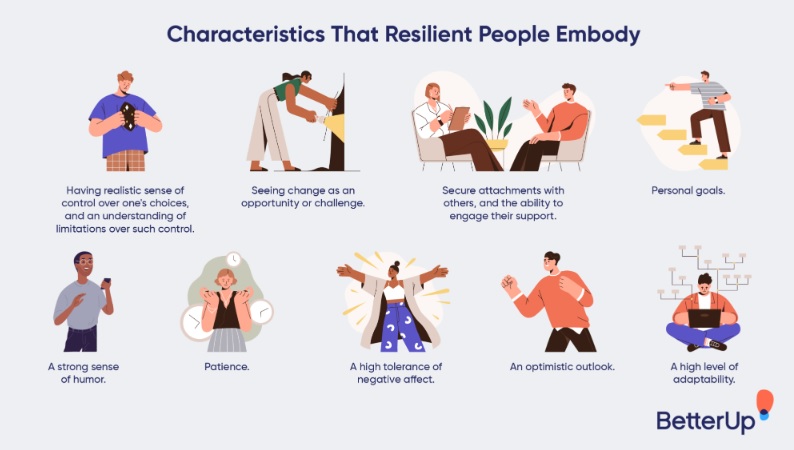
A resilient worker will do their best in positive working interactions to support their coworkers’ achievement. A win-win situation for both parties is what the resilient worker strives for with their coworkers.
Social support is crucial for workplace resiliency (Jackson, Firtko, & Edenborough, 2007). It is advantageous to build personal and professional networks, as they can serve as a source of direction and support through trying times or simply as nurturing relationships.
Additionally, it is advantageous for workers to interact with coworkers outside of their immediate working environment. When seeking assistance from coworkers might put the worker at risk, these individuals may be able to provide confirmation and be reached by the individual (Jackson et al., 2007).
Employees that are resilient take care of the professional networks they have created and continually foster interpersonal trust. Unexpectedly, the study discovered that resilient workers don’t take their workplace too seriously. They add a “play” component to the workplace, which encourages more uplifting feelings among the workers.
Stress is undoubtedly a hallmark of contemporary employment. For many people, work is a continual presence because to technology and easy access to the Internet. One no longer chooses a career and remains in it for the entirety of their working life. Effective stress management skills enable resilient workers to prevent stress from becoming overpowering and harmful (Davis Laak, 2014).
Resilient workers prevent “burnout” by regularly practising self-care and nourishing themselves in the wake of a stressful event, no matter how minor.
Being true to one’s “actual” self is yet another quality of a resilient employee (Davis Laak, 2014). They exhibit authenticity and conduct themselves in accordance with their ideals and ideas. They “do what they preach,” if you will. They exhibit grit.
Describe Grit.
Grit is the combative mentality that distinguishes some workers. It can be summed up as “having the zeal and tenacity to pursue your long-term goals” (Davis Laak, 2014). However, if an individual has tenacity and is working to reach difficult goals, they will almost surely run into challenges. When this happens, employees have the chance to demonstrate their resilience, which is necessary to go through these obstacles.
Resilient workers differ from others in part based on how they view their work and regular responsibilities. These employees consider their employment to be meaningful (Davis Laak, 2014). It should come as no surprise that those who feel that they are working toward a worthwhile goal would be better able to recover when times at work are extremely trying.
Examples include doctors who view their work as improving patient health outcomes rather than ‘fixing’ a medical issue. Resilience includes maintaining an optimistic outlook at work.
Employees that are resilient do, of course, suffer stress. There are many pressures at work, and stress is an inevitable part of life. However, a trait of resilient employees is that they will keep an eye on their own thoughts when under pressure and stress (Davis Laak, 2014).
Resilient workers observe specific patterns in their thinking that may be hindering their chances of achieving professional success by acting consciously (Davis Laak, 2014). This awareness encourages the ability to handle stress and unforeseen difficulties.
The nature of modern workplaces is change. Employees are required to be adaptable and flexible due to the nature of the workplace. It is believed that resilient workers are better able to handle unforeseen changes and handle unfamiliar situations. Additionally, they are better at handling setbacks and are able to continue once they hit a roadblock.
Why is resilience crucial?
One of the most important life skills, resilience is rooted in the survival of humankind. Adaptiveness is the capacity to handle pressure and unforeseen difficulties, and even to thrive in them. Nobody is surprised by this. What about the office setting? Why is resiliency so crucial in the workplace?
To begin with, stress permeates workplaces. Workplace stress has an impact on performance and personal results (Rees, Breen, Cusack, and Hegney, 2015). Furthermore, high levels of anxiety, despair, and burnout are linked to job stress (Rees et al, 2015).
Pines and Maslach first described the impacts of a stressful job in 1978. They coined the term “burnout” to characterise a condition in which individuals feel physically and emotionally exhausted, depersonalised, and have a poor feeling of personal success.
Workplaces suffer greatly from burnout, both financially and in terms of productivity. In addition to the detrimental effects it has on employees, burnout is linked to higher absenteeism rates and lower productivity. Employees that are psychologically resilient are better equipped to handle stress and are less likely to experience “burnout.” This obviously benefits the employer!
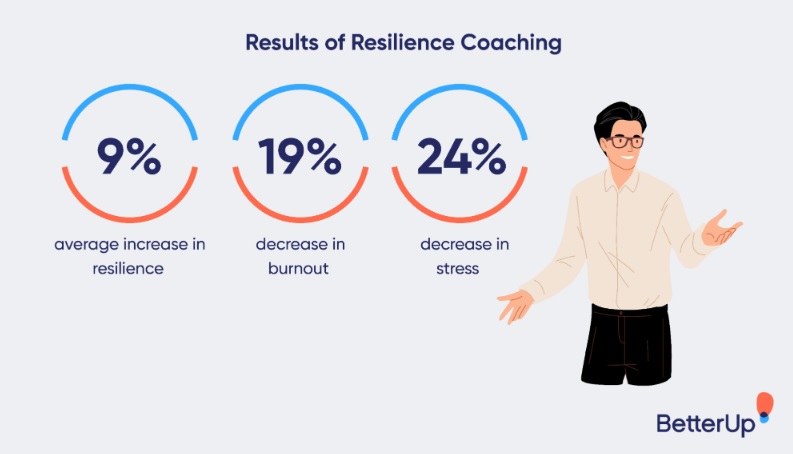
Resilience has been linked to a number of positive emotions, such as optimism, zeal, curiosity, vitality, and openness to new things (Tugade & Fredrickson, 2004). The workplace greatly benefits from these favourable emotional states. Fredrickson (2004) made the case that happy emotions produce ‘thought-action repertoires,’ which in turn produce a desire to think or act in a particular way, in addition to the more immediate benefits of positive states.
In other words, the experience of positive emotions (fostered by resilience) can increase activity, broaden an employee’s perspective on a variety of options, and improve the chance of more innovative responses to behaviours at work (Fredrickson, 2004).
Additionally, happy feelings act as a “buffer” against work-related stress (Tugade & Fredrickson, 2004). How? Positive emotions, then, help people to view positively what might otherwise have been a difficult scenario.
Additionally, people who have positive affect are more likely to adopt problem-focused coping, which is very advantageous in the workplace. People have a tendency to see seemingly regular occurrences and experiences as positive when they are feeling more upbeat. Positive feelings therefore promote positivism at work.
Resilience is crucial for several reasons, including its effects on psychological aspects including burnout, adaptive workplace behaviours, and stress-reduction strategies. Physical well-being has also been linked to resilience. The psychological perspective associated with resilience, according to Tugade and Fredrickson (2004), “is reflected in the body as well.”
Employees will obviously be better able to perform their duties and, as a result, will be better able to further adjust to hardship if they are in better physical health. A win-win situation exists.

Exercise 1.11: Temperament Analysis
• Genetic Transmission
• Physical characteristics
• life experiences
• environmental factors
1. Summarize your temperament in three words. Pick the ones that best describe you.
2. Name three adverbs that people would use to characterize your temperament.
3. Examine each of the adjectives mentioned in the previous two questions to determine whether or how much it is influenced by environmental factors, physical characteristics, life experiences, or genetic inheritance.
4. How do the various temperamental traits personally impact you?
5. How do the temperamental traits affect you in your capacity as a leader?
6. Specify which of these elements you want to alter and why.

Course Manual 12:Team Performance
The Positivity Ratio as a Tool for Boosting Team Performance
Business executives devote a great deal of time, resources, and effort to discovering the key to successful teams. According to conventional thinking, the most brilliant and intelligent individuals make the best teams. That’s not the case, though.
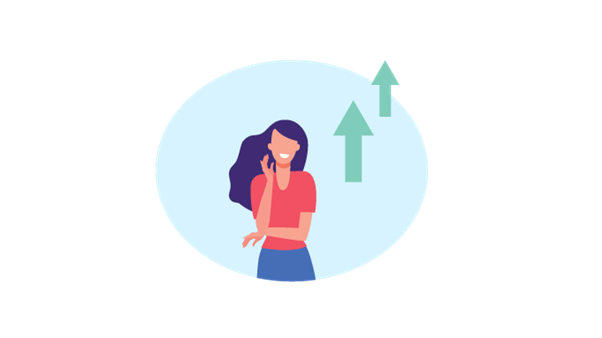
Google studied effective teams for two years.
The research effort known as Project Aristotle yielded results that questioned the conventional wisdom about how well teams perform. That raises the query, “What really constitutes a high-performing team?”
What they discovered implies that psychological safety, or the conviction that taking a risk won’t result in punishment, is a key component of high-performing teams. Teams with high psychological safety allow members to experiment, ask questions, and admit mistakes without worrying about being shamed or reprimanded.
Meaning is another essential element, which can be promoted via good comments and open thankfulness. This idea is supported by research by Marcial Losada and Emily Heaphy, which identifies a particular ratio of positive to negative emotions in the workplace known as the Losada Ratio, also known as the Positivity Ratio. The term “Positivity Ratio” originates from the study of human flourishing in all facets of life, which is known as positive psychology. But how can a group use the Positivity Ratio to boost productivity?

Expand and Develop
Positive emotions, according to research, do more than just make us feel good; they also help us develop and strengthen our mental and physical capacities.
But let’s start with the bad feelings. It’s crucial to remember that every person, including workers, feels bad sometimes. And in really, that’s not all that horrible!
Negative emotions play a huge role in evolution, strictly speaking. Imagine you and your fellow cavemen are strolling through the savannah when you suddenly see a saber-toothed tiger charging your way. You’re terrified. Your body gets ready to run full-speed in the opposite direction as a result of that fear. In this situation, you experience fear a little bit earlier than your least favourite fellow caveman.
You’ve heard the adage, “You just need to outrun the slowest guy in the group; you don’t need to outrun the saber-toothed tiger.” In this case, unpleasant feelings led to a successful outcome in the shape of survival.
Fear, a negative emotion, kept you alive. Ever get into high gear as a significant work deadline neared? You can develop superhuman spreadsheet writing abilities under this kind of stress!
Positive emotions, but in distinct ways, also prime the body and brain, according to study. Our capacity to think, create, innovate, and produce increases when we feel good emotions. As a result, there is an improved ability to develop skills, support health, and strengthen social connections. Feeling good improves our capacity for imaginative and prosocial conduct, including brainstorming, teamwork, and sharing.
The positivity ratio can be found
How much of a good thing is the proper quantity, given that we now know that pleasant emotion is, well, a good thing? Thankfully, Fredrickson and Losada also looked into this.
Negative emotion has a purpose, as was already established, therefore attempting to completely eliminate it from your life is a one-way trip down the cortisol highway of ongoing stress. That’s just a fancy way of stating it’s impossible in terms of neuroscience.
Fredrickson and Losada asked, “What ratio of happy to negative emotional experiences do the happiest people have?” in light of this.
Sixty corporate teams were observed during countless sessions, and thousands of behaviours were statistically coded. The actions were then separated into three groups, or “connectivity ratios,” by the researchers: self vs. other attention, advocacy vs. enquiry, and negativity vs. positivity.
The findings revealed that the negative teams indicated optimism at a ratio of 0.365 to 1. They did indeed show more negativity than positivity. Additionally, these teams demonstrated a notable disparity between self-centeredness and individualism. The Positivity Ratio for average teams was 1.875 to 1.
With a Positivity Ratio of 5.625 to 1, the best clubs outperformed the rest of the field. That means he hears and feels nearly six “Good on ya’s” for every “Johnny this report is completely wrong.”
Where then is the breaking point? Positive emotions are reported to be at least three times more frequent than negative emotions in those of us who experience the highest levels of happiness, or what experts refer to as “human flourishing.”
Translation? To feel like you’re living and not just surviving, you’d need at least three positive experiences for each time you dash by Odo to avoid a developing saber-souffle.
How to improve your Team’s positivity
It turns out that even when we punch in at work, we are still human beings. Amazing, huh? Therefore, both within and outside of the workplace, the Positivity Ratio is crucial. Our earlier researcher, Fredrickson, and Losada, proved it.
Why should I care? Because having contented staff actually gives you a competitive advantage. According to research, happiness increases sales by 37% and business productivity by 31%.
Here are three suggestions to get you going:
1. Educate your supervisors
At least 75% of workers claim that their “unhealthy connection” with their supervisor led them to leave their position rather than the job itself.
The most efficient strategy to lower turnover and raise engagement in the workplace may be to train managers to be positive leaders.
You already know what I’m going to say after that, if you’re reading my mind: educate managers about the Optimism Ratio and give them easy-to-use tools for bringing positivity into their daily contacts.

2. Be particular
The brain of a human being can easily adjust to repetition. It means a lot the first time you go out of your way to praise everyone for their work in your office. It has somewhat less significance on the second day. And for what exactly are you thanking them? It could appear to be an empty compliment to your staff.
Effective praise is relevant, timely, particular, genuine, and produces pleasant emotion.
The same guidelines hold true for constructive criticism.
3. Involve the entire team.
You almost make an audible moan.
“This all sounds fine, but how is a manager supposed to give every employee at least three happy experiences each day?” Not at all. Unless you have the speed of an auctioneer, that is. and take off like The Flash. Additionally, you don’t complete any of your own work.
What then should a manager do? The good news is that great experiences are contagious regardless of their source. Participate in the Positivity Ratio as a group!
Encourage and educate each member of your team to look for methods to bring positive experiences to work each and every day.

Case Study
To find out what makes the 21 best firms to work for different, the Harvard Business Review sent researchers to visit each.
They observed that the businesses they visited observed significant life-cycle transitions and shared exceptional celebrations. Birthdays are treated as paid holidays by BambooHR. Insomniac Games offers expectant parents a personalized onesie, art books, toys, and a baby satchel to aid in keeping track of their newborn’s information.
The sampled companies are also active socializers from the start until retirement. Their social gatherings are not “funishments,” as one Health Catalyst employee put it; they are not infrequent, manufactured team-building activities that participants are compelled to participate in and to enjoy. Instead, regular and spontaneous occurrences form the joints and connective tissues of teams, allowing members to move swiftly and in sync. BAF supports staff participation in clubs like kickball, sand volleyball, and bowling, funds monthly outings to baseball games, comedy clubs, and off-Broadway performances, and hosts sizable family events like their summer entertainment jamboree and Halloween pumpkin patch festival. Regeneron hosts numerous company-wide celebrations of scientific advancements throughout the year, including holiday parties, cheesy Hawaiian shirt day, summer barbecues, spring flings, and barbecues.
These social pursuits may seem counterproductive to productive work and, to others, pointless wastes of time. But creating enduring partnerships takes genuine effort. The finest businesses understand the need of strong social links and personal affinities as preventative measures against team failures and drivers of superior team performance.

Exercise 1.12: Card Pieces
• Enough individuals to form at least three pairs of teams.
• Playing cards: each individual should have four to six.
• A personal space.
1. Divide each playing card diagonally in half, then cut each half in half again, creating four triangular pieces for each card.
2. Combine all the components, then distribute the same number of cards into each envelope as there are teams.
3. Assign individuals to groups of three or four. At least three teams are required. Teams of two will function equally well if you’re low on personnel.
4. Distribute playing card pieces in an envelope to each team.
5. Each team has three minutes to arrange its parts, decide which ones are necessary to create full cards, and formulate a negotiation plan.
6. Permit the teams to begin haggling for objects after three minutes. Either individually or collectively with their team, people can barter. Allow each team eight minutes to haggle.
7. Count the finished cards from each team when the timer goes off. The round is won by the team with the most cards.
• Which negotiation tactics were successful? Those who didn’t?
• What could they have improved upon?
• What other abilities, such as empathy or active listening, did they need to employ?
Project Studies
Project Study (Part 1) – Customer Service
The Head of this Department is to provide a detailed report relating to the 24hr Emotions process that has been implemented within their department, together with all key stakeholders, as a result of conducting this workshop, incorporating process: planning; development; implementation; management; and review. Your process should feature the following 12 parts:
01. Positivity Ratio
02. Emotion Importance
03. Workplace Emotions
04. Positive Emotions
05. Negative Emotions
06. Emotional Triggers
07. Emotional Control
08. Group Emotional Intelligence
09. Emotional Culture
10. Increasing Positivity
11. Resilience
12. Team Performance
Please include the results of the initial evaluation and assessment.
Project Study (Part 2) – E-Business
The Head of this Department is to provide a detailed report relating to the 24hr Emotions process that has been implemented within their department, together with all key stakeholders, as a result of conducting this workshop, incorporating process: planning; development; implementation; management; and review. Your process should feature the following 12 parts:
01. Positivity Ratio
02. Emotion Importance
03. Workplace Emotions
04. Positive Emotions
05. Negative Emotions
06. Emotional Triggers
07. Emotional Control
08. Group Emotional Intelligence
09. Emotional Culture
10. Increasing Positivity
11. Resilience
12. Team Performance
Please include the results of the initial evaluation and assessment.
Project Study (Part 3) – Finance
The Head of this Department is to provide a detailed report relating to the 24hr Emotions process that has been implemented within their department, together with all key stakeholders, as a result of conducting this workshop, incorporating process: planning; development; implementation; management; and review. Your process should feature the following 12 parts:
01. Positivity Ratio
02. Emotion Importance
03. Workplace Emotions
04. Positive Emotions
05. Negative Emotions
06. Emotional Triggers
07. Emotional Control
08. Group Emotional Intelligence
09. Emotional Culture
10. Increasing Positivity
11. Resilience
12. Team Performance
Please include the results of the initial evaluation and assessment.
Project Study (Part 4) – Globalization
The Head of this Department is to provide a detailed report relating to the 24hr Emotions process that has been implemented within their department, together with all key stakeholders, as a result of conducting this workshop, incorporating process: planning; development; implementation; management; and review. Your process should feature the following 12 parts:
01. Positivity Ratio
02. Emotion Importance
03. Workplace Emotions
04. Positive Emotions
05. Negative Emotions
06. Emotional Triggers
07. Emotional Control
08. Group Emotional Intelligence
09. Emotional Culture
10. Increasing Positivity
11. Resilience
12. Team Performance
Please include the results of the initial evaluation and assessment.
Project Study (Part 5) – Human Resources
The Head of this Department is to provide a detailed report relating to the 24hr Emotions process that has been implemented within their department, together with all key stakeholders, as a result of conducting this workshop, incorporating process: planning; development; implementation; management; and review. Your process should feature the following 12 parts:
01. Positivity Ratio
02. Emotion Importance
03. Workplace Emotions
04. Positive Emotions
05. Negative Emotions
06. Emotional Triggers
07. Emotional Control
08. Group Emotional Intelligence
09. Emotional Culture
10. Increasing Positivity
11. Resilience
12. Team Performance
Please include the results of the initial evaluation and assessment.
Project Study (Part 6) – Information Technology
The Head of this Department is to provide a detailed report relating to the 24hr Emotions process that has been implemented within their department, together with all key stakeholders, as a result of conducting this workshop, incorporating process: planning; development; implementation; management; and review. Your process should feature the following 12 parts:
01. Positivity Ratio
02. Emotion Importance
03. Workplace Emotions
04. Positive Emotions
05. Negative Emotions
06. Emotional Triggers
07. Emotional Control
08. Group Emotional Intelligence
09. Emotional Culture
10. Increasing Positivity
11. Resilience
12. Team Performance
Please include the results of the initial evaluation and assessment.
Project Study (Part 7) – Legal
The Head of this Department is to provide a detailed report relating to the 24hr Emotions process that has been implemented within their department, together with all key stakeholders, as a result of conducting this workshop, incorporating process: planning; development; implementation; management; and review. Your process should feature the following 12 parts:
01. Positivity Ratio
02. Emotion Importance
03. Workplace Emotions
04. Positive Emotions
05. Negative Emotions
06. Emotional Triggers
07. Emotional Control
08. Group Emotional Intelligence
09. Emotional Culture
10. Increasing Positivity
11. Resilience
12. Team Performance
Please include the results of the initial evaluation and assessment.
Project Study (Part 8) – Management
The Head of this Department is to provide a detailed report relating to the 24hr Emotions process that has been implemented within their department, together with all key stakeholders, as a result of conducting this workshop, incorporating process: planning; development; implementation; management; and review. Your process should feature the following 12 parts:
01. Positivity Ratio
02. Emotion Importance
03. Workplace Emotions
04. Positive Emotions
05. Negative Emotions
06. Emotional Triggers
07. Emotional Control
08. Group Emotional Intelligence
09. Emotional Culture
10. Increasing Positivity
11. Resilience
12. Team Performance
Please include the results of the initial evaluation and assessment.

Project Study (Part 9) – Marketing
The Head of this Department is to provide a detailed report relating to the 24hr Emotions process that has been implemented within their department, together with all key stakeholders, as a result of conducting this workshop, incorporating process: planning; development; implementation; management; and review. Your process should feature the following 12 parts:
01. Positivity Ratio
02. Emotion Importance
03. Workplace Emotions
04. Positive Emotions
05. Negative Emotions
06. Emotional Triggers
07. Emotional Control
08. Group Emotional Intelligence
09. Emotional Culture
10. Increasing Positivity
11. Resilience
12. Team Performance
Please include the results of the initial evaluation and assessment.
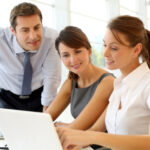
Project Study (Part 10) – Production
The Head of this Department is to provide a detailed report relating to the 24hr Emotions process that has been implemented within their department, together with all key stakeholders, as a result of conducting this workshop, incorporating process: planning; development; implementation; management; and review. Your process should feature the following 12 parts:
01. Positivity Ratio
02. Emotion Importance
03. Workplace Emotions
04. Positive Emotions
05. Negative Emotions
06. Emotional Triggers
07. Emotional Control
08. Group Emotional Intelligence
09. Emotional Culture
10. Increasing Positivity
11. Resilience
12. Team Performance
Please include the results of the initial evaluation and assessment.
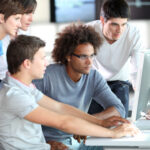
Project Study (Part 11) – Logistics
The Head of this Department is to provide a detailed report relating to the 24hr Emotions process that has been implemented within their department, together with all key stakeholders, as a result of conducting this workshop, incorporating process: planning; development; implementation; management; and review. Your process should feature the following 12 parts:
01. Positivity Ratio
02. Emotion Importance
03. Workplace Emotions
04. Positive Emotions
05. Negative Emotions
06. Emotional Triggers
07. Emotional Control
08. Group Emotional Intelligence
09. Emotional Culture
10. Increasing Positivity
11. Resilience
12. Team Performance
Please include the results of the initial evaluation and assessment.

Project Study (Part 12) – Education
The Head of this Department is to provide a detailed report relating to the 24hr Emotions process that has been implemented within their department, together with all key stakeholders, as a result of conducting this workshop, incorporating process: planning; development; implementation; management; and review. Your process should feature the following 12 parts:
01. Positivity Ratio
02. Emotion Importance
03. Workplace Emotions
04. Positive Emotions
05. Negative Emotions
06. Emotional Triggers
07. Emotional Control
08. Group Emotional Intelligence
09. Emotional Culture
10. Increasing Positivity
11. Resilience
12. Team Performance
Please include the results of the initial evaluation and assessment.
Program Benefits
Management
- Clear vision
- Defined responsibilities
- Effective teams
- Achieve goals
- Performance accountability
- Facilitate change
- Process improvement
- Increased effectiveness
- Standardized processes
- Project tracking
Human Resources
- Engaged employees
- Increased retention
- Improved brand
- Constructive culture
- Increased motivation
- Reduced stress
- Develop leaders
- Career development
- Increased recognition
- Inspiring leaders
Leadership Improvement
- Proactive decisions
- Performance measures
- Create culture
- Positive attitude
- Respectful behaviors
- Motivating environment
- Remove barriers
- Adopt vision
- Adopt strategy
- Create goals
Client Telephone Conference (CTC)
If you have any questions or if you would like to arrange a Client Telephone Conference (CTC) to discuss this particular Unique Consulting Service Proposition (UCSP) in more detail, please CLICK HERE.





